
- Huasco Valley
- San Pedro de Atacama
- Elqui Valley
- Antofagasta
- Limarí – Fray Jorge National Park
- Bahía Inglesa
- Alto El Loa
- La Serena and Coquimbo
- Copiapó Valley
- Tagua Tagua – Almahue Valley
- Alto Colchagua Universidad Glacier
- Cachapoal Valley
- Portillo Ski Resort
- Pirque and Maipo Valley
- Aconcagua Valley
- Valle Nevado Ski Resort
- El Colorado Ski Resort
- Curicó Valley
- Maule Valley
- San Antonio/Leyda Valley
- Colchagua Valley and Santa Cruz
- Casablanca Valley
- Viña del Mar
- Cajón del Maipo
- Robinson Crusoe Island
- Rancagua and Sewell
- La Parva Ski Resort
- Rano Raraku
- Llanquihue Lake
- Chillan Ski Resort
- Puerto Montt
- Osorno and Puyehue
- Valdivia and Corral
- Pucón and Villarrica
- Panguipulli
- Temuco and Lago Budi
- Arauco Territory
- Puerto Varas
- Chilean Antarctic Destination
- General Carrera Lake
- Tierra del Fuego
- Coyhaique and Puerto Aysén
- Carretera Austral
- Torres del Paine
- Puerto Natales
- Punta Arenas
- Family recreation
- Coastal beaches
- Lakeside Beaches
- Hot Springs
- Spa and relaxation
- Patagonian cruises
- Lake sailing
- International cruises
- Visits to observatories
- Astronomical facilities
- Indigenous Peoples and Ethnotourism
- World Heritage Sites
- Archaeology
- Paleontology
- Poetry and Literature
- Typical gastronomy
- Gastronomy of the world
- Hiking y trekking
- Skiing and snowboarding
- Mountainbike
- Horseback Riding
- Mountain and rock climbing
- Sport fishing
- Kitesurfing and water sports
- Ice walking
- Overland 4×4
- Paragliding and aerial sports
- Wildlife watching
- Landscape photography

National Parks
- Bird Watching

Updated the day 17 January, 2024
- Entry Requirements
Frequently asked questions
Requirements for entering chile.
As of May 9th, the Protected Borders Plan is no longer in effect. This means that the request for a PCR test and random tests in the entry to Chile are eliminated. A current vaccination certificate will not be required when entering Chile.
Chile opened several of its border crossings for tourists, including Santiago, Iquique, Antofagasta, and Punta Arenas airports. You can check the terrestrial open border crossings here: at this link .
The people who oversee this supervision are the authorities in charge of migratory control at airports, border controls, etc. (Policía de Investigaciones, mainly), and it will take place upon entry registration in the country.
Every foreigner who enters the country as a holder of a temporary residence permit must prove before the control authority that they have the legal means for survival that allow for their stay in the country during the period of validity of their permit, as well as that of people subject to their dependency who accompany them.
The way to prove the amount can be shown in different ways, including cash, a bank account statement, a credit card, etc.
Travelers shall have their Single Entry Form (FUI) , their round-trip ticket, and a reservation at a tourist service registered in SERNATUR or an invitation letter from the Provincial Delegation.
Protocols for your favorite attractions
The new post-Covid-19 tourism will demand strict standards of hygiene and sanitation of spaces, therefore, the invitation is to adopt these recommendations and adopt a new travel culture
PROTOCOLS FOR TOURIST LODGING
WHAT SHOULD TOURISTS DO TO COMPLY WITH THEM?
When you arrive and check-in…
- Observe the social distancing required.
- Allow establishment to take your temperature and disinfect your hands.
- Avoid exchanging papers, brochures, or pencils.
- Prefer digital pre-checking.
- Wear face mask at all times.
- Pay with bank card or via electronic transfer.
During your stay…
- Always remember to wear face mask.
- Wash your hands frequently. The hotel should have areas enabled to wash hands with soap or hand sanitizer gel dispensers.
- Leave keys or cards in the containers provided.
- Prefer activities or meetings in open spaces.
- Notify hotel staff if you have Covid-19 symptoms or suspect you have them.
When going to eat…
- Self-service should be kept to a minimum. Ideally, the tourist should not handle food.
- Ideally, buffet breakfast should not be available. If they cannot be eliminated, make sure that safety measures are available to implement.
Ski Centers
SKI CENTER GOOD PRACTICES GUIDELINES
- Ski centers have special structure and operation features; hence you will find that measures vary based on the activity.
- Observe the instruction of each establishment or activity. If, for instance, you go to a restaurant, the rules will be the same as those that are implemented throughout the country and observing allowable capacity, social distancing, use of face mask, and washing of hands is prioritized.
If you are at the establishment’s ticket office or entrance…
- Prioritize buying tickets online to help minimize overcrowding.
- Observe the minimum recommended distancing.
- Clean your hands. There will be hand sanitizer gel dispensers available in the ticket control area and throughout the center.
- Learn the rules implemented by the establishment.
- Remember to use snow gloves and “face mask type” protection suitable for the location, otherwise you will not be able to enter.
- Allow your temperature to be taken and complete the health self-survey.
- Locker rooms will not be available, arrive ready from home.
- Each center will have sanitization guidelines such as glove disinfection. Observe the instructions of the establishment’s instructors and staff.
Facilities or equipment rental…
- Rental services will only operate if physical distancing and maximum capacity are ensured and if entrances are controlled with unidirectional flow per station.
- Prefer contactless card payment.
- If there is a digital pre-rental plan available, use that option.
- Respect the minimum distancing established.
- Everything must be properly disinfected. You can help by avoiding touching objects with your hands.
Restaurantes and coffee shops
GASTRONOMIC SECTOR PROTOCOLS
WHAT SHOULD TOURISTS DO TO COMPLY?
- Do not enter the premises while at full allowed capacity.
- Let the establishment take your temperature and disinfect your hands.
When sitting…
- You should always wear face mask, but when taking it off to eat you should not leave it on the table.
- Remember that everything will be disinfected and you must observe the distance with whom you are attending. Menu will not be on printed paper.
- Observe the number of people allowed per table.
If you go to the restroom…
- Everything will be disinfected. However, avoid touching handles and faucets directly with your hands.
- Prefer drying with paper towel, which should be available to users.
When leaving…
- Prefer bank card or electronic transfer payment.
- Remember to wear face mask.
- Maintain social distancing and leave through approved exits.
The restaurant must sanitize tables after each customer use and make sure that all utensils are disinfected and ensure kitchen and restroom cleanliness. Ventilation of areas is the restaurant’s responsibility and recommended protocol must be followed in its entirety.
Adventure tourism
GOOD PRACTICES GUIDELINES FOR ADVENTURE TOURISM
WHAT MUST TOURISTS DO TO COMPLY WITH THEM?
In public service offices…
- Observe the number of people allowed inside.
- Make pre-reservations via digital channels or telephone.
- Allow temperature to be taken.
- Avoid exchanging printed material.
- Wash your hands constantly. Disinfectant dispensers should be available in the establishment.
During the activity…
- Notify if you have any Covid-19 symptom.
- If possible, buy travel insurance coverage for the type of activity.
- Number of people per group and capacity as per the recommendations of the health authorities. Observe them.
- Find information on the safety practices and restrictions of the company you are hiring.
- If you are in an enclosed area, remember to wear face mask.
GOOD PRACTICES GUIDELINES FOR CAMPING
Upon arrival…
- Remember that the use of face mask is mandatory.
- Observe the area’s entrances and the instructions provided upon your arrival.
- Wash your hands properly and constantly.
- Keep the recommended social distancing.
- If you made reservations, remember that you should have previously accepted the establishment’s contingency plan terms.
- If you did not make reservations, you will be sent a document electronically on the contingency plan, which you must accept to formalize your stay.
- Prefer electronic transfers or bank card payments.
- If possible, communicate with the person in charge of the campsite by phone to avoid moving around the establishment.
- Observe the posted signs with information on restrictions.
- If the campsite includes dining room or common areas, remember that said areas must be closed if ordered by the health authorities.
- Be aware of health care centers around you and inform the staff if you have any Covid-19 symptoms.
Mice Tourism
GOOD PRACTICES GUIDELINES FOR MICE TOURISM
Meeting venues…
- Everything must be previously disinfected and ventilated.
- Entrances and exists must be defined and restricted if several are available.
- Observe distancing allowed while standing and sitting.
- Observe the number of attendees allowed.
- Wash your hands constantly.
- Avoid exchanging pencils, papers, or folders.
Coffee breaks…
- Avoid exchanging objects with other attendees.
- Everything will be disinfected and utensils will be disposable. Observe this restriction and contribute to its enforcement.
- Remember, always maintain the recommended distancing.
- Upon arrival, allow the establishment to take your temperature and find out about the practices implemented by the venue. Remember that you must fill out a health statement truthfully and report if you have coronavirus symptoms.
Rural Tourism
GOOD PRACTICES GUIDELINES FOR RURAL TOURISM
- Remember to always wear face mask.
- Observe the recommended social distancing.
- Find out about the venue’s rules and read brochures or posters on restrictions.
- Avoid touching the venue’s objects.
- Remember to fill out your health statement online.
- Allow the venue to take your temperature.
If you decide to use rural tourist lodging…
- Do not forget your face mask and hand washing.
- Observe the venue’s restrictions and social distancing.
- Avoid the exchange of printed material.
- If possible, make reservations in advance through websites, social networks, WhatsApp or telephone.
- Prefer bank card or electronic transfer payments.
- If you use keys, place them in their assigned containers.
- Objects such as carpets or cushions will be removed from rooms.
- Observe these changes which are intended to prevent the spread of the virus.
- If you use food services, remember to observe the allowed capacity.
If you use trails…
- Ask what tours, circuits, and activities are allowed.
- Observe the frequency established for their use.
- Remember the maximum number of people allowed per tour and observe that restriction.
Tour guides
GOOD PRACTICES GUIDELINES FOR TOUR GUIDES
WHAT MUST TOURISTS KNOW?
- Tour guides operating independently must decide the tenor of the tour, sanitary measures, regulations, etc.
- Before formalizing your reservation, you must read and accept the implemented regulations and guidelines.
WHAT MUST TOURISTS DO TO COMPLY WITH THESE GUIDELINES?
Before starting the tour…
- You must fill out a document in which you accept the terms of the activity, declare your physical condition, and health history.
- Let them take your temperature and check for coronavirus symptoms.
- Listen carefully to all the information that the tourist guide provides you.
- You should never remove face mask.
- Remember to wash hands constantly. If there are not facilities or hand sanitizer gel available, the tour guide should provide them.
- Observe the number of people allowed per tour.
- Observe all the instructions provided taking into account that if you enter a place it may have different rules. Read them and follow them.
- If you interact with other tourists, remember to keep the recommended social distancing.
- The tourist guide will inform you about health services near the area. Keep them in mind in case of an emergency and tell the tourist guide if you have any Covid-19 symptom.
PROTOCOLS FOR CEREMONIES
- Observe the maximum capacity allowed and find out about the district’s phase where the ceremony is held. The number of people allowed in the venue will be based on that.
- Make sure that the ceremony does not last more than 2 hours.
- Remember that wearing face mask is mandatory at all times.
- Avoid overcrowding and observe social distancing.
- Sanitize your hands frequently.
Swimming pools
PROTOCOLS FOR THE USE OF PUBLIC SWIMMING POOLS
Before arriving…
- Book tickets online or buy them in advance to avoid crowds.
- Make sure that you do not have any symptoms or have not been in contact with anyone that is infected.
- Organize going to a public swimming pool with your closest family group and avoid socializing with other people.
- Avoid bringing too many accessories and implements that can be shared. Bring just the necessary things.
While in the premises…
- Observe the allowed capacity, exits and entrances, and social distancing.
- Do not take face mask off, except when entering the pool.
- Remember that you cannot use slides or games.
- Arrive with swimsuit on, remember that lockers will not be available to change clothes.
- When using restrooms, observe the corresponding queue to avoid overcrowding and remember to wash your hands.
- Do not stay in the pool too long. It will be controlled to avoid overcrowding.
Commerce and services
PROTOCOLS FOR TRADE AND SERVICES ESTABLISHMENTS
- Wear face mask always.
- Observe the site’s recommended physical distancing.
- Prefer bank card payments and sanitize your hands after use.
- Disinfect your hands.
- Allow the venue to take your temperature and check your health upon arrival.
- Observe the venue’s allowed capacity and implemented safety measures.
GOOD PRACTICE GUIDELINES FOR BEACHES
WHAT SHOULD TOURISTS DO TO COMPLY WITH GUIDELINES?
In the area…
- Observe the distance defined by the concession holder. At least one meter, avoiding all physical contact.
- Remember that the use of face mask is still mandatory, except when entering the sea.
- Follow the authorities’ self-care recommendations.
- If you go with children, avoid using the children’s playgrounds and, if they do, clean contact areas before using.
- Hand washing is still permanent even if you are at the beach.
- Clean and disinfect personal items at all times.
- Don’t litter. Discard waste at the assigned areas.
- Remember to bring and take care of cleaning supplies, such as hand sanitizer gel, face mask, and disinfectant wipes. When you leave, do not leave them discarded.
- Avoid sharing lotions or personal items, as well as food or fluids.
- If you buy items, buy them in approved establishments that comply with health protocols and, if possible, pay with bank cards.
- If you use chairs or beach chairs, avoid sharing them and make sure they are properly sanitized.
AIRPORT PROTOCOL
WHAT SHOULD TOURISTS DO TO COMPLY WITH PROTOCOL?
At the terminal:
- The use of face mask is always mandatory.
- Remember to sanitize your hands.
- Observe, in any terminal area, the one-meter distance with a passenger of another group.
- Fill out the Passenger Location Form accurately.
- Enter the passenger terminal alone, with the exception of minors, senior adults, or people requiring assistance.
- Follow the health authorities’ instructions of and obtain information on the venue’s protocols.
Before flying:
- Observe the one-meter distance and floor markings installed for this purpose.
- Distancing between people of a same household will not be required.
- Avoid touching the venue’s handles, devices in place and your face.
- Follow the instructions of aviation personnel.
- Carry the least number of items in your pockets to avoid overcrowding the control area. If this is not possible, keep them in your hands so that they can be quickly placed on trays.
- Queue only if you are called to board.
- Keep at least one meter away from the boarding queue.
After the flight…
- Remove your luggage only when instructed.
Urban parks and aquares
URBAN PARKS AND SQUARES PROTOCOL
Before arriving:
- Coordinate visits and avoid going in large groups.
- Find out about the corresponding allowed capacity of each area you wish to visit.
- If you must buy a ticket, prefer purchases in advance and online.
- If possible, bring your own disinfecting items plus a bottle of water to avoid sharing with others.
On the venue:
- Observe the allowed capacity of each park, trail, or square.
- You cannot remove your face mask, as its use is always mandatory.
- Keep the recommended distance of at least 1 meter between people of a same group and 5 meters between different groups.
- Avoid touching surfaces. If not possible, remember to disinfect your hands and do not touch your face.
- Observe the instructions of each area, such as the use of benches, special exercise areas for seniors, facilities, or safety tapes.
- Do not leave waste in the area. Discard waste in the nearest waste container.
MUSEUM, CULTURAL CENTER, AND ART GALLERY PROTOCOLS
Establishment…
- Prefer buying or booking tickets online.
- Find out sanitary measures of each place and observe them.
- Comply with physical distancing rules.
- Remember to wear face mask at all times.
- Sale and consumption of food is prohibited inside these establishments to prevent visitors from taking off their masks.
- If you enter a coffee shop or store inside the establishment, observe their instructions and protocols.
- Everything must be properly sanitized. Contribute to cleanliness and wash your hands frequently with water or hand sanitizer gel.
- Observe the maximum capacity allowed. If you must wait outside to enter, maintain social distancing and respect the line.
- If you can schedule a guided tour, prefer that option. This way schedules will be maintained and crowds will be avoided.
During your tour…
- Do not remove your face mask.
- Maintain physical distancing.
- Wash your hands frequently.
- Avoid touching objects, handles, or gadgets.
- Observe the instructions provided by tour guides or those posted by the establishment.
- Prefer electronic or bank card payments.
PROTOCOL FOR ZOOS OPEN TO THE PUBLIC
WHAT MUST TOURISTS DO TO COMPLY?
- Do not remove your mask at any time.
- Comply with entry protocol focused on checking your health status. Allow the establishment to take your temperature.
- If possible, bring your own alcohol or hand sanitizer gel plus a bottle of water.
- Prefer groups of few people.
- Observe the instructions and safety measures of each place.
- Maintain a minimum distancing of 1 meter from other groups of visitors.
- If you enter an allowed enclosed area, observe the allowed capacity.
- Keep the allowed distance from animals and observe boundaries.
PROTECTED WILDLIFE AREA PROTOCOLS
- Let the establishment take your temperature.
- You must enter with a face mask and wear it inside the site.
- Help preventing overcrowding.
- Listen carefully to safeguard instructions provided at the beginning of the visit.
- Remember to keep your distance. Two meters recommended for groups or families.
- Your group cannot exceed 15 people.
- Be aware of cleaning and self-care measures.
- Do not have direct contact with park rangers, people from local communities, or others without the mandatory security measures.
- Don’t forget to frequently wash your hands and sanitize your personal items such as backpacks, clothes, bottles or others after the activity.
- You must attend the mandatory prevention induction sessions. They may be online or in person.
- Collaborate with the park ranger’s instructions and safety measures such as taking the temperature.
Facilities…
- Long or difficult trails may be closed to minimize not only contagion risks, but also accidents that could increase the work load of health care systems, police, or firemen.
- When using individual trails, maintain the recommended physical distancing.
- It is very likely that lookouts will be closed since they may be a source of contagion. Observe the instructions of each area you visit.
- If you decide to eat in the destination’s assigned areas, observe physical distancing at each table.
- In case of grills, there will be an allowed capacity to observe distancing.
Astrotourism
GOOD PRACTICE GUIDELINES FOR ASTRONOMY CENTERS AND ASTROTOURISM
Before the tour:
- Book tickets online or by phone in advance.
- Find out about the safety measures and protocols implemented for your experience. Help make sure that everything is observed.
- Face masks are mandatory for the entire experience.
- Maintain a distance of 1.5 to 2 linear meters with another person.
- Observe markings installed at each area. Follow the venue’s rules and safety instructions as well.
- Wash your hands or use hand sanitizer gel when necessary.
- Avoid handling objects.
- Carry and protect your personal and hygiene items.
- Remember to bring warm clothes. Tours are at night and the company may not provide these items to avoid contagion.
- If you visit enclosed facilities, observe the venue’s rules.
- When using restrooms, use disposable paper towels to dry your hands.
- Prefer electronic or bank card payment.
PROTOCOL FOR CASINOS, GAMBLING, AND ENTERTAINMENT ESTABLISHMENTS
WHAT MUST TOURISTS DO TO COMPLY WITH THE PROTOCOL? Inside the venue… • Observe the allowed capacity as well as physical distancing and recommendations issued. • Remember that the use of face mask is mandatory at all times. • Avoid generating agglomerations. • Disinfect hands constantly, especially after handling shared objects. • Find out the stage of the venue’s community. The operation must observe the Step by Step Plan and measures such as venue capacity or operating days may change. • Prefer bank card payments. Slot machines, bingos, and games… • You will only be able to use slot machines that have been sanitized and are not blocked or disabled. • Disinfect hands and objects continuously. Cleaning items for this purpose will be available in these areas. • Disinfect slot machines before use. Disinfecting wipes will be available on site or the staff will provide you with a cleaning kit. • Avoid exchanging tokens and other items. • Observe the venue’s demarcations. • Consumption of food and beverages is prohibited.
Agencies and tour operators
TRAVEL AGENCIES AND TOUR OPERATORS GOOD PRACTICES GUIDELINES
Before going to a place…
- Check schedule online or by phone.
- Schedule in advance your service to avoid overcrowding the place.
- Make sure you do not have any coronavirus symptoms before going.
When you are in a place…
- Remember to use face mask and observe recommended distancing.
- Wash your hands frequently and avoid touching objects.
- Allow your temperature to be taken while entering the place.
- Your cell phone will be the option to inform you when you are at the place to avoid using brochures or printed material.
- When paying prefer electronic transfers or bank card payments.
- If you use cash, wash your hands thoroughly before and after doing transaction.
During the tour…
- Follow the instructions of your tour guide and observe the imposed restrictions.
- Remember that not all destinations are enabled.
- Avoid close contact with other people and touching objects in places.
GOOD PRACTICES GUIDELINES FOR ENOTOURISM
Upon arrival to the vineyard, remember that…
- You must allow the establishment to take your temperature and fill out an online health statement.
- You must carry your identification. The venue’s personnel will request identification for preventive and traceability purposes.
- Wearing face mask is mandatory.
- Hand washing is essential to prevent the spread of Covid-19.
- Keep the required social distancing.
- It is your obligation to find information on the measures implemented by the venue. Read posted signs.
- If you make reservations online, you are helping to minimize contagion.
- Each area should be properly disinfected, however, avoid touching handles, keys, or tables to minimize contagion.
- If you use the venue’s rest rooms, dry your hands with paper towel.
- Always listen to the Tourist Guide, he/she will inform you about safety measures.
- Groups cannot exceed 10 people. Contribute observing this rule.
- The vineyard will redistribute parking lots and spaces to avoid overcrowding. Contribute observing this measure.
- Prefer bank card payments, electronic transfers, and online reservations.
Touring the vineyard…
- Take advantage of the natural resources that the vineyards offer.
- Avoid manipulating objects, lids, or signs.
- During wine tasting, the tour guide should use gloves and avoid, for example, touching glasses with the bottle’s neck.
- Use hand sanitizer gel and clean your hands before entering the wine tasting area.
- If you are assigned a tasting glass, keep it in a safe place and remember that it is for your personal use.
- Observe allowed capacity and recommended social distancing.
- Avoid manipulating the available products.
- Wash your hands and remember to wear face mask.
Chile takes care of you

Check out the indispensable recommendations for your next trip to our country. here
Tourist confidence
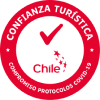
Choose the services that have joined our protocols against COVID
Social networks


Getty Images

Check out this year's Best in Travel winners
Chile is nature on a colossal scale, but travel here is surprisingly easy if you don't rush it.
Best Time to Visit
Best places to visit, attractions, must-see attractions.

Parque Nacional Patagonia
Northern Patagonia
Dubbed as the Serengeti of the Southern Cone, the 690-sq-km Parque Nacional Patagonia features Patagonian steppe, forests, mountains, lakes and lagoons…

Orongo Ceremonial Village
Rapa Nui (Easter Island)
Nearly covered in a bog of floating totora reeds, the crater lake of Rano Kau resembles a giant witch's cauldron and is a wild greenhouse of endemic…

Rano Raraku
Known as 'the nursery,' the volcano of Rano Raraku, about 18km from Hanga Roa, is the quarry for the hard tuff from which the moai were cut. You'll feel…

Ahu Tongariki
The monumental Ahu Tongariki has plenty to set your camera's flash popping. With 15 imposing statues, it is the largest ahu ever built. The statues gaze…

Centro Gabriela Mistral
This striking cultural and performing-arts center – named for Chilean poet Gabriela Mistral, the first Latin American woman to win the Nobel Prize in…

Beach bums in search of a place to wallow will love this postcard-perfect, white-sand beach. It also forms a lovely backdrop for Ahu Nau Nau, which…

Casa de Isla Negra
Middle Chile
The spectacular setting on a windswept ocean headland makes it easy to understand why Isla Negra was Pablo Neruda’s favorite house. Built by the poet when…

Cerro San Cristóbal
The best views over Santiago are from the peaks and viewpoints of the Parque Metropolitano, better known as Cerro San Cristóbal. At 722 hectares, the park…
Planning Tools
Expert guidance to help you plan your trip.
Best Things to Do
With its puffing volcanoes, pounding surf, silent salt flats and gleaming glaciers, Chile is the ultimate wonderland for adventures. Here's where to begin.
Things to Know
Chile is an accessible destination, but there are customs, social rules and safety issues to keep in mind. Here's what you need to know.
Transportation
With Chile's epic scenery, getting around is always an adventure. Here's the lowdown on the best ways to navigate your way up, down and all around Chile.
Visa Requirements
Looking to visit Chile? Here's a useful guide to entry requirements to ensure a seamless journey in and out of the country.
Money and Costs
A guide to daily costs in Chile, along with some tricks and tips to help keep more of those colorful Chilean pesos in your wallet.
Traveling with Kids
With some patience – and a bit of basic Spanish – the thin South American nation of Chile can be the perfect setting for a family adventure.
Best Road Trips
Chile's best road trips take in rolling vineyards, serene lakes, deep fjords, towering volcanoes and bone-dry deserts. Here are our top Chilean drives.
Plan with a local
Experience the real Chile
Let a local expert craft your dream trip.
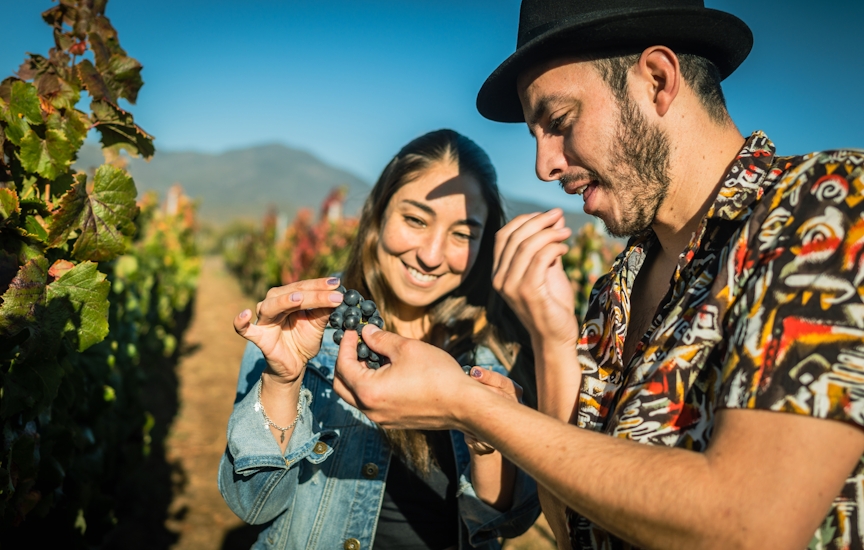
Latest stories from Chile
Filter by interest:
- All Interests
- Adventure Travel
- Art & Culture
- Beaches, Coasts & Islands
- Food & Drink

Family Travel
Sep 23, 2023 • 7 min read

Sep 21, 2023 • 7 min read

Sep 17, 2023 • 7 min read

Aug 26, 2023 • 7 min read

Aug 23, 2023 • 9 min read
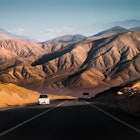
Aug 23, 2023 • 4 min read

Aug 22, 2023 • 7 min read
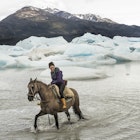
Aug 20, 2023 • 8 min read

Aug 12, 2023 • 3 min read
in partnership with getyourguide
Book popular activities in Chile
Chile and beyond.


Chile Travel Guide
Last Updated: September 3, 2024
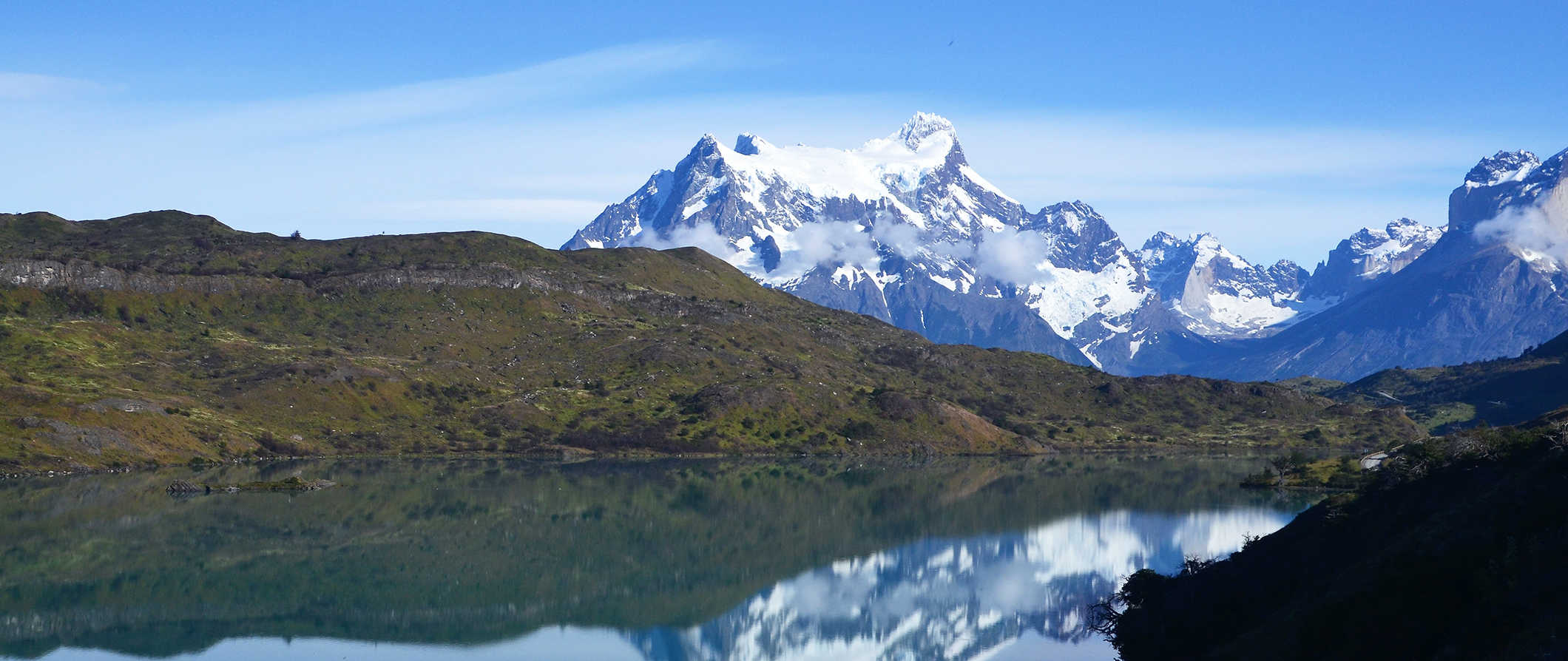
Chile is one of the most slender and longest countries in the world — it’s just 150 miles across at its widest point! From the snow-capped volcanoes of Patagonia and blistering heights of the Andes to world-class wineries and Maoi sculptures of Easter Island , there are a lot of wonderful things to see in Chile.
Traveling to Chile was one of the best experiences I’ve had in South America. It just constantly blew me away. It’s one of the most developed South American countries (the capital, Santiago, is a tech hub for the region), the people were awesome, the food was incredible, and the scenery made me feel in awe of nature.
Not only is there lots to do but the country is budget-friendly, which really rounds it out as a must-see destination.
Use this travel guide to Chile to plan your visit, save money, and make the most out of your trip!
Table of Contents
- Things to See and Do
- How to Stay Safe
- Where to Stay
- Typical Costs
- Suggested Budget
- Money-Saving Tips
- How to Get Around
- Best Places to Book Your Trip
- Related Blogs on Chile
Click Here for City Guides
Top 5 things to see and do in chile.
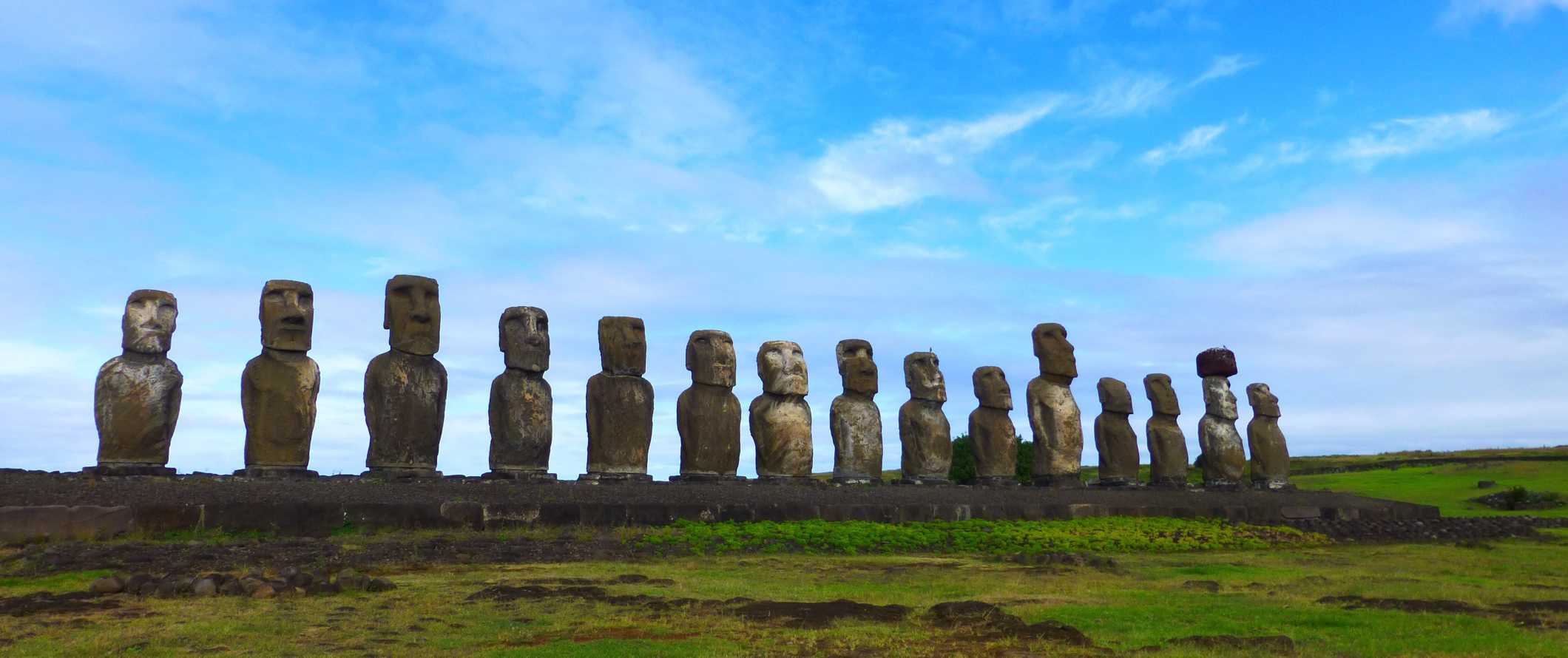
1. See Easter Island
Easter Island, located 3,540 kilometers (2,200 miles) off the coast of Chile, is the most isolated inhabited island on earth and home to the Rapa Nui Polynesian indigenous people that have lived there since 300 CE. Named after explorer Jacob Roggeveen’s ‘discovery’ of the island on Easter Sunday in 1722, this protected UNESCO World Heritage Site is famous for its Moai sculptures (the iconic big faces dotted all over the island). However, there is so much more to the island, including thousands of archaeological sites, volcanic craters and tunnels, pristine beaches, and excellent diving. To explore this magical place, hike around the dramatic cliffs and extinct volcanoes around the Moai archeological sites or around the spectacular Rano Kau crater and the Ana O Keke Cave. Or go sun yourself on Anakena’s beautiful white coral sand beach or Ovahe, a secluded pink sand beach hidden in a little cove with sparkling turquoise waters.
2. Discover Torres del Paine National Park
Torres del Paine lies between the Andes and Patagonian steppe and is made up of snow-clad mountains, glacier lakes, and some of the best hiking in Chile. It also happens to be one of the most beautiful and desolate regions on the planet. There is no end to the scenic views here, including the three rugged, towering peaks of Central, Monzino, and Dagostini as well as the Southern Ice Fields. Be sure to wander around the enchanting Sarmiento Lake and see the Amarga Lagoon and the giant Salto Grande Waterfall. Admission is 29,250 CLP for up to three days for foreigners.
3. Explore Santiago
Chile’s capital is a thriving city and home to a third of the country’s entire population. Founded in 1541, this vibrant capital offers gorgeous panoramas, great restaurants, tasty locally-produced wine, and of course, Barrio Bellavista’s nightlife. There are quite a few must-see attractions in the city: Parque Metropolitano (a large urban park) as well as Cerro San Cristóbal, where you can hike around taking in beautiful views of the city, shouldn’t be missed. The Museum of Human Rights is also a must-visit site, as it chronicles the dark years of Pinochet when thousands of people ‘disappeared’ at the hands of his violent regime.
4. Marvel at San Pedro de Atacama
Located in Chile’s Norte Chico northern region, San Pedro de Atacama is one of Chile’s hottest tourist towns. Literally. Sitting at 2,400 meters (7,874 feet), the ancient town is in the driest desert in the world (it reportedly hasn’t seen rain since 1870). But the rock formations here are stunning, and it’s the perfect place to stargaze. This little town with adobe houses and dirt streets only has 5,000 inhabitants but plenty of tourists visit up to explore the stunning valley landscapes, the Atacama Salt Flats, and the Chaxa and Miniques Lagoons. Don’t miss the famous beautiful jagged geological formations of Valle de la Luna and Valle de la Muerte valleys that can be reached by bicycle from town.
5. Visit colorful Valparaiso
Nicknamed the “Jewel of South America,” this colorful city near Santiago is a mesh of bohemian bars and Victorian architecture along a coastline of sheer cliffs. The laid-back atmosphere and beauty of the area have inspired generations of writers and poets, including poet Pablo Neruda. Be sure to bring your camera because the whole city is painted in vibrant Insta-worthy colors. Take the Ascensor Reina Victoria funicular up to the Concepcion neighborhood and have a cocktail on the hilltop overlooking the city as you try some of the delicious local seafood dishes. Also, be sure to check out two of Chile’s top beaches nearby, the upscale Viña del Mar and the super cool Reñaca.
Other Things to See and Do in Chile
1. see the san marcos cathedral.
The same architect who was responsible for the Eiffel Tower, Alexandre Gustav Eiffel, designed San Marcos Cathedral. The cathedral is in Arica, Chile’s northernmost city, and was built to replace the original cathedral destroyed by an earthquake in 1868. The new cathedral was commissioned in 1876 and is a rare example of Gothic architecture in South America.
2. Get tipsy on a wine tour
Chile’s vineyards have been producing world-class wine for over 400 years. There are plenty of tours available around the country as vineyards stretch the entire length of Chile. I think the best wineries are located near Santiago. Expect to pay around 15,000-20,000 CLP for a basic tour, though fancier tours at more prestigious vineyards can easily be over 55,000-100,000 CLP per person. Most tours last 4-8 hours.
3. Hike a volcano
Chile is home to the world’s tallest active volcano, Ojos del Salado, which lies in the Andes near the Argentine border. Villarica and Osorno are also popular volcanoes (and both lie close to lakes). Most volcanoes in the country have thermal spas at their base too. Experienced hikers can do the trip on their own, though there are plenty of guided tours available for travelers looking for a group tour. Most multi-day tours span 10-14 days and cost millions of pesos. For day trips like the Cajon de Maipo, Osorno Volcano, Termas Colina, and Petrohue Falls, expect to pay 32,000-56,000 CLP per person.
4. Valle de la Muerte
Also known as “Death Valley,” this is an astounding place to hike, go horseback riding, or even go sandboarding. Located in the northeast of the country near San Pedro de Atacama, there are also guided moonlight walks that take you out over the rocky martian landscape. You can rent a sandboard for around 8,300 CLP or go on a sandboard tour for 23,000 CLP per person which includes transportation. There are even tours that sandboard at midnight, using spotlights to light the way (they have a DJ too!). If you’re looking to hike, check out the Corniza Trail. It’s a 7-hour loop that’s relatively easy (many families do it).
5. Santuario de la Naturaleza Valle de la Luna
Also located near San Pedro de Atacama, the “Valley of the Moon” is an otherworldly landscape that is home to stones and sand formations that have developed an extraordinary texture due to thousands of years of winds and flooding. The rock formations look like the surface of the moon, hence the park’s name. It’s a great place to go hiking — just don’t forget to bring water as it can get quite warm. Tours are available for around 26,000 CLP per person.
6. See the El Tatio geysers
A popular tourist attraction, these geysers are incredibly beautiful and well worth a visit as they make up the largest geyser field in the Southern Hemisphere (and they are the third largest in the world). You have to get up around 4am as all the tour companies aim to get you there by sunrise and it’s a 90-minute drive from San Pedro de Atacama. But it’s worth the effort! Bring a swimsuit as there are thermal pools nearby. Tours cost around 33,000-38,000 CLP. You can visit without a tour (admission is 15,000 CLP) but you’ll need to rent your own vehicle to get there.
7. Museo de Bellas Artes
This museum is one of the best in the country. Located in Santiago, it’s home to a wide display of fine art, sculptures, photography, paintings, and digital media. Built in 1910, the building is somewhat small but the architecture is equally as impressive as the collection within (it was built in the Beaux-arts style and has a very Parisian feel to it). Admission is free.
8. Mingle among the wealthy in Viña del Mar
Considered a Chilean Miami, this city next to Valparaiso serves as a hotspot for casinos, upscale cafes, and seaside restaurants. Even if you don’t have money to burn, it’s an interesting place to spend an afternoon people-watching as you wander the beach promenade. You’ll find lots of world-class restaurants here. If you’ve got some money to burn, stay a night!
9. Tour Pablo Neruda’s homes
One of the world’s most famous poets used to call Chile home. With homes in Valparaiso, Santiago, and Isla Negra, this Chilean icon stuffed a lifetime of knick-knacks, literature, and interesting maritime architectural pieces into his three abodes. All of them are open to the public. Even if you’re not a huge fan of his work, his homes alone are an interesting glimpse into Chilean culture as Neruda is a cultural icon and one of the most famous poets of the 20th century. Admission to each home costs around 7,000 CLP and includes an audio-guide system in multiple languages.
10. Get off the beaten path
Some lesser-known treasures worth visiting in Chile are Frutillar (a beautiful lakeside community in southern Chile’s Los Lagos Region), Lonquimay (another gorgeous lakeside town in the Malleco Province of southern Chile’s Araucanía Region), Caleta Tortel (a rugged seaside town with wooden walkways instead of streets in the heart of Patagonia) and Coyhaique (a less pricey Northern Patagonia city that’s a hub for great nature adventures). If you’re looking to beat the crowds, be sure to visit some of these lesser-known destinations.
11. Swim in the world’s largest pool
If you’re looking for some luxury, head to the Crystal Lagoon, home to the world’s largest swimming pool. It’s located at the San Alfonso del Mar resort in Algarrobo, just west of Santiago. The pool is the size of twenty Olympic swimming pools and is the biggest recreational swimming pool in the world, requiring 66 million gallons of water just to fill it! A 1-2 bedroom apartment rental here costs 70,000-120,000 CLP per night.
How to Stay Safe in Chile
Chile is considered a safe destination and generally ranks as one of the safest on the continent. That said, crimes still do occur so you’ll want to take some precautions during your trip. The most common crimes in Chile are petty theft and bag snatching. Since these are crimes of opportunity, you’ll always want to make sure your possessions are secure. Be extra vigilant when riding the bus and when you’re in areas popular with tourists.
When taking the bus (especially the night bus) make sure you don’t have any valuables in your checked bag. Additionally, keep any valuables secure and out of reach from any would-be pickpockets.
If you’re enjoying the nightlife of Santiago, keep an eye on your drink as drink-spiking can occur.
Be sure to read about the common travel scams to avoid here .
Earthquakes are also common enough in Chile that you’ll want to make sure you are prepared should one occur. Know where your emergency exits are in your accommodation as well as any local evacuation locations for major emergencies. If you have a map downloaded on your phone, save the location of the nearest hospital and airport as well, just in case.
If you need emergency services, dial 113 for assistance.
The most important piece of advice I can offer is to purchase good travel insurance. Travel insurance will protect you against illness, injury, theft, and cancellations. It’s comprehensive protection in case anything goes wrong. I never go on a trip without it as I’ve had to use it many times in the past. You can use the widget below to find the policy right for you:
Where to Stay in Chile
Hostels can be found in all the major destinations across Chile. Here are my recommended places to stay if you’re on a budget:
- Chili Kiwi Lakefront (Pucon)
- Hostal Forestal (Santiago)
- Poker Hostel (Santiago)
- Hostal Po (Valparaiso)
- Hostal Rural (San Pedro de Atacama)
- Kona Tau (Easter Island)
Chile Travel Costs
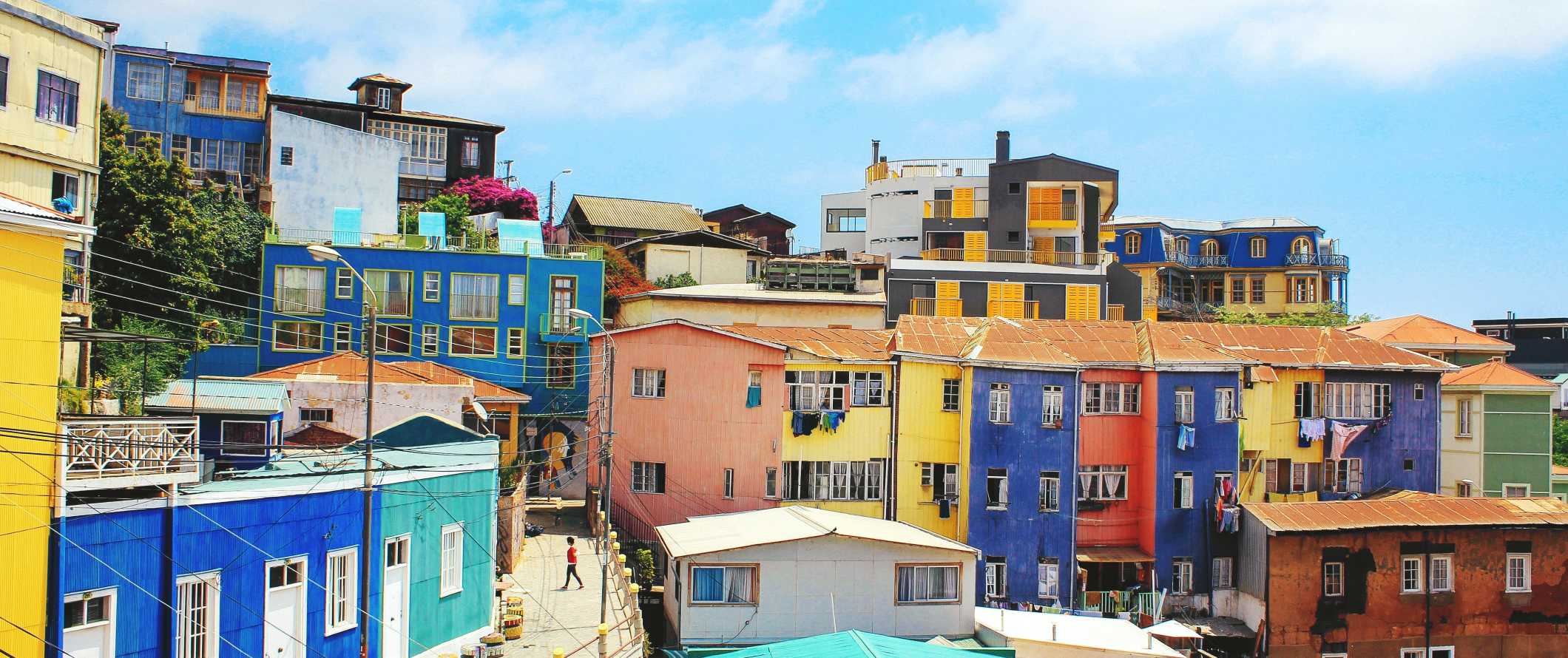
Accommodation
- Hostel dorms – 9,800 CLP per night
- Hostel private rooms – 22,000-30,000 CLP per night
- Budget hotels – 25,000-55,000 CLP per night
- Airbnb private rooms – 16,000 CLP per night
- Airbnb apartments – 45,000-60,000 CLP per night
- Campsite – 5,300-35,000 CLP per night
- Set-menu lunch – 7,000 CLP
- Sit-down restaurants – 35,000 CLP
- Fast food (think McDonald’s) – 6,000 CLP
- Beer – 3,000 CLP
- Cappuccino/latte – 2,300 CLP
- Bottled water – 850 CLP
- Groceries for a week – 25,000 CLP
Note: As everything must be shipped south, food prices in Patagonia are about 30% higher than elsewhere in the country.
Chile Suggested Budgets
How much does it cost to visit Chile? That depends on a few different factors, specifically, what you plan on doing while you’re here as well as your travel style.
Backpacker – 36,000 CLP Per Day
On a backpacking budget, you can stay in a hostel dorm, cook your own meals, use public transportation to get around, and visit a few museums. If you plan on drinking, you’ll need to add 5,000-8,000 CLP per day.
Midrange – 105,000 CLP Per Day
On a mid-range budget, you can stay in a private Airbnb room, take buses between destinations, eat out at street stalls and cheap restaurants, take the occasional taxi, enjoy some drinks, and do some paid excursions like guided hikes and wine tours.
Upscale – 205,000 CLP Per Day
On this budget, you can stay in a hotel, rent a car to get around, do more guided tours, drink as much as you want, and eat out at nice restaurants. This is just the ground floor for luxury, though. The sky is the limit!
Chile Travel Guide: Money-Saving Tips
Chile can be an expensive place to visit, especially if you’re doing a lot of tours and activities. The size of the country also means you can end up spending a lot on transportation. Here are some tips to help you save during your visit:
Bring a water bottle – LifeStraw is a reusable water bottle with a built-in filter that you can use instead of buying single-use plastic bottles. It removes bacteria, parasites, micro plastics, and other contaminants so it’s perfect for cities as well as if you’re out hiking in nature.
Buy wine at the supermarkets – Surprisingly, buying wine from vineyards can be more expensive than in the supermarkets. Buy from the supermarkets if you’re on a tight budget.
Take the bus – Bus service is inexpensive and efficient here. Night buses are comfortable and a good way to save on a night’s accommodation (they often have lie flat beds).
Buy food from La Vega Market – La Vega Market in Santiago sells everything you could possibly need and all sorts of local ingredients from Chile and Peru. Shop here for your veggies, fruits, and to get an authentic experience.
Eat at the local fish markets – In the coastal cities, the local fish markets are usually the best place for a seafood meal. Though the restaurants look cheap and thrown together, they’re delicious!
Shop around – Haggling is not common and vendors stick to their guns even when called out for price discrimination. So, if you’re quoted an inflated price for being a tourist it’s best to just move around and find alternatives where the prices are already set and visible. Otherwise, you’ll just be wasting your time and energy.
Ride in a micro or colectivo – Regular buses are for intercity transportation. “Micros” are intracity, and “colectivos” are taxis that drive a specific route once they get four people in the car, and charge a very low rate. If you want to go somewhere, chances are there’s a micro or colectivo that can get you close — just ask a local and they’ll know where to point you.
Stay with a local – Chile doesn’t have a huge Couchsurfing community, but you can still give it a shot and try to find a host (and get a local friend and a free place to stay). Just be sure to send your requests early!
Take a free walking tour – There are some great options available when it comes to free walking tours in Santiago, such as Tours 4 Tips or Free Tour Santiago . If you want to explore the city while learning about its history, architecture, and people then be sure to take a free tour. Just remember to tip at the end!
Stay at a Hola Hostel – Hola Hostels is a network of hostels predominantly in South and Central America. They offer 10% off to their members, as well as other local discounts for food and activities. Joining is free, and their hostels are also committed to environmentally sustainable practices.
Travel in the shoulder season – Prices in the country are cheaper outside of the high season (which is November-March). This includes admission to parks like Torres del Paine, which charge double during the busy summer months. Beat the crowds and save some money by skipping the high season.
How to Get Around in Chile
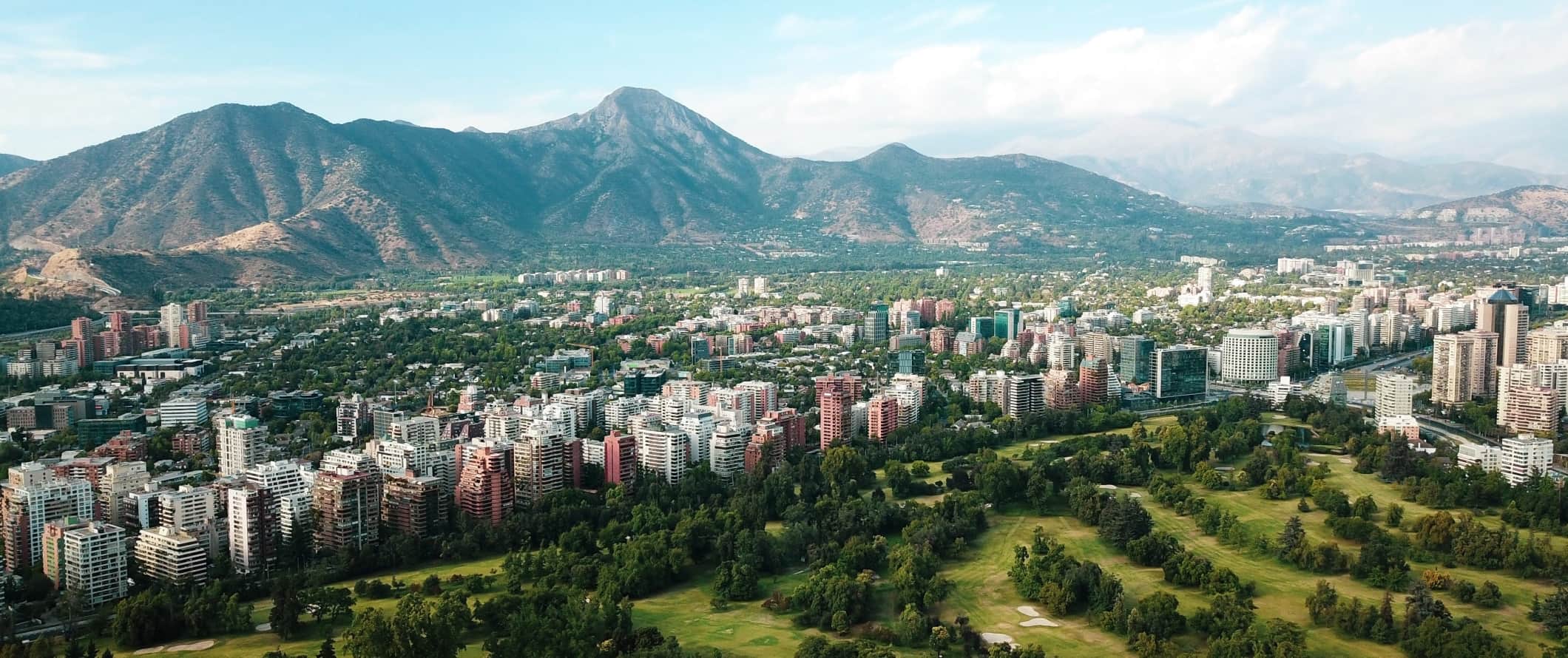
Public transportation – Public transportation, especially in Santiago, is reliable and affordable. In Santiago, you need to purchase a refillable bus pass (BIP Card) for your journeys as individual tickets are no longer available. The card costs around 1,550 CLP with the average ride costing around 700 CLP (prices vary depending on the time of day). BIP cards need a minimum initial credit of 1,000 CLP. You have to pay for your card and top-ups in cash; non-Chilean credit cards are not accepted.
Bus – For intercity travel, buses are the cheapest way to get around — and they are nice too! Reclining seats are common and many even recline almost all the way down. Additionally, some night buses even have a curtain between the seats so you can have a little privacy from your neighbor. The best companies to use are Turbus and Pullman.
Expect to pay at least 38,000 CLP per person from Santiago to Antofagasta. From Santiago to Valparaiso, bus tickets cost around 6,000–10,000 CLP each way. For something like the cross-country journey from Santiago to Punta Arenas, expect to pay at least 60,000 CLP for the 40-hour bus ride (this is an incredibly long distance so you have to change at Osorno or choose flying).
Train – Traveling by train in Chile is virtually non-existent. Much of the tracks have been left to decay beyond repair outside the central region of the country. Trains link Santiago with Curico, Talca, Linares, and Chillan with air-conditioned cars but that’s the extent of Chile’s train infrastructure. You can visit trencentral.cl for the available routes and prices.
Flying – Flying around the country is surprisingly affordable. Expect to pay around 28,000-35,000 CLP for the two-hour flight from Santiago to Antofagasta. Prices are similar for trips from Santiago to:
- La Serena (one hour)
- Calama (two hours)
- Arica (two hours forty-five minutes)
- Concepcion (one hour)
- Puerto Montt (one hour forty minutes)
For a flight between Santiago and Puerto Natales, expect to pay around 40,000-55,000 CLP. Round-trip flights from Santiago to the remote Easter Island cost around 240,000-300,000 CLP.
Car rental – Driving in Chile is much easier (and safer) than driving in other South American countries. Many of the highways are well-maintained thanks to their liberal use of toll roads. While driving in Santiago can be a little chaotic, once you get out of the city things generally become much easier. Expect to pay around 178,000 CLP for a one-week rental. Drivers need to be at least 21 years old.
For the best car rental prices, use Discover Cars .
Hitchhiking – Hitchhiking in Chile is generally quite safe for foreigners. Avoid hitchhiking on rural roads, where there is much less traffic. If you do plan on hitchhiking regularly, bring a tent with you in case you don’t find a ride. It’s relatively easy to wild camp in Chile, and often you can ask at gas stations or police stations to pitch behind their building. Check Hitchwiki for more information.
When to Go to Chile
Since Chile is in the southern hemisphere, the summer months are December, January, and February. With landscapes ranging from desert to tundra, the weather and temperatures can vary tremendously here. Expect daily highs around 28-30°C (82-86°F) in Santiago, while the highs in Torres del Paine are closer to 13°C (55°F).
Winter is not a particularly great time to visit as the temperatures can drop below freezing, with snowfall common in certain regions. Daily lows reach -15 °C (5 F), making it rather unpleasant to be out and about during the day. Unsurprisingly, you can see why most travelers visit during the summer.
Fortunately, the shoulder season is also a fantastic time to visit Chile as you’ll be able to beat the crowds and save yourself some money. It’s an especially good time to visit if you plan on visiting Torres del Paine as there will be fewer hikers here and the park admission will be much cheaper. November and March are usually included in the high season, so aim for late October or early April. The weather won’t be perfect, but it’s a good compromise for travelers looking to dodge the crowds.
Chile Travel Guide: The Best Booking Resources
These are my favorite companies to use when I travel. They consistently have the best deals, offer world-class customer service and great value, and overall, are better than their competitors. They are the companies I use the most and are always the starting point in my search for travel deals.
- Skyscanner – Skyscanner is my favorite flight search engine. They search small websites and budget airlines that larger search sites tend to miss. They are hands down the number one place to start.
- Hostelworld – This is the best hostel accommodation site out there with the largest inventory, best search interface, and widest availability.
- Booking.com – The best all around booking site that constantly provides the cheapest and lowest rates. They have the widest selection of budget accommodation. In all my tests, they’ve always had the cheapest rates out of all the booking websites.
- Get Your Guide – Get Your Guide is a huge online marketplace for tours and excursions. They have tons of tour options available in cities all around the world, including everything from cooking classes, walking tours, street art lessons, and more!
- SafetyWing – Safety Wing offers convenient and affordable plans tailored to digital nomads and long-term travelers. They have cheap monthly plans, great customer service, and an easy-to-use claims process that makes it perfect for those on the road.
- LifeStraw – My go-to company for reusable water bottles with built-in filters so you can ensure your drinking water is always clean and safe.
- Unbound Merino – They make lightweight, durable, easy-to-clean travel clothing.
- Top Travel Credit Cards – Points are the best way to cut down travel expenses. Here’s my favorite point earning credit cards so you can get free travel!
Chile Travel Guide: Related Articles
Want more tips for your trip? Check out all the articles I’ve written on Chile travel and continue planning your trip:
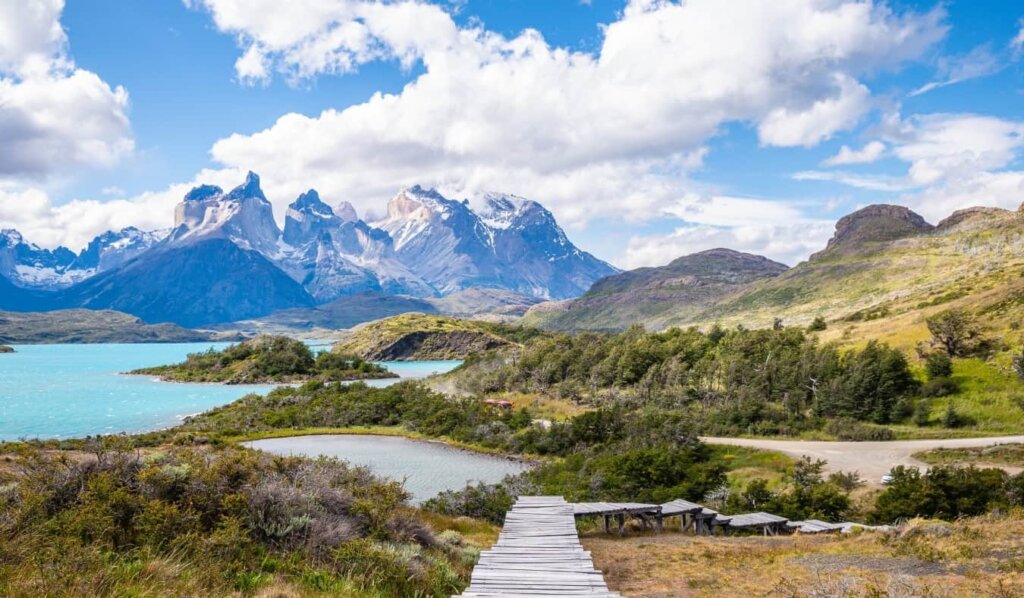
Is Chile Safe to Visit?

The 10 Best Cities to Be a Digital Nomad
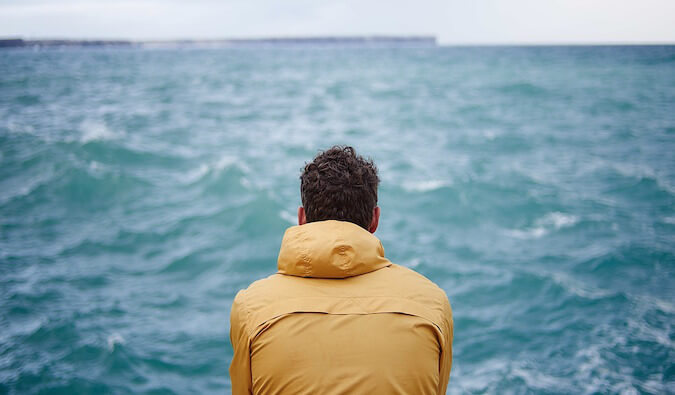
My (Non-Existent) South American Itinerary (and My Anxiety)
Get your free travel starter kit.
Enter your email and get planning cheatsheets including a step by step checklist, packing list, tips cheat sheet, and more so you can plan like a pro!

- Where To Stay
- Transportation
- Booking Resources
- Related Blogs
- Search Please fill out this field.
- Newsletters
- Destinations
- Central & South America
Your Trip to Chile: The Complete Guide
- Best Time to Visit
- Weather & Climate
- Airports in Chile
- Best Santiago Hotels
- One-Week Itinerary for Chile
- Best Places to Visit in Chile
- Beach Destinations
- Top National Parks
- Guide to Chilean Patagonia
- Guide to Valparaiso
- Guide to Vina del Mar
- Best Wineries in Chile
- Things to Do in Chile
- Things to Do in Santiago
- Must-Try Food
South America’s skinniest country spans a volcano-fringed desert, fertile wine valleys, pristine fjords, and glacier stippled mountain ranges making it the ultimate destination for adventure travelers. This guide to Chile is a one-stop-shop for planning, covering everything from must-see places, tantalizing local cuisine, and money-saving tips to help you squeeze the most out of your trip.
Planning Your Trip
- Best Time to Visit: Most trips are timed to make the most of fine weather in Patagonia in the south, with the austral spring, summer, and early autumn (October through April) good months for clear, warm days.
- Language: Chileans speak Spanish but thanks to their penchant for slang and dropping constants at the end of words, bringing a phrasebook is recommended even for advanced Spanish speakers. Most tourist-fronting businesses have good English, as do younger Chileans residing in Santiago.
- Currency: The Chilean peso ($ CLP) is the official currency of Chile.
- Getting Around: Chile has an extensive infrastructure of increasingly low-cost flights that connect most cities across the country and, if booked in advance, are often significantly cheaper than buses. However, most inter-city flights are indirect and pass through the capital, so expect to spend plenty of time in Santiago’s domestic terminal. For local travel, affordable and comfortable bus services cater to short and overnight journeys, while Santiago’s excellent Metro/subway system is an easy and cheap means of exploring the capital. Hiring a rental car is an excellent option in Chile, particularly for exploring Patagonia.
- Travel Tip: Chile is a vast country packed with far more than you can see in a short period of time. We know it’s tempting to cram a whole month’s worth of activities into a far shorter time period, but we strongly recommend stripping your trip down to just a small number of destinations. You’ll spend far fewer hours on flights or overnight buses and come away wowed by the deep and unforgettable moments you’ve had the time and space to experience.
Things to Do
Chile’s remarkable diversity of landscapes and culture means you’re guaranteed to find plenty to fill an action-packed vacation. The north is home to the Atacama Desert, with its world-class stargazing and otherworldly landscapes; Santiago brims with fine museums, trendy new restaurants, and a burgeoning street art scene; the Central Valley is a place of rolling vineyards and classy boutique hotels; while the Lakes region is volcano country, where the intrepid can summit a fiery giant. In the far south, Patagonia is a place of pristine national parks and outdoor adventure, while west across the Pacific brings you to Rapa Nui (Easter Island), a UNESCO World Heritage site dotted with statues of long-lost ancestors.
On a first trip to Chile, don’t miss the following:
- Spend a day exploring coastal Valparaíso ’s tumbling, street art daubed hills, dining on freshly-caught fish in its trendy eateries, and learning about the life and loves of the much-adored Chilean Nobel Prize-winning poet, Pablo Neruda.
- Strap on your hiking boots and discover Patagonia’s most striking wildernesses in Torres del Paine National Park . Clamber up to glassy lagoons or paddle a kayak across icy waters filled with bobbing icebergs to admire vast glaciers. Head out by boat to visit chattering Magellanic penguin colonies or learn how to be a cowboy at a sheep ranch before dining on local specialties of spit-roasted lamb and king crab.
- To appreciate a completely different side to Chile, take the six-hour flight across the Pacific to Rapa Nui—a Polynesian island home to almost 900 moai (stone statues) —to tour these sacred sites, dive into warm, crystalline waters, and sample tuna ceviche.
Get more inspiration with our guide to the top destinations to visit in Chile , the best things to do in Chile , and the best things to do in Santiago .
What to Eat and Drink
Chile might not be known for its dining scene, but prepare to be surprised. This is a country with a tradition of asado (barbecue) and expertly-cooked seafood, while growing indigenous culinary influences promise truly inventive flavors.
Santiago is a hub of increasingly fine dining, with a handful of restaurants that showcase unusual Chilean ingredients now on the world’s best restaurant lists. But it’s not all fancy: traditional markets and no-frills food trucks in the capital are great places for classic Chilean meat and fish stews and savory empanadas. In the south, Chiloé Island is proud of its traditional seafood dishes including curanto (a seafood stew cooked underground), while Patagonia lays claim to juicy lamb roasted for hours over an open fire.
Chile is home to two main alcoholic drinks: wine and pisco. A large proportion of the Central Valley is stippled with vineyards, with Colchagua and Casablanca the most sought after, for their red carménère and white sauvignon blancs respectively, and both offering tours, tastings, and even top dollar dining. Further north in the Elqui Valley, moscatel grapes are fermented to become the grape brandy, pisco, which is best sampled in the zingy cocktail, pisco sour, which any self-respecting bar across the country can whip up.
Learn more about what to eat with our list of must-try Chilean foods .
Where to Stay
Chilean accommodations run the whole gamut of basic campsites to exclusive five-star hotels, with plenty of family-run B&Bs, boutique hotels, and rental cabins in between.
Santiago is home to a wealth of affordable B&Bs and small hotels located right in the heart of the tourist districts of Lastarria, Bellavista, and Italia, granting quick access to the metro, as well as excellent restaurants, bars, and shops on your doorsteps. In more rural parts and in national parks across the country you'll find increasingly stylish chalet-style cabins. They are a hallmark of Chile and a great option for self-catering, with many built to include hot tubs. In Chiloé, you’ll want to stay in an oceanside palafito (a traditional fisherman’s dwelling on stilts) for the best sea views.
In the south, long-distance treks through isolated national parks mean lodgings in campsites or hostel-style accommodation, although many parks are now home to at least one five-star hotel, generally tucked deep into the wilderness and offering outstanding, lavish accommodation. In more remote parts of Patagonia, sheep and cattle ranches, many of which are still operational, also provide comfortable, sometimes rustic lodgings—all with the opportunity to enjoy a traditional Patagonian barbecue feast.
Getting There
Santiago’s one international airport, Comodoro Arturo Merino Benítez, is the hub for all flights into the country with a record-setting 24.6 million people passing through the airport in 2019. Most U.S. airports have connections with Santiago, with many offering direct flights in the summer months. These include American Airlines, Delta, and United Airlines.
If flying from within South America, budget companies including Sky Airlines and Jet Smart, as well as regional mainstay LATAM, provide the most frequent connections from hubs such as Lima in Peru and Buenos Aires in Argentina.
Rickety buses also provide an overland connection to Chile from Peru, Bolivia, and Argentina, although adventure cruise ships from Ushuaia to Punta Arenas in Patagonia in the south are a far more daring means of crossing the border.
For domestic travel, aim for budget carriers Jet Smart and Sky Airlines where possible and plan to book at least a few months in advance for the cheapest fares. If you do, you’ll often find that three-hour flights between cities are the same price, if not cheaper, than 12-hour bus journeys.
Culture and Customs
- Chileans greet family, friends, and visitors alike with a kiss on the right cheek (for women greeting women and men greeting women) or a brief one-arm hug (for men greeting men).
- Much the same as other South American countries, punctuality is not a national strength, and Chileans are known for arriving to social occasions late—although most tour operators and all transport companies pride themselves on their punctuality, so be sure to arrive on time for paid excursions or risk being left behind.
- In restaurants, a 10 percent tip is added to your bill though you’re under no obligation to pay it if the service doesn’t meet your expectations.
- Uber and other ridesharing apps are illegal but widely used in Chile with 85,000 Uber drivers across the country in 2019. Despite the technical illegality, rideshares are a convenient means of getting around and avoiding being scammed by yellow taxi cabs (an unfortunately common occurrence in the capital). Avoid using an Uber from Santiago’s airport to the city, however; police regularly impound Ubers operating here, so you’re better off arranging an official airport shuttle instead.
Money-Saving Tips
- In popular destinations such as Rapa Nui (Easter Island) and Patagonia, prices rise considerably in January and February, so avoid these months for a chance to secure cheaper deals on airfare, hotels, and tours.
- Santiago’s excellent Metro is the fastest and cheapest means of exploring the capital - just keep a close eye on your belongings as pickpockets do operate here.
- Book domestic flights at least a few months in advance to secure the best deals. This is particularly the case for Rapa Nui (Easter Island), where prices can triple closer to the departure date.
- If traveling to Patagonia, take plenty of US dollars with you. Paying in this currency at hotels and tour agencies can save you up to 10 percent off the advertised price.
- Bringing US dollars to switch at exchange houses will also save plenty of cash as ATMs can charge up to US$10 per withdrawal, and these can often be capped at a maximum of US$150 each.
- Request small bills where possible when receiving change. Most national parks accept cash only and may refuse to change large, 20,000 peso notes. If hiring a car, you’ll also want small bills for toll booths on the highways.
Chile Travel. " Currency. "
History.com. " Easter Island ." February 28, 2020.
Arturo Merino Benítez Airport. " Santiago Airport Projects Passenger Traffic to Drop From 24.6 Million to 9 Million by 2020. " September 8, 2020.
Reuters. "Chilean Bank Ordered to Open Uber's Accounts to Taxman." October 15, 2019.
Related Articles
More related articles.
- USA/Canada 1-888-232-3813
- Walking & Hiking
- Wildlife and Nature
- Multiactivity
- Photo Safari
- Excepcional Journey
- Water Adventures
- Food & Wine
- City Escapes
- Winter Adventures
- EcoCamp Patagonia
- Argentine Patagonia
- Chilean Patagonia
- Atacama Desert
- Santiago and Central Valley
- Easter Island
- Lake District
- Multidestination
- Northwest Argentina
- Uyuni Salt Flats, Bolivia
- For Families
- For Couples
- For Friends
- For Solo Travelers
- Central Valley
- Wildlife & Nature
- News & Awards
- Sustainability
- Outdoor Sports
- Yoga & Wellness

12 Epic Places in Chile to Add to Your 2022 Bucket List
Posts by tag.
- Patagonia (80)
- Inspire (50)
- Wildlife & Nature (29)
- News & Awards (25)
- Outdoor Sports (22)
- Food & Wine (21)
- Central Valley (17)
- Atacama Desert (14)
- Culture (14)
- Sustainability (8)
- Lake District (6)
- Yoga & Wellness (5)
- Easter Island (3)
- Bolivia (1)
2020 was a bad year for international tourism, and 2021 slowly got better .
However, the reopening of Chile’s borders and the successful vaccination campaign were reasons good enough to celebrate , and we at Cascada Expediciones were pleased to reopen EcoCamp Patagonia , our geodesic hotel in Torres del Paine National Park.
With that in mind, we trust 2022 will definitely be a better year for travelers . All of us need some travel, and hiking in wild places has never felt so urgent. Do you also have such wanderlust? If you’re looking for beautiful natural scenery and the most stunning hiking trails in the world, Chile has it all! It is also a safe destination in times of COVID-19 , with more than 90% of the population fully vaccinated against the virus.
These are the most epic places in Chile (from north to south), so you can put them on your 2022 Bucket List. ¡Hasta luego!
1. San Pedro de Atacama
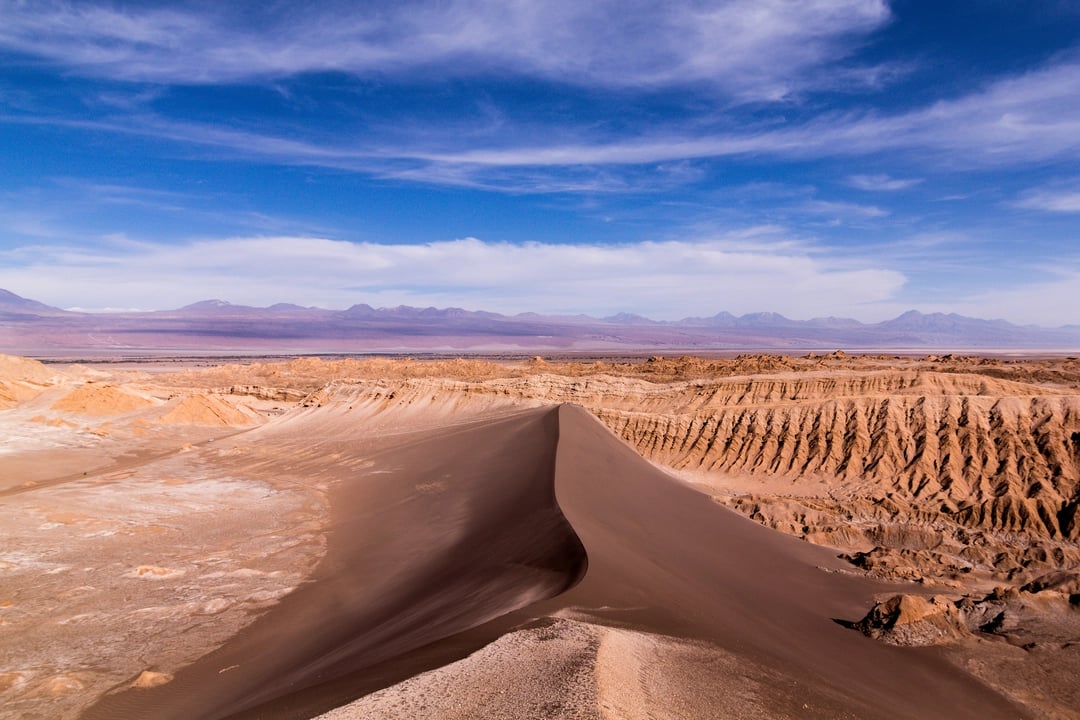
1700 kilometers north of Santiago de Chile, you’ll find the most fascinating destination in the Atacama desert . San Pedro de Atacama has been growing over centuries around an oasis in the Puna de Atacama, an arid plateau. It overlooks the Licancabur volcano, and plenty of giant volcanoes are located nearby. It is a fantastic place for nature lovers, with the Tatio geysers, a geothermal field located at 4200m.a.s.l. You’ll also find some natural treasures, such as the Moon valley, the Miscanti and Miñiques lagoons, the Rainbow valley and the Flamencos national reserve (best place in the desert to observe flamingos). And to top it all, the area of San Pedro de Atacama also features archeological treasures, with native ruins that attract visitors interested in Pre-Columbian cultures. Ready to explore the driest desert on Earth?
2. Bahía Inglesa
_resultado.webp?width=1067&name=Bahia%20Inglesa%20-%20DRONE%20(7%20of%201)_resultado.webp)
No, this is not the Caribbean. You’ll definitely realize you’re not in the tropics while swimming through these fresh waters. But the otherworldly landscapes of the Atacama coastline are just as scenic as the Caribbean sea, with peaceful sandy beaches and wonderful blue waters. If you drive one hour from Copiapó in Chile’s Atacama desert, you’ll reach the small town of Bahía Inglesa. This is a popular beach destination amongst Chileans , and you’ll find plenty of incredible beaches nearby, such as La Virgen, Chorrillos and Zapatilla.
3. Valparaíso and Viña del Mar
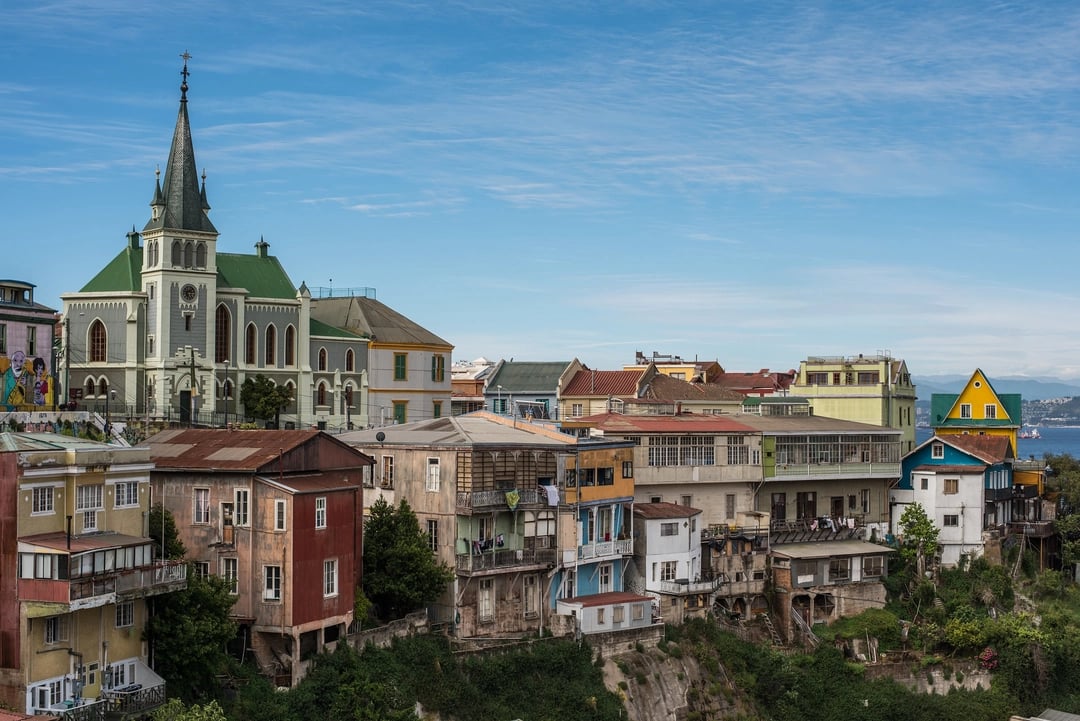
The “Jewel of the Pacific” is located only about 120 kilometers from Chile’s capital Santiago de Chile, which makes it a great destination for a romantic getaway to one of the most beautiful cities in the country. Valparaíso was very popular amongst sailors during the golden age and was a real magnet for European immigrants. The colorful streets of Valparaíso are the reason why sailors used to call the city “Little San Francisco”. In 2003, the historic quarter of Valparaíso was declared a UNESCO World Heritage Site. And if you come here, you’d be wrong not to travel to the neighbor Viña del Mar, the lively “Garden City”.
4. The Colchagua Wine Valley
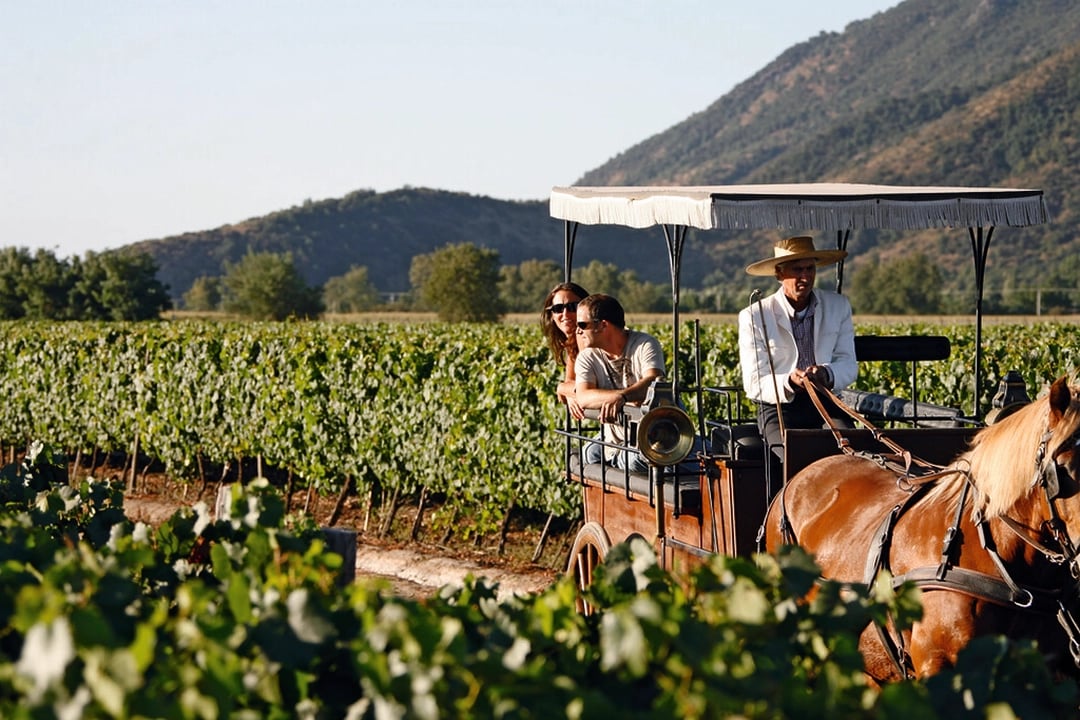
You are probably familiar with the fact Chile has some of the best wine in the world. The quality of its wine has been improving considerably over the past years, with some exceptional weather conditions and great knowledge. The Colchagua valley is set at the heart of the Central Valley - a couple of hours south of Santiago de Chile - and is an icon of wine production in Chile. And it is not only a great place for wine lovers, it is also a cool place for active travelers with horseback riding and hiking opportunities.
5. Conguillío National Park
_resultado.webp?width=1080&name=Conguillio%20(8%20de%201)_resultado.webp)
Conguillío National Park was declared a national park in 1950 and it is undoubtedly one of the most spectacular parks in southern Chile , with ancient forests of Araucaría pine trees, blue lakes and the snow capped Llaima volcano as a backdrop. Its landscapes attract thousands of hikers every year, but you’ll find some incredible spots all around the national park, with stunning lava flows and impressive evergreen forests. If you come in Winter (June to September) you can even ski at Corralco in the nearby Malalcahuello reserve, surrounded by volcanoes such as the Lonquimay and the Tolhuaca.
6. The Valdivian Coastline
_resultado.webp?width=1067&name=Caba%C3%B1as%20Fischer%20(21%20de%201)_resultado.webp)
Founded by Pedro de Valdivia in 1552, the city of Valdivia is located near the shore of the Pacific ocean, at the confluence of the Calle-Calle, Valdivia and Cau-Cau rivers. In the mid-19th century, Valdivia was the port of entry of German immigrants who settled in the region. Today, this German heritage can be seen in the local architecture and culture (prepare yourself for the best beer in Chile!).
But Valdivia is not only great for the city . Head to the coastal cities of Corral and Niebla and explore the nearby reserves, such as the Valdivian coastal reserve, Alerce Costero National Park and the Oncol Park, home of an incredible biodiversity hidden in the Valdivian jungle.
7. Chiloé Island
_resultado.webp?width=1067&name=Parque%20Tantauco%20(19%20de%201)_resultado.webp)
The Greater Island of Chiloé is much more than the entrance door to Chile’s Patagonia. It features mountains, swamps, forests and cultivated fields in the heart of the Chiloé archipelago. It is the second largest island in Chile (after Tierra del Fuego), with 8,394 square kilometers (3,241 sq mi) for you to explore. There are some beautiful reserves - such as the Tantauco park in the south - and the Chiloé National Park is a must-do for hikers. And if you’re a fish lover, you’ll eat plenty of fresh fish and seafood. Don’t miss the Castro stilt houses and don’t forget to talk to locals, so they tell you about their fascinating mythology!
8. The Marble Caves
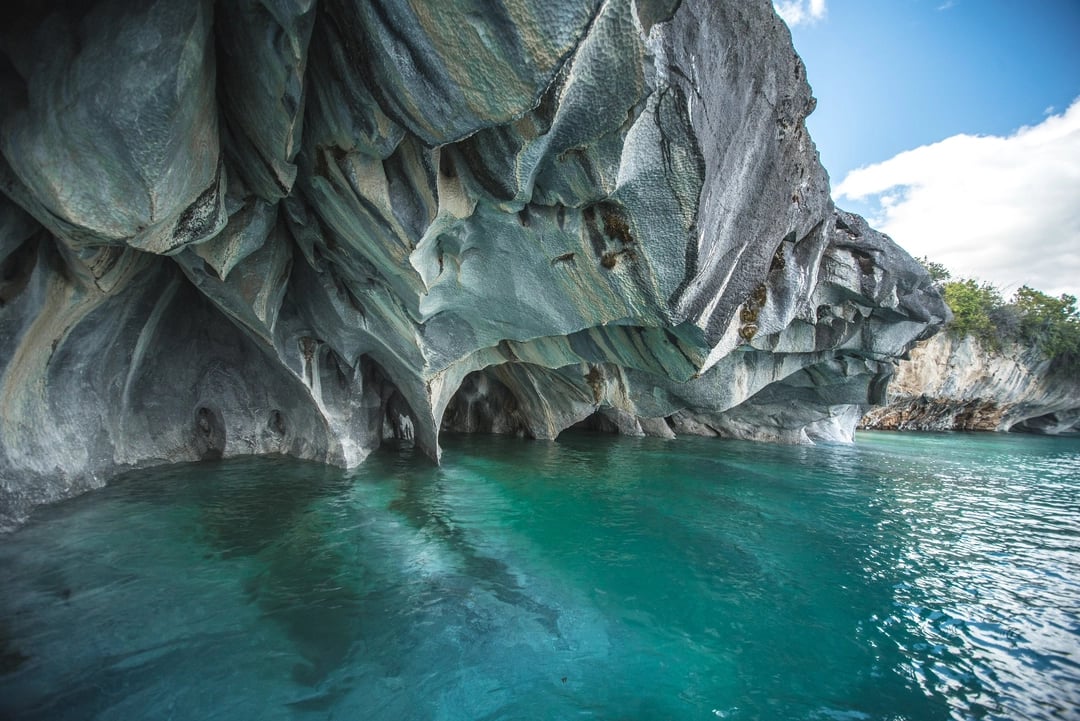
The marble caves may just be the most picturesque caves in Chile , with their incredible location in Chile’s biggest lake, the General Carrera lake. The caves have formed over the last 6000/7000 years as the water melted from the nearby glaciers - most of them part of the Northern Patagonian ice field - washing up against the old marble. This hidden gem is only accessible by boat or by kayaking through the lake, which can be done from Puerto Río Tranquilo, a nice stopover while driving the Carretera Austral in the Aysén Region, Chile’s most stunning road.
9. Patagonia National Park
_resultado-1.webp?width=1067&name=Valle%20Lunar%20(1%20de%201)_resultado-1.webp)
The Patagonia national park became a national park in 2018, when the Tompkins Conservation Foundation donated huge portions of land to Chile. Other private reserves - such as Jeinimeni and Tamango - were added to the previously called “Patagonia Park”. Nowadays, Patagonia National Park is undoubtedly one of the most stunning parks in Chile , with an area of 304,527 hectares to explore. There are dozens of epic hiking trails, and plenty of wildlife for nature lovers - such as the endangered South Andean Deers, pumas, ñandus and plenty of guanacos.
10. EcoCamp Patagonia
_resultado.webp?width=1067&name=EcoCamp%20with%20a%20Drone%20(16%20de%201)_resultado.webp)
Impossible not to add the world’s first geodesic hotel to the list! EcoCamp Patagonia offers a spectacular way to experience the majesty of Torres del Paine National Park , with cozy, sustainable domes (almost) at the feet of the granite towers that gave their name to the park. This is a great starting point for Patagonia’s best hikes, namely the W Trek and the Torres del Paine Circuit “O Trek” . EcoCamp is a cool way to connect with nature and fellow travelers on a Digital Detox (there’s no WiFi here, but definitely a great connection). And if you’re not familiar with Torres del Paine National Park, this is simply Patagonia’s finest national park , with plenty of wildlife in some of the world’s most impressive landscapes.
11. Punta Arenas
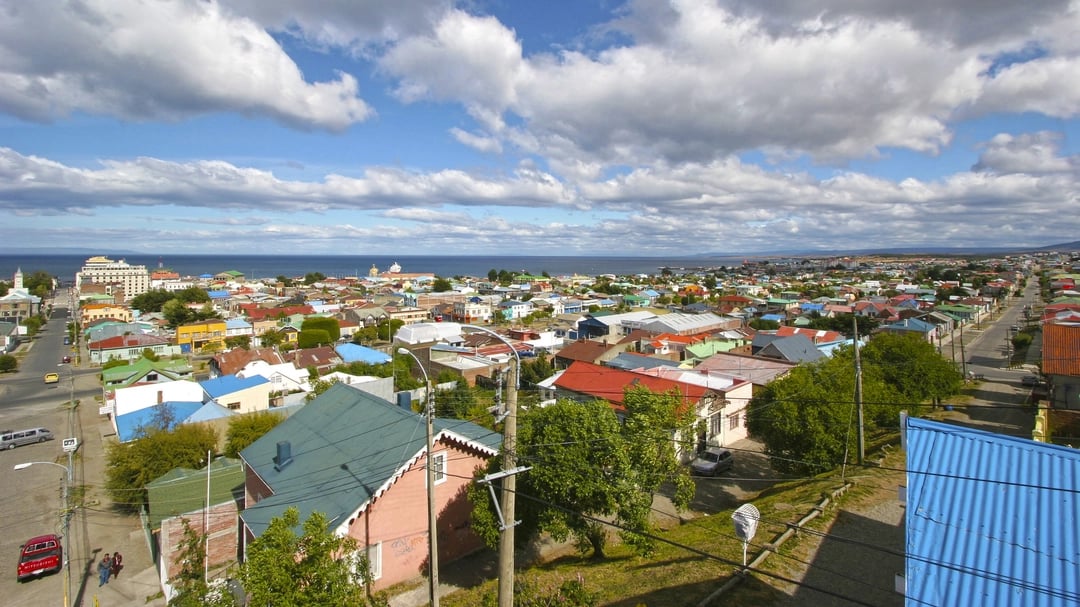
Punta Arenas is not only the largest city in Chile’s Patagonia, it is also the “entrance door” to the Antarctic, as a strategic port at the shore of the Strait of Magellan. It is considered the city with the best quality of life in the region, with its peaceful streets that are full of history. And whereas the weather conditions in the region tend to be extreme - strong winds are usual - the area of Punta Arenas is well-known for its indigenous history, as the Selk’nam, Kawésqar and Tehuelches have been inhabiting the region for centuries.
If you fly to Punta Arenas, it is worth staying in the city and sailing to the nearby Magdalena island to meet the Magellanic Penguins and why not head to Tierra del Fuego and meet the King Penguins .
12. Navarino Island
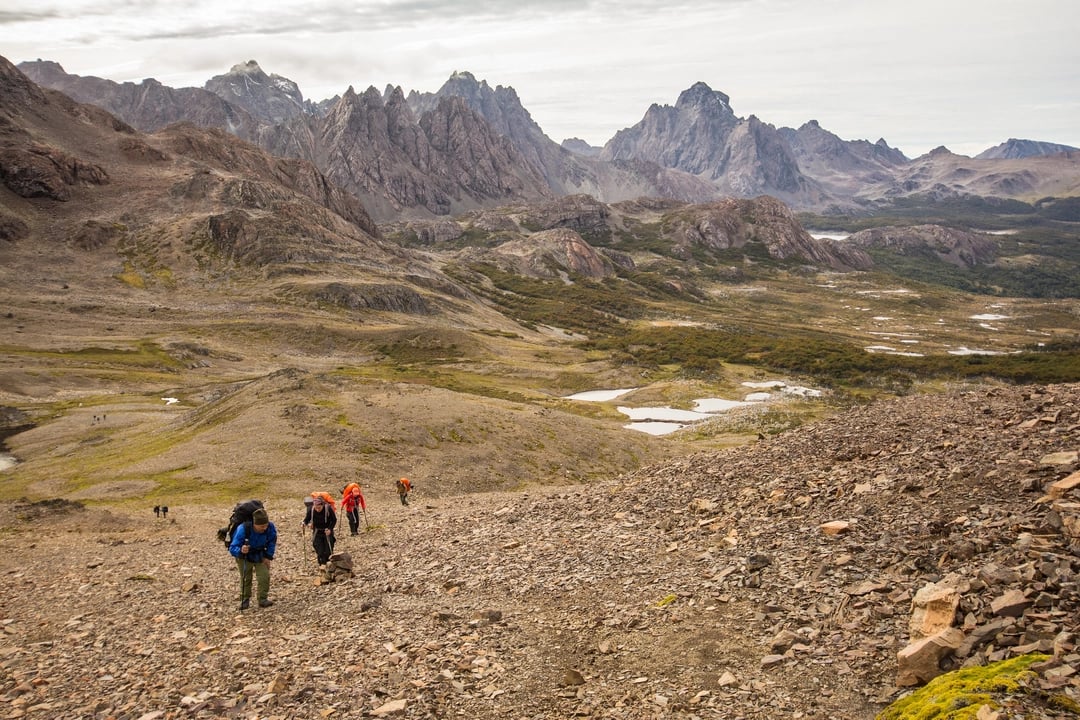
Here you are, in the southernmost city on Earth! Puerto Williams is a remote small town (only about 2,000 inhabitants), yet it is well-worth the visit. You can reach it by flying or sailing from Punta Arenas, or eventually by sailing from the neighbor Ushuaia in Argentina. The must-do here is the Dientes de Navarino circuit , one of Patagonia’s best hikes that is only recommended for experienced hikers. Due to the changing weather conditions and the simplicity and remoteness of the campsites (forget about WiFi!), consider hiking this epic circuit with an experienced guide (we will help you with that).
So what places will you visit first? Check out our tours or contact us to make it happen!
Subscribe to our Newsletter
Related posts.
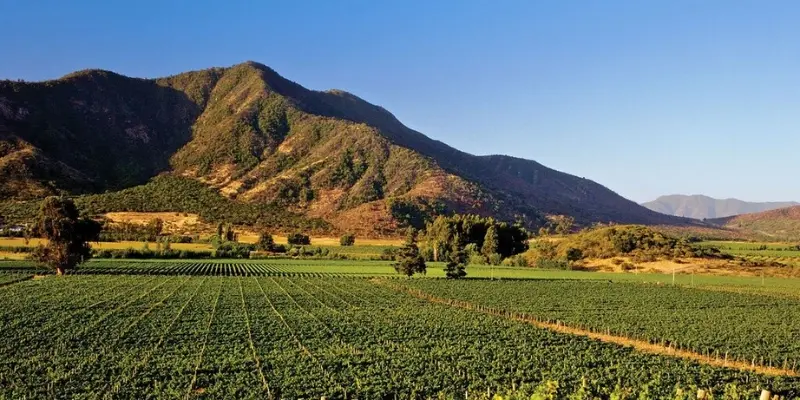
Taste Chilean wine in the Colchagua Valley
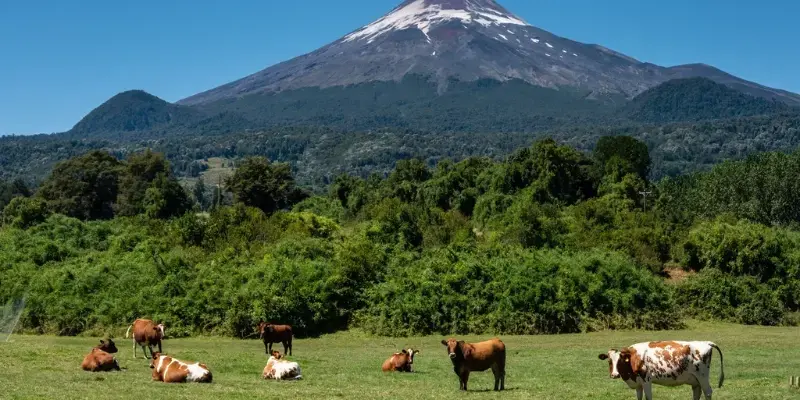
Discover the magic of the Lake District
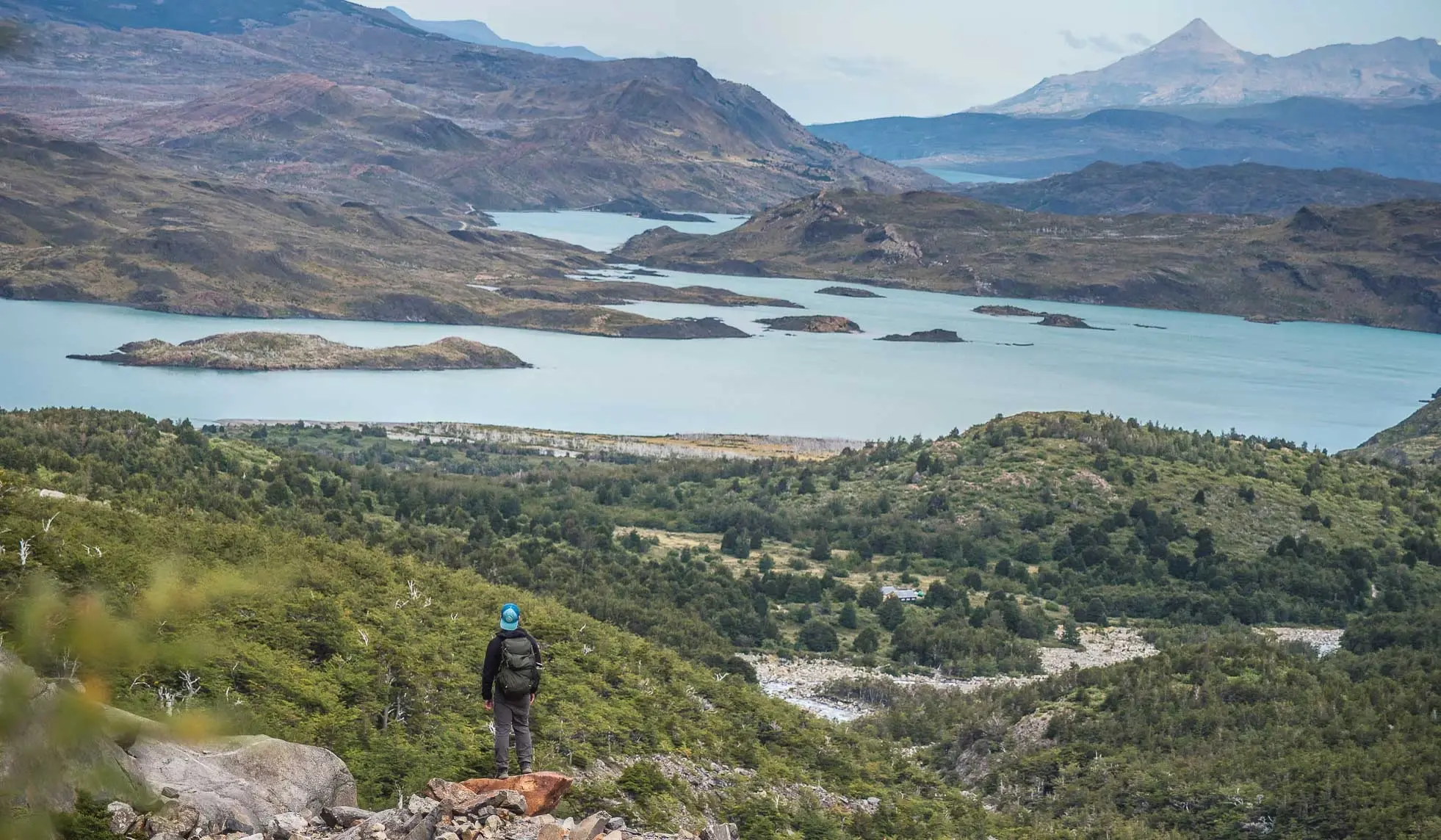
What's the Difference Between our W trekking programs?

The Chilean Way
Want to learn more about the beautiful country of Chile? Download our insider’s guide to learn all the best travel tips and tricks.

- TERMS & CONDITIONS
- PRIVACY POLICY
Destination
- Multi Destination
- Salta Argentina
Experiences
- Multi-activity
- Exceptional Journeys
SOCIAL NETWORKS

Updated October 4th, 2022
Dear Traveler,
We are very happy to announce that there are currently no travel restrictions in Chile. Together with the above mentioned, it is mandatory to comply with the following requirements:
- You only have to present the vaccination certificate issued in your country when boarding to Chile. Those who do not have their vaccinations must present a negative result in a PCR test dated less than 48 hours from departure to enter Chile. Those who are under 18 years of age do not have any requirements to enter Chile
- A negative PCR upon arrival is not compulsory any more but diagnostic tests will be carried out randomly at the entry point to Chile. Confirmed cases shall be isolated according to the general health regulations.
- Medical insurance covering any expenses caused by COVID-19 is not compulsory any more
- The use of a face mask is voluntary
In case you have any questions, we will be happy to help you!
The Team at Cascada Expediciones & EcoCamp Patagonia

Travel to Chile – Tips and Information Guide (2024)
From hiking through lush, green forests to watching a sunset over the driest desert on Earth, there are plenty of reasons to travel to Chile.
Located along the western coast of South America, Chile spans nearly half of the continent from its northernmost to southernmost points.
Although Chile is often overlooked, the country will stun every visitor with the sheer abundance of natural diversity, rich food and culture and friendly locals.
Chile is one of the few places in the world where you can start your day hiking the Andes Mountains and finish it watching the sunset over the Pacific Ocean.
It’s this kind of landscape diversity that is driving many nature enthusiasts to flock to Chile from all parts of the world.
From the Moai statues on Easter Island, the contrast between Patagonia and Atacama Desert, Santiago’s buzzing cultural life, and the world class wines and street art – Chile has something to offer for everyone.
This stunning country has inspired Nobel Award-winning poets and has left long lasting impressions on travellers from all walks of life.
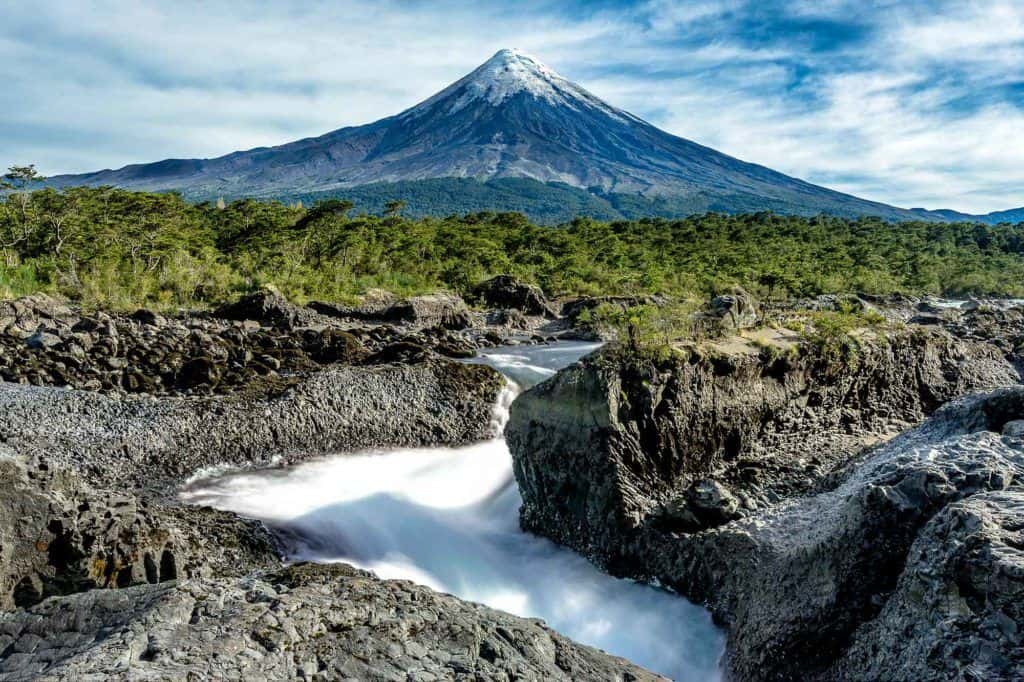
Chile Travel Guide
If you’ve decided to travel to Chile to see its beauty firsthand, make sure to read through our Chile Travel Guide!
General Info
- Capital: Santiago
- Other Main Cities: Valparaíso, Antofagasta, La Serena
- Currency: Chilean Peso
- Language: Spanish
- Population: 17,574,003
- Area: 756,096.3 sq.m2
- Electricity Voltage: 220V
- Electricity Sockets: Type C and L

How to Get to Chile
Travelling to Chile is relatively easy depending on your place of origin. Most people travel to Chile by air.
However there are other options to arrive in Chile – from ferries and cruise ships to busses and automobiles.
Most people arrive in Santiago, Chile’s most populated city and capitol.
But it is possible to begin your journey into Chile from neighboring countries at any number of border towns.
International flights to Chile will almost always arrive in Santiago.
But there are several other international airports throughout the country into which you may arrive.
Chile has direct connections with Europe, Israel, New Zealand, Australia and North America.
There are also plenty of flights from other South American countries.
As Chile occupies the southern half of the South American continent, flights into the country can be expensive if you are traveling from outside of South America.
Flight options and fares will also vary depending on the seasons.
Located in the southern hemisphere, the most popular time to travel to Chile is during its summer (December – February).
You can also expect a premium on fares during winter (June – August) as Chile boasts a wide array of winter sports and activities.
Fares drop during the shoulder seasons of March to May and September – November.
Flying From The US & Canada
There are many options when travelling to Chile from the US. The most common and budget-friendly cities of origin are Los Angeles and Miami.
Although you can reach Chile through connecting flights from pretty much any location in North America.
Expect to pay between USD$1,000 – $1,200 for a roundtrip flight during peak seasons.
But also keep an eye out for last minute flight deals. Or, alternatively, book your ticket well in advance to avoid higher fees.
Airlines that fly to Chile
- American Airlines
Flying directly from Canada is more costly. Expect to add a few hundred US Dollars to the cost of fares originating in Canada.
But both Air Canada and LAN fly from Toronto to Santiago.
Flights from Europe
There are no direct flights to Chile from the UK. To travel to Chile you would have to go via a European, US or Latin American city.
Some of the airlines that offer flights are:
- British Airways
The costs of the tickets during high season can be in between USD$1,500 – $2,200.
Regardless of the fare you pay or the number of connections, flights from Europe will be long. Expect to spend at least 16 hours in transit.
You may want to combine your travel from Europe with a few days of layover in the US to break up the journey.
Flights from New Zealand, Australia and South Africa
It is possible to fly direct to Santiago, Chile from both Sydney and Auckland.
During the high season you can expect the fares to be about USD$1,500 -$2,000.
But you can expect a variety of options from the following airlines:
- Air New Zealand
- Buenos Aires – Aerolineas
Taking A Bus To Chile
If you plan to travel to Chile from Peru, Bolivia or Argentina there are many options to travel by bus.
Most larger cities in these countries offer direct bus routes to Santiago or Valparaiso.
But you can also find bus transport from many of the border towns.
Bus tickets are quite affordable for the budget traveler.
And, for just a few dollars more you can travel in a bit of comfort with seats that recline partially or fully.
As the duration of the bus ride can near a full day of travel, having these comfort options is great.
The most popular and common bus carriers include:
- Cruz Del Sur
Driving To Chile
If you are visiting a neighboring country such as Bolivia, Argentina or Peru you can travel to Chile relatively easily in a personal vehicle.
In Argentina alone there are over 30 border crossings.
The two most used crossings are the Paso International Los Libertadores (Cristo Redentor) and the Pajaritos crossing.
The Paso International Los Libertadores is a mountain pass in the Andes between Santiago, Chile and Mendoza, Argentina.
The Pajaritos crossing is between Osorno, Chile and Villa La Angostura, Argentina.
Many of the crossings are paved highways but in the south of Chile some are gravel roads.
Note: Some crossings through the Andes Mountains be closed during the winter months.
Some of them are not accessible by public transportation and during winter are closed due to weather conditions.
To be safe always check with a tourism organisation ahead of time to ensure that the crossing is open.
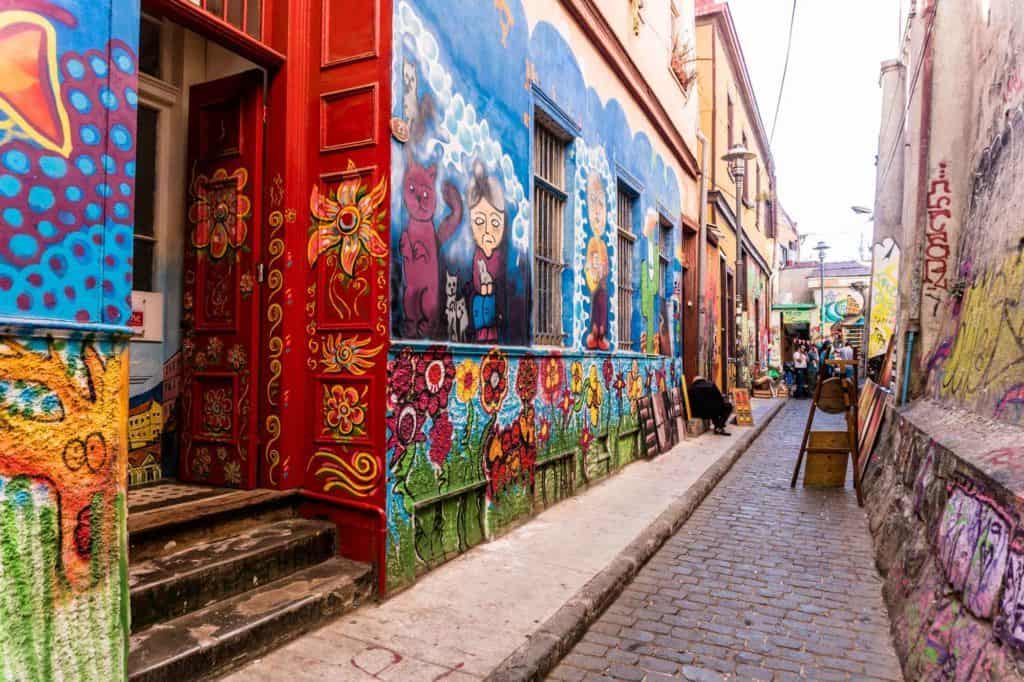
Visa Requirements For Chile
Travellers from most countries in the world must have a visa in order to travel to Chile.
However there are many countries that are exempt from the visa, including the US and Australia.
In exchange for visa-free entrance, travellers with passports from these countries will pay an entry fee upon arrival in Chile.
Anyone else planning to visit Chile must obtain a visa from one of the Chilean embassies or consulates unless they’re a citizen from one of the countries exempt from the visa.
Citizens of the US, Australia, Mexico and Suriname can enter without a visa but will have to pay entry fees that range between USD$25 (Mexico) to USD$160 (United States).
Residents of countries that hold APEC business cards countries can visit Chile up to 90 days without a visa for business purposes.
5 Interesting Facts About Chile
- The driest place on Earth is located in Chile – the Atacama desert
- Chile is the longest country in the world (4,270 km)!
- World’s biggest swimming pool is in Algarrobo! It’s 1,013 meters in length and has a depth of 35 meters!
- As the “Country of Poets,” Chile is the birthplace of two Nobel Prize winners – Pablo Neruda and Gabriela Mistral.
- Chile is home to 6 UNESCO World Heritage sites.
Best Time To Travel To Chile
Due to Chile’s large geographical imprint on the world and the fact that it stretches nearly half the length of South America, you can plan to visit Chile at pretty much any time of year.
Summer (December – February) is by far the busiest time of year for visitors travelling in Chile.
However, there are plenty of winter sports that attract visitors between June – August as well.
The shoulder seasons (March – May and September – November) can also be great times to travel to Chile if you do not mind more extreme variations in weather.
Depending on the places you want to see and activities that you want to do, there are certainly better times of the year to visit different regions.
Chile has seven climate pockets that range from desert in the North to alpine grassland and glaciers in the South.
If you wish to travel to Chile for festivals the best time is during the summer season between January and February.
There are many events scattered throughout the country celebrating music, dance, food and culture!
One of the most renowned festivals is the Semana Ancuditana in Chiloe and Ancud in January.
Much, if not all, of Patagonia is inaccessible during the winter months.
Even during shoulder and summer seasons the weather can be brutal in Patagonia.
Expect wind, rain and cooler temperatures anytime you visit the southernmost portion of the country.
The Torres del Paine and the Lake District is open year-round but the best time to plan your visit is during spring and summer (October – April).
Visiting the Atacama Desert is more accessible year round.
Though, as a desert, do be mindful of the always dry and possibly hot conditions during the summer months.
The most popular time of year to visit Easter Island is during the high season (December – March).
But if you’d like to avoid the crowds and higher seasonal prices, you can always visit the famous island on the shoulder season when it gets quieter and cooler.
To visit Chile’s capital, Santiago, we recommend going during the summer!
Not only do many of the locals vacate the city, but also the accommodation rates drop as well.
Itineraries For Travel to Chile
There is so much to see and do when travelling in Chile.
This makes it difficult to plan a trip to cover the entire country in one visit.
Additionally since most travelers arrive in Santiago, located near the middle of Chile, it can be difficult to explore both the northern region (Atacama Desert) and southern regions (Lake District and Patagonia) without extensive travel.
But we recommend that you plan to spend at least two weeks travelling in Chile with the following suggested itinerary:
Santiago (3 days)
Santiago is a beautiful city with a lot to offer! Rich in history and culture, this city could be a two week destination in itself!
Exploring downtown can take you on many detours. You can start with the impressive architectural sites like the neoclassical La Moneda Palace!
And then find yourself at the Plaza de Armas where you will find the Catedral Metropolitana that will leave anyone short of breath.
From buying fresh fish at Mercado Central to discovering the amazing street art, Santiago is a dynamic city that won’t allow you to sit still.
Make sure to stop at any number of cafes, restaurants and bars and immerse yourself in traditional Chilean cuisine.
It’s likely you won’t find a favorite because you have so many options from which to choose!
There are also plenty of short day trips that you can take from the city.
Spend an enjoyable afternoon visiting one of Santiago’s nearby vineyards – Cousiño Macul, Concha Y Toro or Santa Rita.
Or rent a bike and head out for some exercise and great scenery along nearby mountain biking trails.
Valparaíso Day (2 Days)
The coastal city Valparaíso is known for its amazing street art and bohemian vibe.
Walk around Cerro Concepcion and Cerro Alegre to admire the vibrant murals stretched throughout the sides of the buildings.
In keeping with the rich artistic theme, you can visit the Nobel Prize winning Pablo Neruda’s house in the city.
Then visit his oceanside home a short distance away at Isla Negra.
And while Valparaiso is more of an industrial city, there are plenty of great walks to take through neighborhoods that offer great views of the city and of the Pacific coast.
Of course if you’re visiting during the weekend and want to explore the nightlife, Valparaiso has some great bars and clubs that will keep you going through the night.
Castro (1-2 Days)
From Santiago fly to Puerto Montt and then catch a bus to Castro.
At Castro the colorful wooden palafitos await you! Built on stilts over the water, these buildings give you a different look and feel than what you’d find in the larger cities of Santiago and Valparaiso.
The Monumento Natural Islotes de Puñihuil is the only place in the world where you can encounter both the Humboldt and Magallanic penguins in the same place!
Explore the artisan craft market where you will find handmade jewelry and wool knitted items.
The churches of San Francisco and Rilán are both situated in Castro and are very much worth a visit.
Patagonia (5 + Days)
If you travel to Chile you do not want to miss Patagonia , as it is one of the most breathtaking regions in the world.
Many travellers come to Chile simply for the beauty, awe and outdoor adventure of Patagonia.
We suggest that you plan to stay within the region as long as you can.
Because Patagonia occupies the lower third of the country, just getting around the region can take quite a bit of time in itself.
But regardless of where or how far you travel between places in Patagonia, the scenery is not going to disappoint you.
From mountains and glaciers to fjords , lakes and thick forests the landscape of Patagonia offers some of the most spectacular views in the world.
The most popular part of Chilean Patagonia is the Torres Del Paine National Park.
It will take the better part of your day just to reach the park from a more populated area.
Then if you plan to hike Torres Del Paine plan to spend at least 4-5 more days.
There are two main hikes here, the ‘O Circuit’ and the ‘W Trek’, and these are not for the feint of heart and should only be completed if you have hiking experience and the right gear.
But if you’re in good physical shape we absolutely recommend doing this trek !
From the views of the amazing glacial lake to the amazing fauna of the national park, Patagonia is one of the better preserved natural areas.
Atacama Desert (3 Days)
The Atacama Desert is on the northern end of Chile. So once you’ve visited Patagonia it will take time to return to the Atacama Desert.
But doing so will show you perhaps the greatest contrast that a country has to offer in landscapes.
The Atacama Desert will provide you some of the most unique and otherworldly views.
Once you’ve managed to get to the village of San Pedro de Atacama, book a tour of the Valle de la Luna.
If you are adventurous, rent a car and explore the desert on your own. There’s a good chance you won’t come across another vehicle for hours.
This can be a great thing as long as you are prepared and safe in your journey.
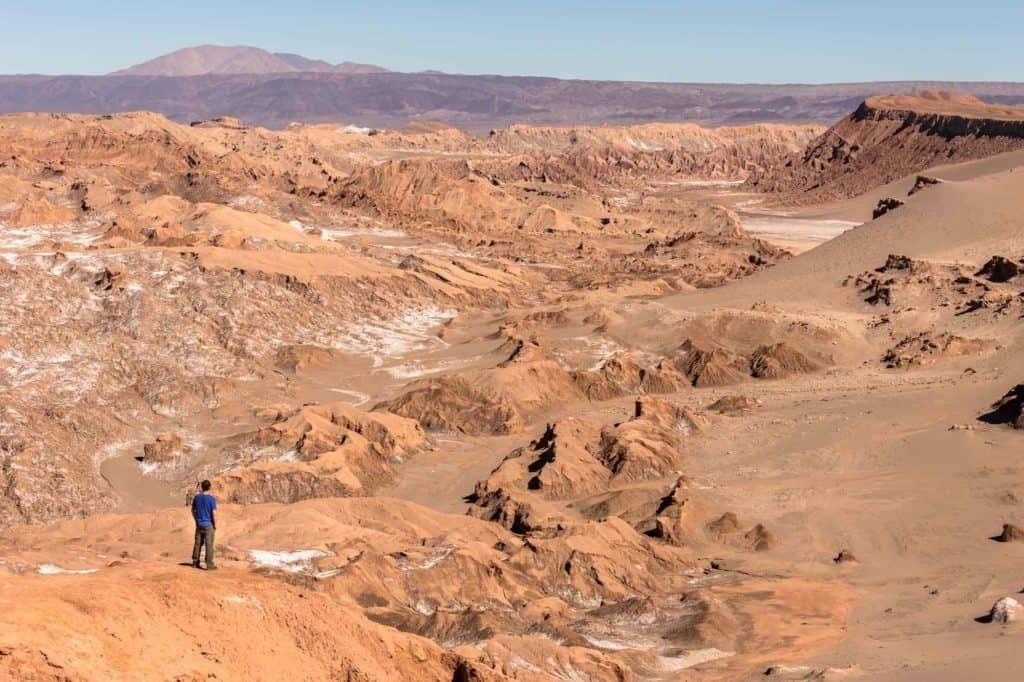
Budget For Travelling In Chile
Chile is more expensive than its neighboring countries Bolivia and Peru. But it is cheaper than Argentina.
When planning a budget for any trip you will want to divide your funds between four main expenses: accommodation, transportation, food and activities.
Accommodations
There is a mix of accommodation options when travelling in Chile – from hostels, mid-range airbnbs to luxury hotels.
An average hostel would cost minimum USD$20-30/per night for a private room and USD$10/per night in a dorm room.
You might spend a little more on an Airbnb room. And hotels will definitely be more costly.
But there are ways that you can recoup some expenses on accommodations.
If you’re planning on camping at Torres Del Paine or other parks there are many free campsites.
Transportation
Another thing you can do to cut down your accommodation costs is to take the night bus when going to a new destination.
Because of the Chile’s size you are bound to spend a lot of money and time on long distance buses.
Most long distance routes offer the option to upgrade to a reclining chair. This will allow you to be able to rest while you travel.
The road conditions are excellent and most highways follow the beautiful coastline.
This is quite possibly the biggest expense if you want to really see the whole country.
But if you consider combining the long distances with your accommodation budget then you can make your money last.
If you’re travelling in Chile on a tight budget, be prepared to cook a lot of meals when travelling in Chile.
But don’t be surprised by the prices of food in the grocery stores too.
Chile is not as cheap as many places in the world!
But there are plenty of options to enjoy local restaurant cuisines.
Chilean food is a mixture of a variety of cultures and eating at any number of restaurants will give you options to savor different pieces of the Chilean culture.
Of course be sure to enjoy eating like the locals as well. The cheapest food you will find will be street food.
Try the ice cream, the Chilean hot dog or fried sushi.
Daily food expense would likely range from USD$10–20.
For us the most important part of visiting another country is partaking in activities that are unique to the region we are visiting.
When you travel to Chile we recommend hiking the “W” trek in the Torres Del Paine!
You can camp for free. Or if you want a more luxurious option you can even book a nice guesthouse along the trail.
We prepacked our food with us. But that meant that we had to carry it around during those 5 days!
You can pay for food along the way but it is pretty costly.
Other activities in Chile you may want to account for in your budget include visiting the Atacama Desert, flying to Easter Island and adventure sports like kayaking, kiteboarding, horseback riding and skiing among many more activities.
Top 5 Places To Visit In Chile
- Valparaiso – Known for its bohemian vibe, beautiful seaside views and lively colored houses. It is built upon dozens of hillsides overlooking the Pacific Ocean. It has a labyrinth of cobblestone alleyways and streets thus making it a cultural and architectural legacy.
- San Rafael Glacier – Situated inside the Laguna San Rafael National Park. The glacier is reachable only via boat or plane. The nautical adventure is a spectacle as you pass through the narrow channels of the Aisén region.
- Valle de la Luna – Located within the Atacama Desert. This desert is adorned with large sand dunes and stone formation that imitate the moon’s surface earning the region the nickname “Valley of the Moon”.
- Torres del Paine – The most popular national park within Patagonia. The region features lakes, glaciers and mountains. The main centerpiece of this nature’s masterwork are the three Towers of Paine that are granite peaks shaped by glacial ice.
- Easter Island – Known for being one of the most isolated places in the world. The island has 887 statues called moai that were created by the Rapanui people centuries ago. The moai statues are the major tourist attraction. But the island itself is a great location for surfing and diving!
Top 5 Experiences When Travelling In Chile
- Hiking in Torres Del Paine – The national park offers two routes to explore its vastness and beauty. Both are not too physically demanding for five day treks. Enjoy either the “W Trek” and/or the “Paine Circuit.” Both routes are best to be explored from October – April. If you’re really keen on wildlife you can also go on a Patagonian safari.
- Drink Pisco Sour In Santiago – Pisco is not as popular as other cities from the South America region. But it slowly started garnering the recognition it deserved. Santiago consistently ranks near the top of the world’s favorite cities to visit. The city is famous for its downtown bohemian neighborhood and it’s the perfect place to sit down and enjoy their national drink, the pisco sour.
- Horseback Riding through the Andes Mountains – A short day trip from Santiago will bring you into all sorts of adventures in the Andes Mountains. You can go rafting, hiking or horseback riding in the Andes! El Colorado is one of the more popular horseback riding spots. El Morado, further south in Cajón del Maipo, is a great place to go horseback riding as well.
- Wine Tasting – The region around Santiago allows for some of the best grape growing in the world. This has enabled Chile to produce many world famous wines. It is quite easy to go on a wine tasting tour all around the wineries in Maipo, Colchagua and Casablanca valleys!
- Stargaze – The San Pedro de Atacama and Elqui Valley are both favored by the romantics and astronomers! Isolated from light pollution and blessed with usually clear weather, the skies will leave you in a daze for hours.
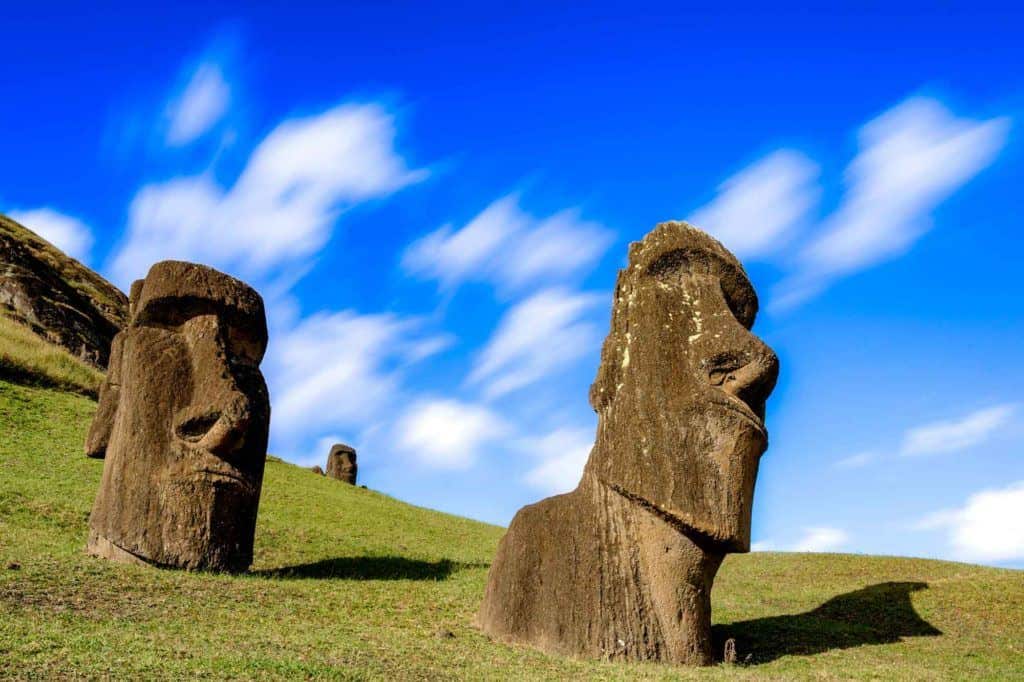
Transportation In Chile
Chile’s one-of-a-kind geography makes it challenging to travel through the country. It can take days to travel by bus from one end of the country to the other.
And flights are not always available between the different regions of the country.
Thankfully the public transport system is very reliable and decently priced!
Bus is the most common transport used by the locals as bus routes are numerous and fares are incredibly reasonable.
A lot of the same numbered buses serve slightly altered routes so you always need to pay attention to its placards that indicate its last destination.
When you board tell your driver the destination you’re traveling to and he will inform you about the price of the ticket. Most drivers will also make sure that you do not miss your stop.
Transantiago (Santiago’s bus system) has automatic ticket machines and you can map your route online!
Within cities, buses are fairly regular along determined routes and are quick and inexpensive.
Typical bus ride is less than USD$0.50.
Even for long distance journeys, buses are still a preferred method of traveling. They connect pretty much every major city in Chile and other neighboring countries.
A majority of these bus rides are over a day long so there are comfortable reclining seats and sleeper buses available too.
Taxis are a safe way to travel, provided you use with caution and common sense.
There are plenty of taxis in major cities and catching a ride is quite easy.
But be warned, they are not cheap! Standard rates are around USD$1/per kilometer.
Double check that the meter is running and that the fare is reasonable. Taxi drivers may try to take advantage of a foreigner.
That said, try to tell the driver exactly what route you want to take to your destination in order to avoid spending a lot of time and money!
If you’re planning a longer trip, negotiate the price beforehand to get a better deal than using the meter.
There are on-call taxi companies that you can call and request a pick up. Their rates are a bit higher compared to standard taxis.
But they are safe, fairly priced and reliable.
Collectivos
Collectivos are taxis that drive on a fixed route. Most collectivos are minivans or shorter busses. And many are privately owned and operated.
You will pay less for a collectivo than a taxi. But you will also be carpooling with strangers.
If you’re taking a short trip it’s a good way to save some money.
Chile’s largest city, Santiago has an excellent metro system that is both modern and efficient.
It’s a great way to go around the city. But compared to bus ticket prices – it’s a bit expensive.
One-way metro ticket costs between USD$0.75 -1 depending on whether you are traveling during peak or off-peak times.
Hitchhiking
While we don’t advise hitchhiking in any country, in Chile it’s a common practice and it’s one of the safest countries to do so in South America.
If you want to try hitchhiking, never hitchhike alone – always in pairs.
During summer, cars are packed with families so you might wait a while before getting a lift.
If you’re in Patagonia, the distances are great and there aren’t that many vehicles.
Bring snacks and plenty of water as it is likely going to be a long wait between rides!
Chile has mountainous terrain thus their railway system isn’t very well developed or used.
There are several trains connecting some Chilean cities.
But the travel time is longer than that of a bus. Train fares are also higher than those of busses.
So unless you absolutely want to add riding a train in Chile to your bucket list, you’re much better off taking a bus between locations.
Accommodations in Chile
The standard accommodation when travelling in Chile is reasonable, but generally higher priced than other countries in South America.
Some of the cheapest accommodations would be a hostel dorm room and that would go for around USD$10-15/per night and USD$20-30/per night for a double room.
Hotels will likely cost more. And Airbnb rooms will, of course, vary somewhere in between the two.
Click here to get $35 off your first AirBnB stay.
In major cities and cities on the Panamerican Highway there are a lot of accommodation options that would suit anyone’s budget and needs.
But in the more remote areas, you will likely have to settle with hospedajes, or family stays.
Of course the accommodation prices increase significantly during the high season (December – February).
If you’re booking outside the high season you might even be able to negotiate a deal!
One important thing to note is that room rates should have the IVA inclusive of the cost. The IVA is a Chilean goods and services tax which counts as 19%!
So always ask check to ensure that the room rate includes the IVA.
Another helpful tip is that if you pay in US dollars you will be exempt from paying IVA.
Not everyone is happy to offer this discount so you can remind them. Some will even give you a small discount if you pay in cash!
Mid-range hotels are typically categorized in two groups: large houses with spacious rooms or modern hotels with smaller rooms but better facilities.
A basic room will almost always include a TV and a private bathroom with a hot water shower and towels.
As prices increase you can expect better décor, mini bar, a safe, private parking, room services and sometimes a swimming pool.
The standards of high-end hotels still can vary dramatically – from boutique hotels to impersonal, no-frills accommodations.
Residenciales & Hospedajes
Residenciales and hospedajes are the most widely available and used accommodation while travelling in Chile.
As with any other type of accommodation, the standards can vary. But in general they are simple, modest rooms separated from the main house by a corridor or in a row around the backyard or patio.
They have a bed, clothing rail, a bedside table. Most of them a shared bathroom.
Most often you are sharing a living space with a family who rents out the room, similar to Airbnb.
As such these are not only a great deal for budget travelers. But also they provide you an opportunity to be social with locals who can offer insight into the area you are visiting.
Cabanas are very popular, particularly along the coast. Although they are scattered around tourist spots all over the country.
These are holiday chalets orientated towards families. They will most often include a kitchen, dining area, double bedroom and a second room with bunk beds.
They standards range from very modest and basic to grand accommodation with daily maid service.
The prices are charged by the cabin, so it does not matter whether you are staying by yourself or with a larger group of family or friends.
Refugios, or “refuges,” are small wooden huts situated in ranger stations in national parks.
They are very rustic and offer the very basics. Some will have toilets, hot water, clean sheets and blankets. But others offer only a basic place to sleep.
They are typically open year round. But if you’re traveling in winter or during some extreme weather conditions make sure to check with Conaf (regional forestry office) in advance to determine if they have beds left in the refugio.
Two of the best locations of refugios are the ones at the Lago Chungará and Salar de Surire.
Hostels are plentiful in Chile. And currently hostel owners are joining together to create a link between all major cities in Chile.
As with other countries where tourism is booming more and more with each passing year, hostels are sprouting out all over the country.
Oftentimes hostels also tend to have the best informal information about local excursions and guides.
And many of them are affiliated with Hostelling International so if you’re a member you can get a discount!
There are plenty of opportunities to camp in Chile.
But to do so you will want to equip yourself with their annual camping guide, “Turistel Rutero Camping” (only in Spanish, sorry!).
This guide has all of the information you will need to determine where you can and cannot camp.
Campsites range from just plots of land with the bare minimum facilities to luxury camping with hot showers and private barbecue grills.
The luxury campgrounds are usually part of a seaside resort which are very expensive.
Camping in the wild in the countryside is also an option but you will need to have your own vehicle.
The majority of national parks will not let you camp outside the predetermined areas in order to protect the environment.
They do have some pretty rusting campsites that are run by Conaf and they cost around USD$10/per night.
Camping on the beach is forbidden but during summer you will see some illicit campsites.
If you do end up camping wild on the beach/countryside please make sure to follow all the guidelines to keep the environment clean.
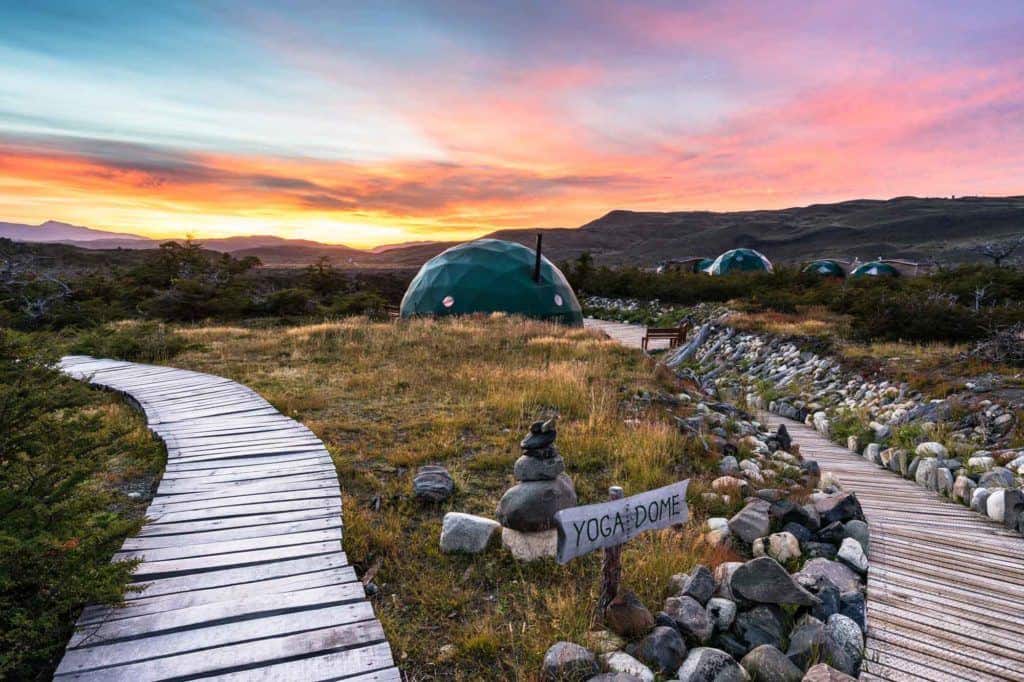
Food in Chile
- Completo – Completo in Spanish means “complete.” The completo is a hot dog that is sold at practically every street corner in Chile. It’s a bigger hot dog than the American ones and it is typically covered in mayonnaise, tomatoes, pickles, sauerkraut and onions. There is another popular version called “Italiano,” and it is typically garnished with tomatoes, mayo and avocado!
- Chilean Empanadas – These are a favorite snack among the locals. The most traditional filling is pino, which is a mixture of minced meat, hard-boiled egg, raisins, black olives and onions.
- Pastel de Choclo – A pie based on the new, tender corn of the season. The filling is pino (same as in empanadas) and they also have a version that includes a boiled chicken.
- Churrasco and Chacarero – Chilean steak sandwiches that are served throughout the day. The base ingredients are the same: a thin slice of sirloin steak (churrasco cooked a la plancha) and two slices of bread (pan amasado). The difference is that the churrasco sandwich is either with avocados (con palta), with tomatoes (con tomatoes) or complete (which means avocado, tomatoes and mayonnaise). The Chacarero comes with tomatoes, green beans and green peppers (aji verde).
- Sopaipillas – Fried flat breads. They are made from pumpkins, flour and butter. These fritters are one of the most popular street foods and are eaten all over the country. You can have them sweet or savory. But most Chileans eat them savory (with ketchup, pebre or mustard).
Is Chile Safe?
Travelling in Chile is very safe when compared to other South American countries.
The most common problem is petty theft in larger cities, beach resorts and bus terminals.
But there is a problem with with stray dogs. Scabies are a common problem with these dogs so don’t pet them – because it’s highly contagious.
If you’re driving be prepared for a pack of dogs to bark and run after the bumper.
Some Chilean beaches have strong offshore rip currents that are very dangerous even for experienced swimmers.
Always make sure to find the post sign on the beach if it’s okay for swimming or not.
Crime is usually concentrated in urban areas but also in more rural tourist destinations during high season.
Take regular safety measures in order to prevent any incidents.
If you’re staying in a cabin make sure to close and lock windows before leaving.
At the beach never leave your valuables unguarded when going for a swim.
If you’re renting a car, don’t leave it unattended or unlocked but make sure to have its seat and floors bare and all your possessions in the trunk.
Avoid political protests, especially in Santiago, as they have the tendency to sometimes escalate into violent clashes with police.
Medical Care in Chile
Healthcare in Chile is some of the best in all of South America – especially in Santiago.
The World Health Organization ranked Chile as the 33rd best country for healthcare standards.
Many doctors speak English, as they’ve been educated abroad.
This ensures better quality of care and that you can likely communicate the health issue with better success than in other countries.
If something unfortunate happens to you while travelling in Chile and you find yourself in need of medical assistance you will have to decide between the public and private healthcare.
Both of these systems have emergency facilities. But the privately funded health facilities will be more strict in ensuring payment up front.
A form is required upon arrival which guarantees that fees will be paid and your health insurance details will be requested.
That said it’s important to remember that a “hospital” is publicly funded and a “clinica” is a private medical institution with better quality services.
Packing List for Chile
Because the climate varies among regions and seasons, this packing list provides you the basics for being comfortable in the majority of circumstances while travelling in Chile.
You will want to adjust accordingly based on your specific travel locations, seasons and activities.
- 2x Long pants
- 5x Short-sleeved shirts
- 2x Long-sleeved shirts
- Undergarments
- 1x jacket windbreaker
- 1x Rain jacket
- 1x walking shoes that are waterproof
- 1x flip-flops
- 1x tennis shoes
- Breathable socks
Miscellaneous Items (optional, as necessary)
- Camera/Tripod
- Power adapter
- Sun hat with a wide brim and a chin strap
- Bandana (because of dust)
- Insect repellent
- Hand sanitizer
- Guide book and a map
- Pocket knife
- Book with everyday phrases in Spanish
Chile Travel Tips
Travelling in Chile is rewarding and exciting. There are many things to see and do.
But whether you are travelling in Chile for a few days, weeks or months there are some basic Chile travel tips for which you should be aware.
- Taking photographs of military buildings and personnel is strictly prohibited.
- Bring an insect repellent (especially during summer) to protect against bugs such as the tábano (a large biting horsefly).
- Make sure to get all your pre-trip vaccinations.
- Tap water is safe but it has high mineral content so it might cause some stomach discomfort. Bottled water is plentiful and reasonably priced in most places and makes for a great alternative to tap water.
- Most restaurants will include a 10% tip on your bill. It is always good to check to make sure that you are supporting the local food workers.
- It is best to change money in one of the change offices in Santiago rather than in rural areas. You may not always be able to find places to exchange currency in rural areas. Having a few extra US Dollars might get you out of a bind if you run out of Chilean Pesos.
- If you’re traveling to different regions of the country – pack accordingly! The country has several different climates hence extremely different weather conditions.
Check Out Our Chile Posts
30 awesome things to do in easter island, backpacking in patagonia – ultimate travel guide [2024], 19 epic things to do in san pedro de atacama, chile (2024 guide), hiking in patagonia – the ultimate guide to the best treks, backpacking in chile – the ultimate travel guide [2024], the best adventurous things to do in puerto natales, chile (2024 guide), why chile shouldn’t be missed off your adventure travel itinerary, 30 photos that prove chile is insanely epic, discovering sustainability at ecocamp in torres del paine, sailing the chilean fjords on a skorpios glacier cruise, welcome home – santiago’s best boutique hotel, casasur.
The Cost of Travel in Chile: A Detailed Budget Breakdown
Long and narrow are two words that spring to mind when you think of Chile. Located along South America’s western edge, the Pacific follows the country down more than 6,000 kilometres of coastline.
We entered Chile overland from Bolivia after two fabulous nights touring the Uyuni Salt Flats. A land of varied climates and natural events, we thoroughly enjoyed our two weeks exploring the slender country of expansive desert, bustling cities and wine regions.
Our first stop? The Atacama Desert; a magical spot. From there, we made our way across to the coast, then downwards.
The eclectic scenery was one of the main things we loved about Chile – from biking through the Moon Valley and gazing up at the night sky in Vicuña to taking a local bus to the gloriously green Elqui Valley and the land of pisco.
As with the rest of our travels through South America, we got about by road, mostly using buses – they’re more like what we’d describe as coaches. Comfy, affordable and with reclining seats and air-con, they served us well. We mostly used Turbus and Pullman, with some offering a breakfast bag for overnight journeys.
Right, time to jump into our Chilean escapades.
After a tour-laden time in Bolivia, we were ready for a slightly more chilled time in Chile. We managed that balance well – still seeing tons and doing some excursions, but fewer multi-dayers.
Hot sunny days, sandy beaches, vibrant street art, beautiful landscapes and the opportunity to sample wine and an array of pisco sours describe our two weeks.
It’s also worth mentioning that we travelled to Chile in high season (December), bumping hotel costs up. Consider shoulder season (late September-November and March-May) as an alternative.
Same as my Bolivia budget guide , I’ll reference costs in US dollars (or the native currency), because most readers are from the States. The Chilean Peso (CLP) is the native currency – at the time of writing this, 1 USD is just under 900 CLPs.
And as always, just to confirm, I paid for everything myself, making this a comp- and press-free budget guide.
What’s Included in This Post
What does the budget breakdown you’re about to read cover? Places to stay, transportation, things to do, food, and miscellaneous costs.
Our time in Chile was fun yet relaxing, filled with an array of activities as well as downtime. We left wanting more which can only be a good sign. Continue reading for more details.
How to Save Money on the Cost of Accommodation in Chile
As always with travel, it’s possible to cut your accommodation costs down to zero if you have the time and patience to seek out an offer.
Housesitting is a great option for free accommodation. This is where you’ll take care of somebody’s house while they’re away, and usually look after their pets, too. It’s best for long-term travellers or retirees as you can’t pick and choose dates and destinations, so you need to have a lot of flexibility as to where you go and at what time of year. If you do have that freedom, it’s a wonderful way to cut down your travel expenses, soak up some home comforts, and live like a local for a while. I have friends who have housesat in castles before! For free! Trusted Housesitters is the best site for getting started with housesitting, as they have the highest number of listings.
I’m suspecting, though, that for most of you, you’re not interested in the free accommodation and just want somewhere clean, safe, and affordable to rest your head each night. If that’s the case, there are several options available for you.
And, of course, there are always hotels, which will usually come in at around $40-$100 a night for a decent, clean, mid-range property in a central location. I always use Booking , as they have the most accommodation options for the cheapest prices.
The Cost of Accommodation in Chile
As always, researching accommodation options paid off. Getting online and reading reviews served us well throughout our travels. We found some fab places to stay in Chile, from hotels and boutique hostels to cabanas. A tasty breakfast was included for the most part (always a bonus). Or, there was a kitchen for us to cheaply prepare our own.
So, here’s where we stayed in Chile:
Santiago: Safety in Santiago has, unfortunately, decreased post-protests-and-pandemic, so there aren’t as many neighbourhoods I’d recommend staying in. Providencia, however? It’s an oasis of safety and serenity — and I absolutely adored the guesthouse I chose to stay in. Casa La Barca is a wonderful property, with friendly staff, comfortable rooms, a gorgeous terrace, and one of the best breakfasts I had in the country. Located just a 10-minute walk from Barrio Italia, it was in a great location for exploring the city.
Valparaiso: We stayed at this contemporary Cerro Alegre apartment hotel with mountain views, a striking glass frontage, wood flooring, and a dinky balcony for admiring said vistas. Our super roomy space had a kitchen, sitting areas and high ceilings for a light and airy feel – we felt spoilt. Even more so when a first-rate breakfast was delivered to our room each morning. Centrally located a five-minute amble from Cerro Concepcion and with a host giving excellent restaurant recommendations, this was a real find.
San Pedro de Atacama: Located just a 10-minute walk from the centre of town and main plaza, this comfy and stylish hostel felt more like a guest house. Our spacious, colourful room was $71 per night and had a little sitting area, plus a table and chairs outside in the courtyard where we enjoyed a bottle of wine in the evening sun. An ample buffet breakfast, friendly staff, and free bikes rounded the picture off. The town of San Pedro de Atacama had a real tourist vibe to it, with terracotta buildings and mostly pedestrianised narrow roads. The varied surrounding landscape of desert, geysers, salt flats, volcanoes, and hot springs offered tours aplenty.
La Serena: This rustic colonial spot just a three-minute stroll from Plaza de Armas was coincidentally also $71 a night, and well worth it. A top breakfast buffet was included, our room was spotless, and amicable staff were on hand to answer questions. The stylishly decorated space featured wood floors, an outside area with garden and courtyard views, and a communal kitchen. We were just a half an hour walk from the beach and promenade, too. La Serena itself may not have had loads to offer in terms of things to do, but it was an excellent base for a trip to Mamalluca Observatory and Elqui. After a day trip one day to the latter, we changed our plans slightly and decided to go back and stay for a few nights to chill in the scenic valley.
Elqui Valley: We upped our budget to $91 a night for this peaceful lodge with a pool on the outskirts of Pisco Elqui. Charming, and again with lovely staff (there seems to be a theme), we were surrounded by lush greenery, mountain vistas and nature. This was our time to kick back, forget about wifi (it was patchy) and recharge. Offering a grocery delivery service, we were able to cook meals in our kitchen and didn’t need to leave the remote spot. Our spacious wooden chalet also boasted an alfresco terrace and a wood burner back indoors – not that we needed that.
The Cost of Transportation in Chile
Generally, we got a rough idea of prices by searching online, and then went directly to the bus terminal a day or two in advance to purchase tickets. More often than not they were cheaper there.
We found travelling by bus easy, comfortable and super affordable – we’d definitely recommend.
Our journey breakdown goes like this:
- Overnight bus from San Pedro de Atacama to La Serena: 15,750 CLP / $20 per person
- Local (micro) bus from Coquimbo to La Serena: 500 CLP / $0.67 per person
- Return local bus from La Serena to Pisco Elqui x2: 12,000 CLP / $16 per person. The reason we did that return journey twice: once for the day trip and again when we stayed in the valley. We got ourselves back to La Serena as that was easier for onward travel to Valparaiso.
- Bus from La Serena to Valparaiso: 9,000 CLP / $12 per person
- Return local (micro) bus from Valparaiso to Viña del Mar: 1,500 CLP / $2 per person
- Bus from Valparaiso to Santiago: 2,250 CLP / $3 per person
OUR TOTAL COST OF TRANSPORTATION IN CHILE CAME TO $107.34. THAT’S AN AVERAGE OF $8.26 PER DAY, OR $4.15 EACH.
THE COST OF ACTIVITIES AND ENTRANCE FEES IN CHILE
Desert, wine regions, starry skies, verdant valleys and the towering Andes – what an amazing mixture of landscapes. Each place we went, we enjoyed some fantastic activities, from relaxing to energetic.
Carry on reading for a rundown:
Valle de Luna (Moon Valley) entrance fee, San Pedro de Atacama: 3,000 CLP / $4 per person . We used the free cycles from our hostel to bike out and self-guide to this otherworldly landscape of dunes, salt caves, craggy mountains and distinctive rock formations. We took a packed lunch and spent the day there, admiring the spectacular scenery. Tip: if you stay for sunset (which we did), be sure to leave before it gets dark (or make sure you have proper bike lights). We left it a bit late: there was no road lighting, which made for a slightly hairy ride back.
Pisco Mistral Distillery tour , Elqui Valley: 6,500 CLP / $8.50 per person. A picturesque place, super interesting, with tastings. If you fancy pushing the boat out a bit, the garden was a pretty spot for lunch or a drink.
Mamalluca Observatory night tour , La Serena: 25,000 CLP / $33.33 per person. This included transport to and from La Serena and a guided observation. We spend an incredibly interesting few hours looking up at stars and planets. And, we got to take home amazing pics of the moon, taken from my iPhone up against the lens of the telescope. We’d planned a stargazing tour in San Pedro de Atacama, but unusually, the night we were due to go was cloudy, so it didn’t go ahead. We were so pleased we got another chance.
Museum of Memory and Human Rights , Santiago: 2,000 CLP / $2.50 per person for an English audio guide (recommended). Entrance was free. An enlightening and harrowing insight into Pinochet’s 17-year rule.
Teleférico to San Cristóbal , Santiago: 2,850 CLP / $4 per person return (more on weekends). Enjoy fab views of downtown Santiago from this vantage point.
The Little Wine Bus Maipo Valley tour , Santiago: $97 per person. A fun and affordable way to see the wine region, with a guide, breakfast, lunch, plenty of wine and return transport. Perhaps not for serious wine connoisseurs, but nevertheless an excellent day.
And don’t forget these free activities, too:
Walking along the beach at La Serena to the small beach town of Coquimbo. Keep an eye out for the sea lions – we saw a huge one. The walk was quite long (around 2 hours), so we bussed it back.
Beach chill time at Viña del Mar (a short bus ride from Valparaiso).
Wander the hilly streets of Valparaiso taking in the varied street art. We loved exploring the steep walkways and hilltop viewpoints.
OUR TOTAL COST OF ACTIVITIES IN CHILE CAME TO $298.67. THAT’S AN AVERAGE OF $22.98 PER DAY, OR $11.49 EACH.
THE COST OF FOOD IN CHILE
With excellent breakfasts included at most places we stayed or else a communal kitchen for whipping something up, we spent virtually nothing on the first meal of the day.
Food lovers that we are, we don’t go anywhere without trying regional dishes. Two we devoured time and again in Chile for lunch were:
Completo hot dog: Spanish for complete or total, these were sold everywhere, from street food vendors to bars. Definitely not the most healthy, but filling and budget-friendly ($2-3), they were loaded with smashed avocado, onion, diced tomato, sauerkraut, and tons of mayo. Almost too much – and I’m a mayonnaise fan. There was also an Italiano version without the sauerkraut and onion. Messy but tasty.
Empanadas: We love a filled pastry snack, so we were in our element. Fillings ranged from ‘pino’ (minced beef, onion, raisins, hard-boiled egg and olives) and cheese to prawn. Prices varied quite a bit, from $0.75 to $2.50. Yummy and satisfying.
We sometimes ate these for dinner, too. Otherwise, something local at a casual eatery. Fish was big in Chile, with dishes such as seafood soup (sopa de mariscos) very popular. We typically spent $5-$10 per person on dinner.
Average daily food cost: $11.69 per day, or $5.85 each
We drank plenty of water and beer, sampled some Chilean wine and had plenty of piscos sours! The Chilean variety differed from the Peruvian version – no egg white was used. My fave was a pineapple version in the Elqui Valley at El Durmiente Elquino.
Litre bottles of aqua were around a dollar, beers were $2-3 a pop (cheaper if we bought them from a supermarket), pisco sours ranged from $4-$6, and wine very much varied depending on where we bought it.
Must-try? Dive bar La Piojera in Santiago, where we’d read about an interesting-sounding drink called Terremoto (earthquake). At 3,000 CLP ($4) each, it consisted of fermented sweet white wine called Pipeño, pineapple ice-cream, and either grenadine or fernet (a herbal, aromatic spirit). An interesting combo to say the least. The bar had a great atmosphere, we chatted to locals, and left a few sheets to the wind.
Average daily drink cost: $18 per day, or $9.00 each
OUR TOTAL COST OF FOOD AND DRINK IN CHILE CAME TO $173. THAT’S AN AVERAGE OF $29.69 PER DAY, OR $14.86 EACH.
The Importance of Travel Insurance in C hile
And finally, I’m a firm believer that if you can’t afford travel insurance , you can’t afford to travel, and this holds true for every country in the world.
Travel insurance will offer compensation if your flight gets cancelled, pay for you to replace your lost luggage, cover your medical bills if you get break a leg while hiking in Patagonia, and ensure you don’t face any emergency travel costs to get back home for a family emergency. Nobody likes to think about things going wrong on their trips, but travel insurance is a must in order to ensure you’re not out tens of thousands of dollars if the worst case scenario comes true.
I use and recommend SafetyWing travel insurance for visitors to Chile. Firstly, they’re one of the few companies out there who will actually cover you if you contract COVID-19. On top of that, they provide worldwide coverage, don’t require you to have a return ticket, and even allow you to buy coverage after you’ve left home. If you’re on a long-term trip, you can pay monthly instead of up-front, and can cancel at any time. Finally, they’re cheaper than the competition, and have a clear, easy-to-understand pricing structure, which is always appreciated.
For a two weeker in Chile, you’ll spend $1.50 a day on insurance.
HOW MUCH DOES IT COST TO TRAVEL IN CHILE?
Our daily spends per person:
- Accommodation: $39.60 per day
- Transport: $4.15 per day
- Activities: $11.49 per day
- Food and drink: $14.86 per day
- Miscellaneous: $1.50 per day
Grand total spent in Chile: $71.60 per person per day .
As we left the capital city of Santiago and headed east on a scenic bus journey into Argentina, we added Chile to our list of countries to revisit. The scenery we experienced was spectacular, and we knew there was still more to see…
HOW MUCH DID YOU THINK IT WOULD COST TO TRAVEL AROUND CHILE?
Lauren juliff.
Lauren Juliff is a published author and travel expert who founded Never Ending Footsteps in 2011. She has spent over 12 years travelling the world, sharing in-depth advice from more than 100 countries across six continents. Lauren's travel advice has been featured in publications like the BBC, Wall Street Journal, USA Today, and Cosmopolitan, and her work is read by 200,000 readers each month. Her travel memoir can be found in bookstores across the planet.
Related Posts
The Cost of Travel in Mauritius: My Detailed Budget Breakdown
The Cost of Travel in Thailand: My Detailed Budget Breakdown
The Ultimate Guide to Iguazu Falls: Argentina and Brazil
2023: My Travels in Review
The Cost of Travel in South Korea: My 2024 Budget Breakdown
How to Spend Three Magical Days in Cusco, Peru: A 2023 Itinerary
Awesome guide. Hopefully planning on seeing Chile soon.. thought it might cost too much, as it has a reputation for being the most expensive place in Latin America, but it doesn’t seem so bad from your figures.
Thanks for this incredibly useful article! I am planning my next adventure to Argentina, Chile, and Peru and your breakdowns have been so helpful. You need to put one together for Argentina! Anyway, I was wondering how difficult it is to get to the southern reaches of Chile? Obviously we could fly there, but that would be quite expensive, and then the buses would take so long. But is it worth it? I don’t want to miss out on Patagonia! But also, with limited time, I don’t want to spend all of it travelling. What do you think? Save the south of Chile for another trip or make the effort to get down there?
This is such a useful look at your money spent! I’m not surprised that Patagonia is a more expensive place to visit, but I’m sure the views were worth the extra spent!
Another fantastic budget breakdown, Lauren! I’m going to be spending the next three months trekking through Chile and this really helped to give me an accurate picture of how much things are going to cost while I’m there.
Very accurate, Laureen, very accurate. Usually I read stuff that is outdated or a surfacy. I currently live in Santiago and I agree with almost everything, with the exception of the “Museum of Memory” which is just left wing propaganda. The Allende government was asked to resign by a legitimately elected Congress in 1973. They broke all known laws of the era. Pinochet had to act, unfortunately.
As a chilean myself, I have to tell you this is false information. Allende was overthrown by a coup d’état and Pinochet was a bloodthirsty dictator. The Museum of Memory is an amazing opportunity to know this sad part of our history
Leave a reply Cancel reply
Your email address will not be published. Required fields are marked *
Fully customizable Argentina trips ideas
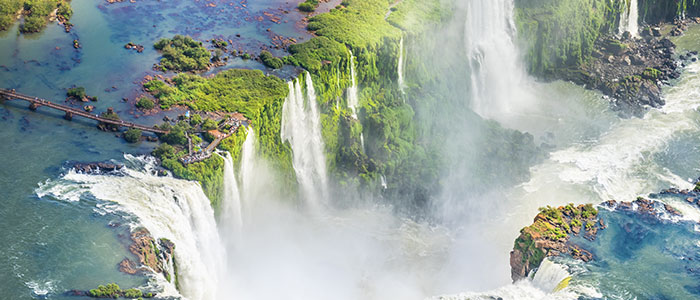
Tango & Falls 6 Days Buenos Aires, Puerto Iguazú
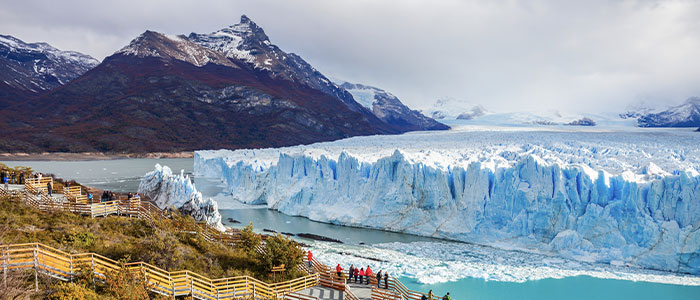
Argentine Treasures 7 Days Buenos Aires, Puerto Iguazú, El Calafate
Argentina destinations
Fully customizable brazil trips ideas.
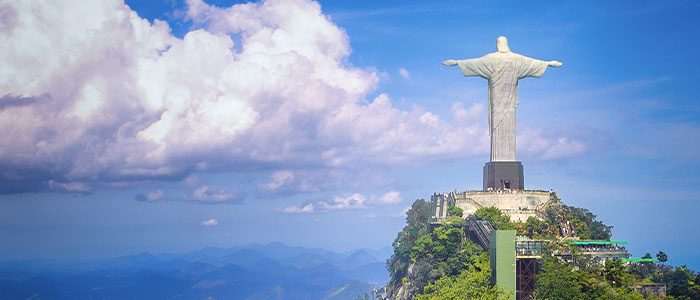
Samba & Falls 6 Days Rio de janeiro & Iguazu Falls
Samba, Falls & Tango 7 Days Rio de Janeiro, Puerto Uguazu, Buenos Aires
Brazil destinations
Fully customizable chile trips ideas.
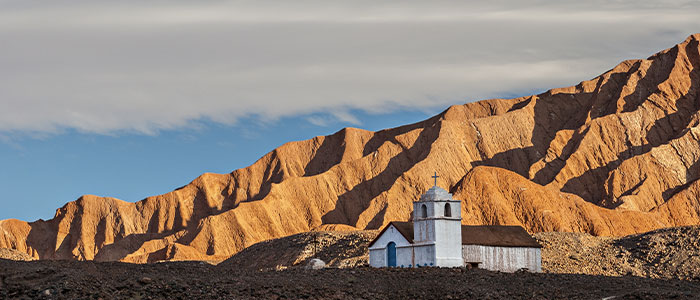
Urban Discovery & Natural Wonders 7 Days Santiago and San Pedro de Atacama
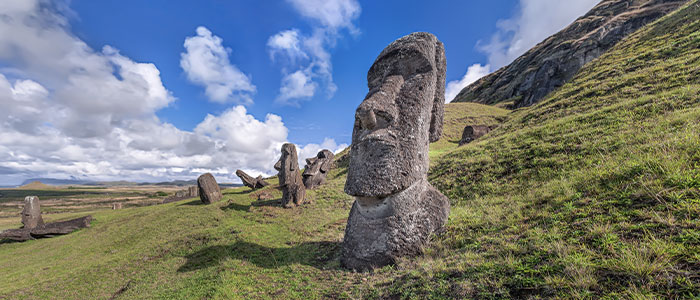
Enchanted Easter Island & Santiago 7 Days Santiago and Easter Island
Chile destinations
Fully customizable ecuador trips ideas.
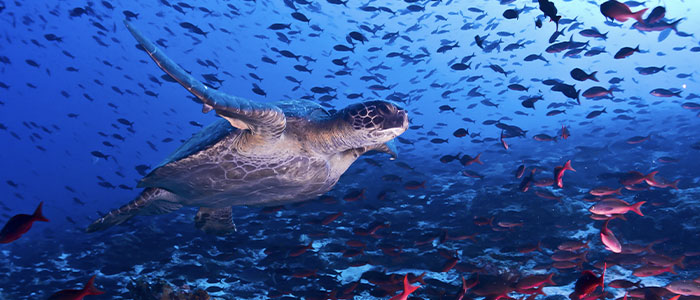
Inspiring Incas & Great Galapagos 11 Days Machu Piccu, Cusco, Sacred Valley, Galapagos Cruise
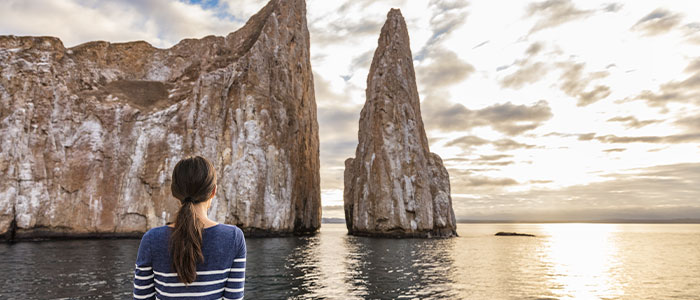
Galapagos Island Hopping Tour 6 Days Galapagos Islands
Ecuador destinations
Fully customizable patagonia trips ideas.
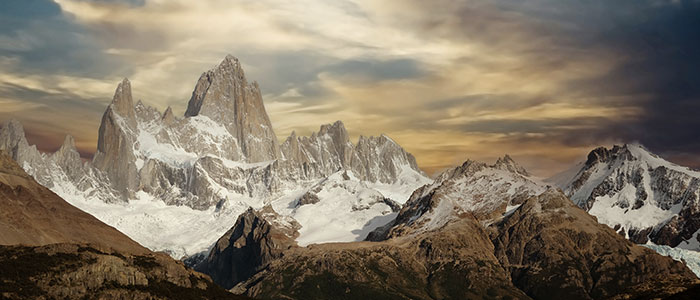
Capitals & Patagonia 12 Days Santiago, Torres del Paine, El Calafate & Buenos Aires
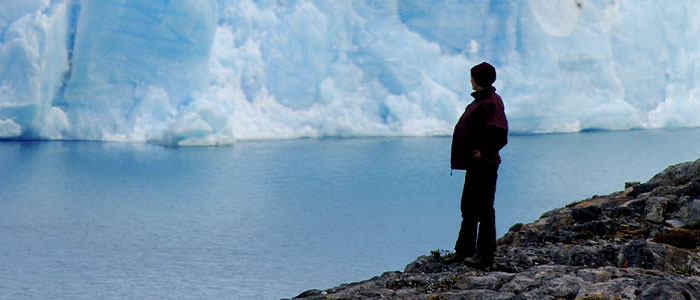
Best of Patagonia 10 Days El Calafate, El Chalten, Puerto Natales, Torres Del Paine
Fully customizable Antarctica trips ideas
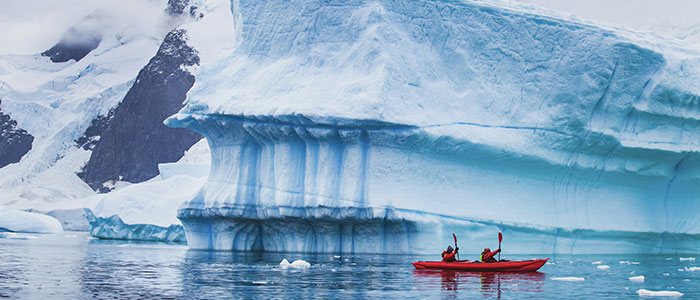
Highlights of Antarctica 8 Days Cruise Antarctica
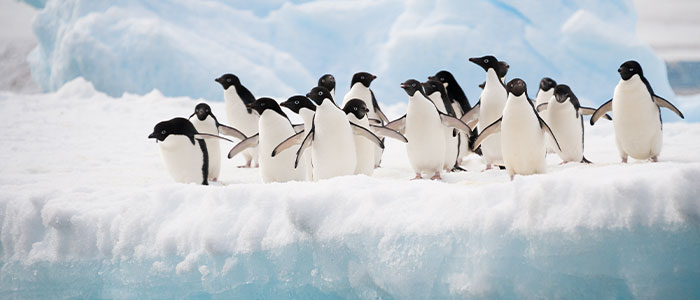
Crossing the Circle 15 Days Cruise to Cruise to the Antarctic Peninsula
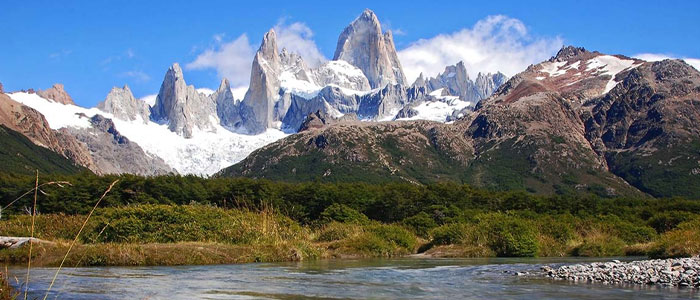
The Best Time to Visit Patagonia in Chile and Argentina
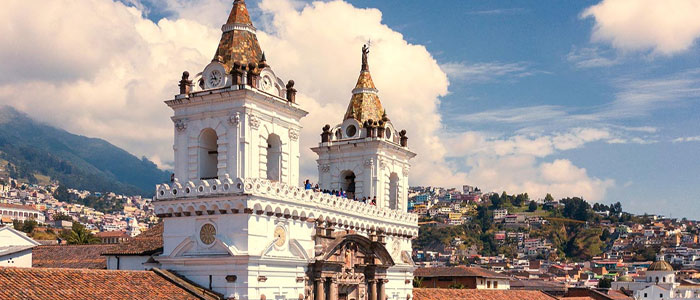
The 20 Best Places to Visit in Ecuador
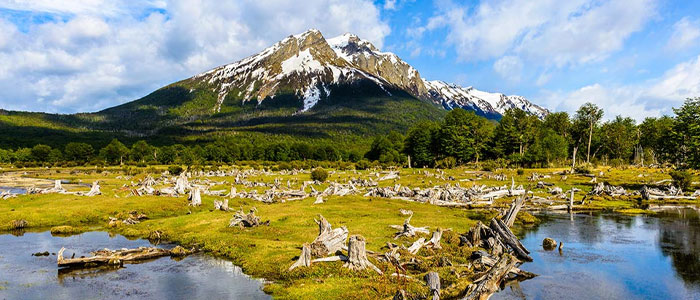
Tierra del Fuego National Park Travel Guide
Testimonials
More than 5,000 GREAT testimonials
Who we are, and why we love travel
Personalized Service
Handpicked hotels, 5000+ testimonials, chile tours.
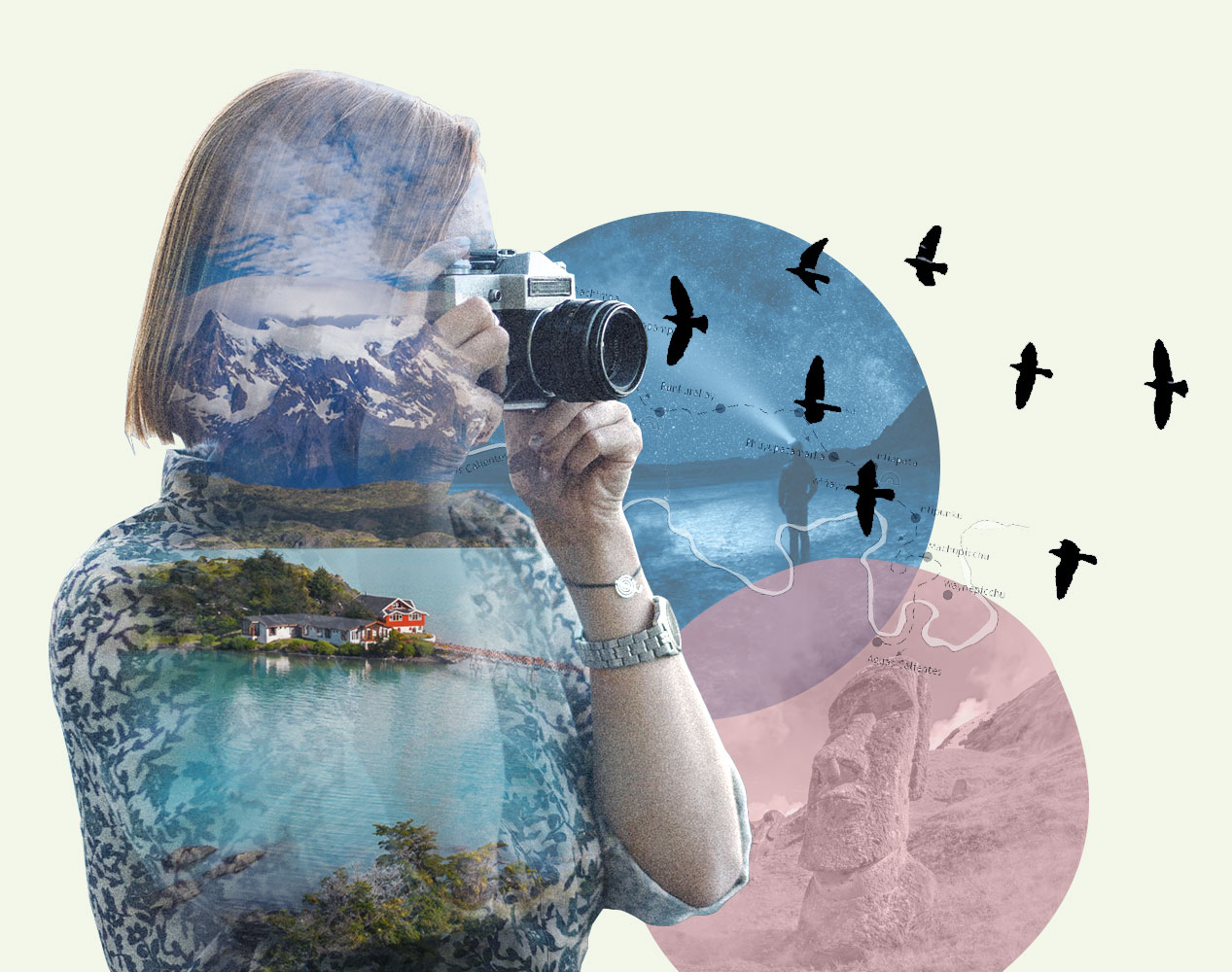
Explore one of South America’s most captivating countries with our Chile tours.
Join small or private group tours.
Great hotels with superior attention.
Founded in 1998. Look at our amazing testimonials.
Our team strives for the utmost quality, comfort, and great value for all of our travelers. Get started customizing your trip with an expert travel advisor.
Designed by Kim MacQuarrie, 4 time Emmy Winner and our travel specialist
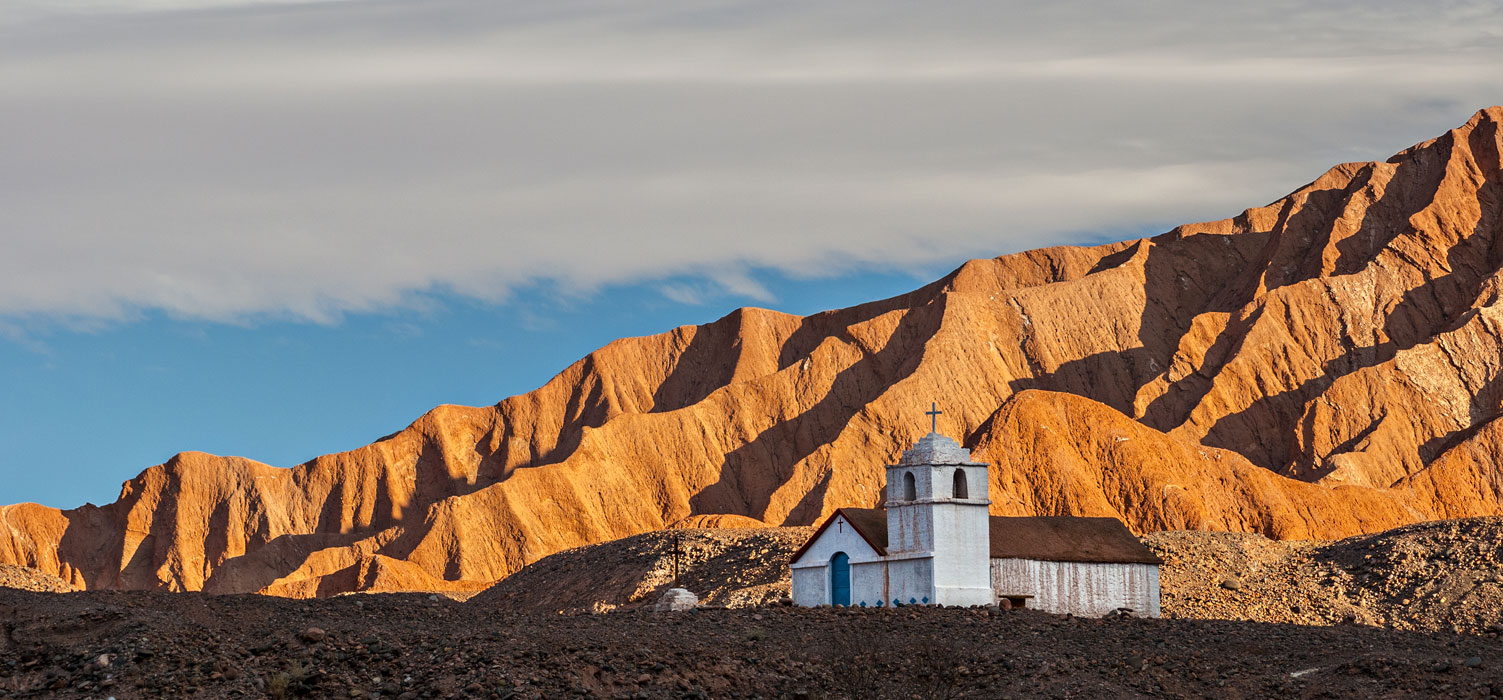
URBAN DISCOVERY & NATURAL WONDERS
Santiago and San Pedro de Atacama
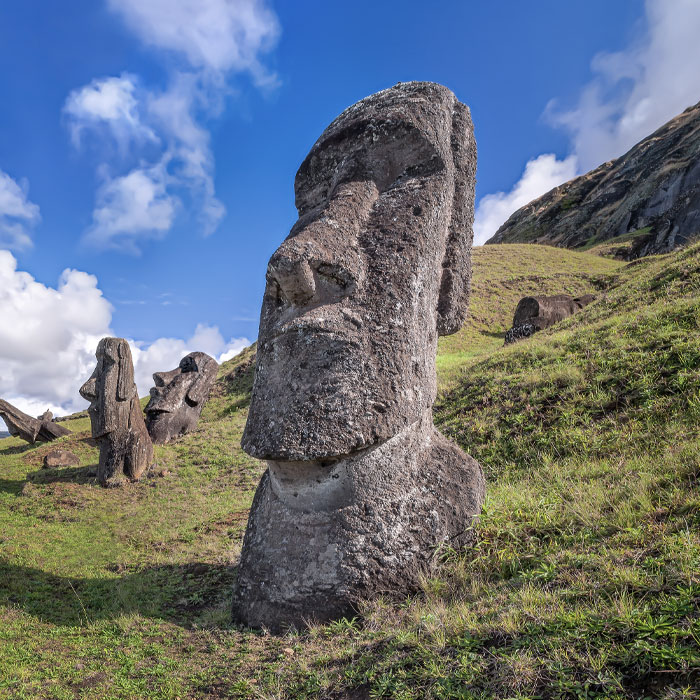
ENCHANTED EASTER ISLAND & SANTIAGO
Santiago and Easter Island
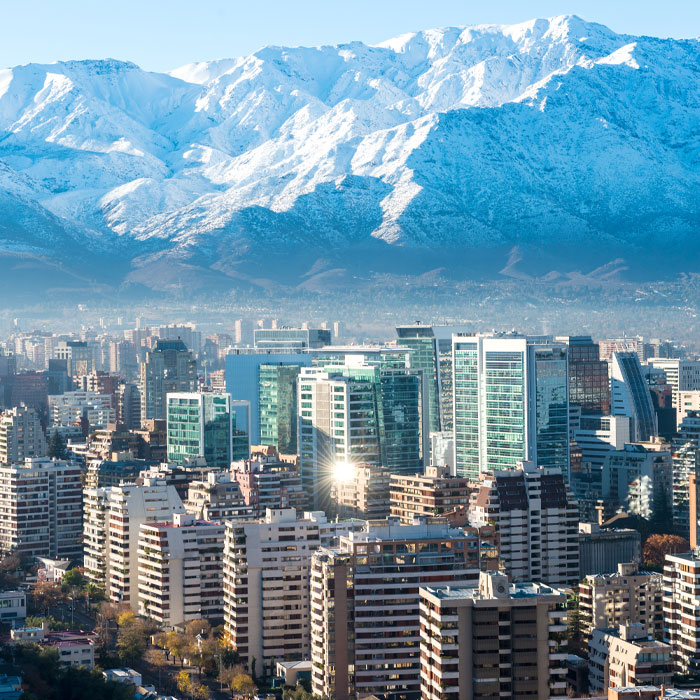
SANTIAGO & WILD COUNTRYSIDE
Santiago, Torres del Paine, and Puerto Varas
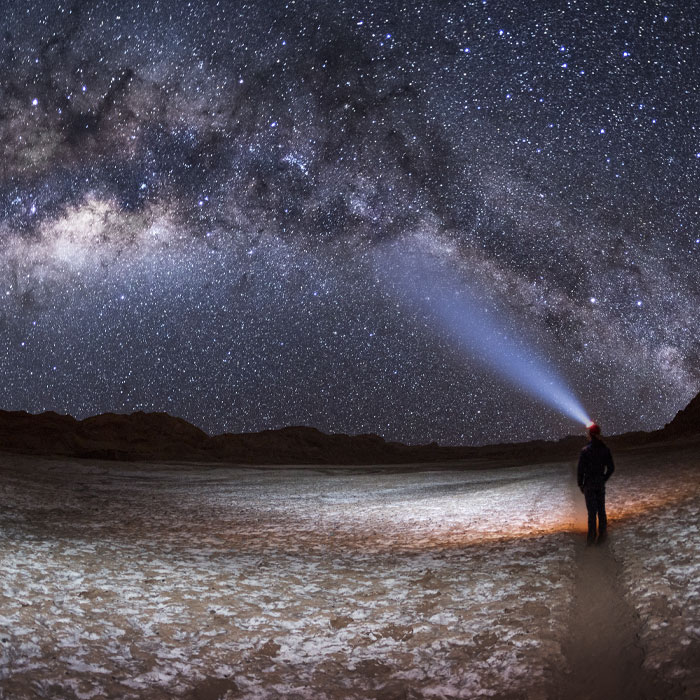
ACROSS CHILE’S REGION
Santiago, Patagonia, Lake District & San Pedro de Atacama
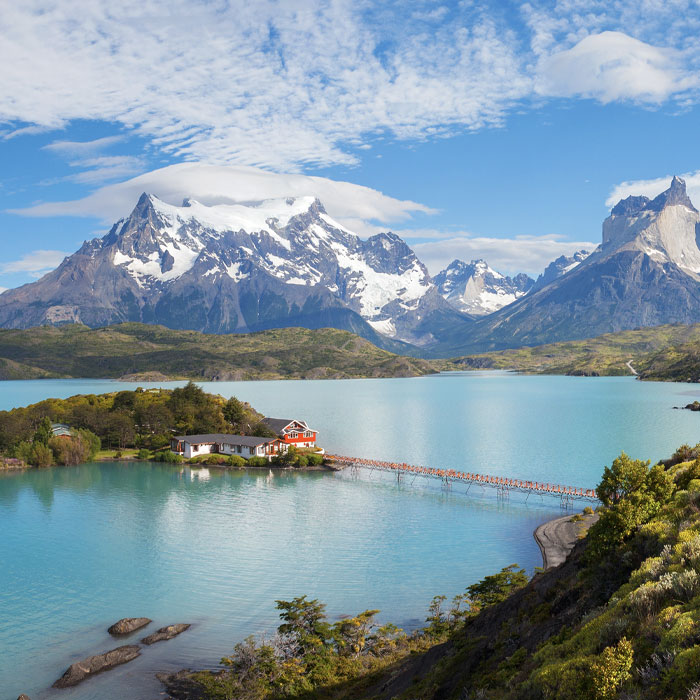
FROM CITY TO PATAGONIAN WILDERNESS
Santiago & Torres de Paine
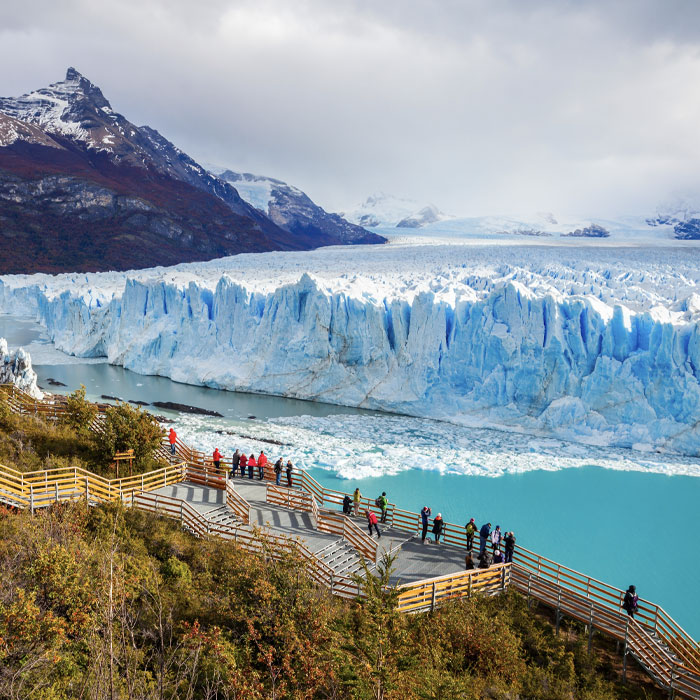
CAPITALS & PATAGONIA
Santiago, Torres del Paine, El Calafate & Buenos Aires
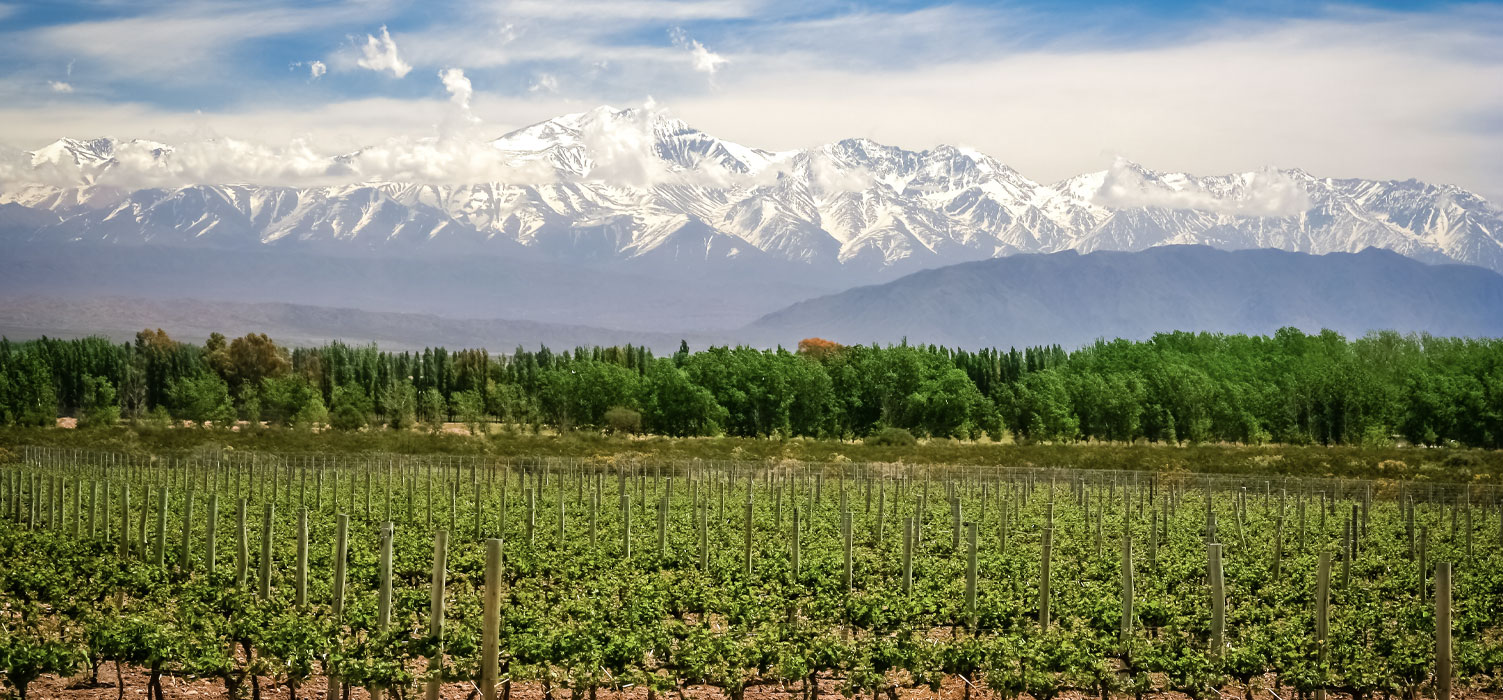
SOUTH AMERICAN WINE TOUR
Santiago, Maipo Valley, La Serena, Elqui Valley, Mendoza, Uco Valley, Buenos Aires
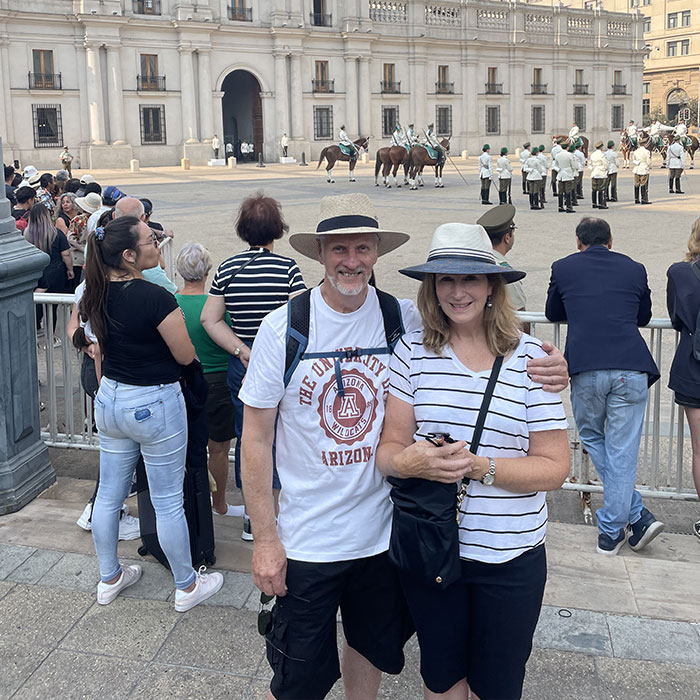
First class, thank you! Our Travel Advisor has been just so helpful and kept us informed every step of the way. Lots of wonderful memories seeing some amazing places and meeting gorgeous people. We love South America and plan on visiting again in the future. Definitely ‘10’!!
Francis Horwood - Australia
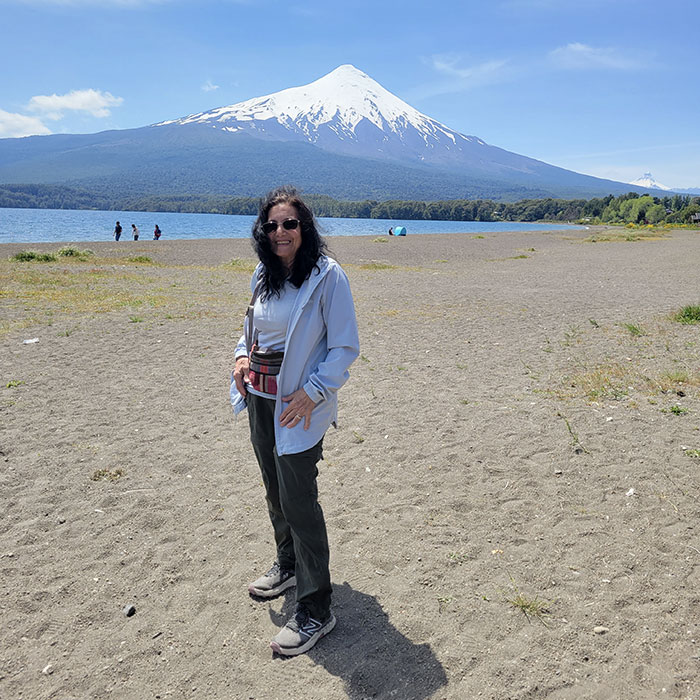
The tour was fantastic!! I loved every minute of it. But I was especially taken with Patagonia.I have recommended it and your entire tour to many people already. I also loved the wine tours, Osorno volcano, Chiloe, Atacama and the alpine geysers, plus all the wildlife, plants, and birds.
Myrna Gifford- Virginia, USA
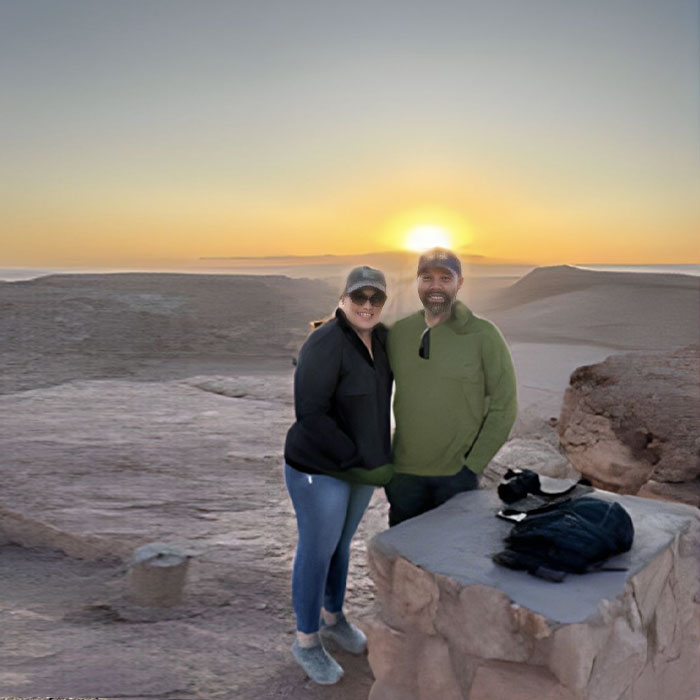
we would give your company a 10 out of 10 on ALL ! The communication was top-notch with every stay. The tour guides were fantastic and we felt completely taken care of. Thank you so very much for helping us plan this Trip of a Lifetime. We will DEFINITELY be recommending you to anyone we know who wants to travel to Latin America.
Vince Stanton - Seattle, USA
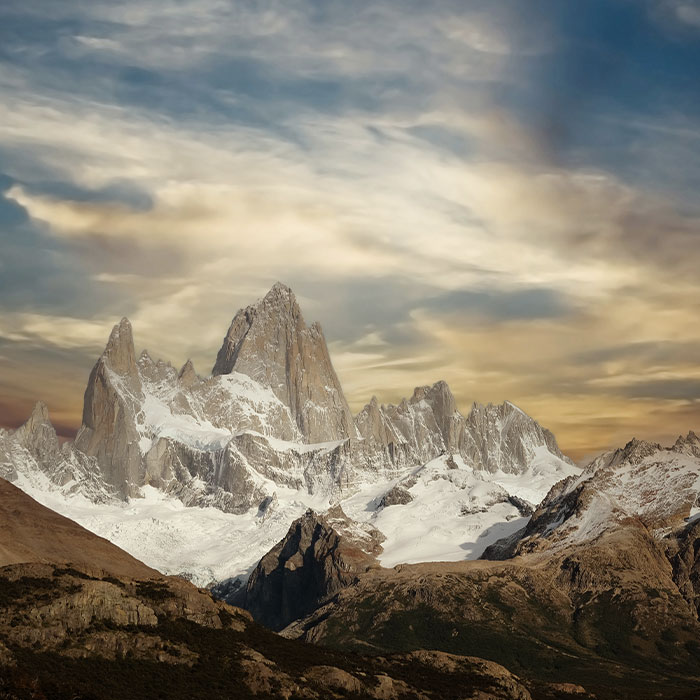
You and your company get a 10/10! Our trip to Argentina and Chile was amazing. Our Travel Advisor was easily one of the best if not greatest travel agents I have ever worked with over 40 years of travel experience with at least 20+ International trips.
Mark Janosky - New York, USA
Discover some of the best places to visit in Chile below.
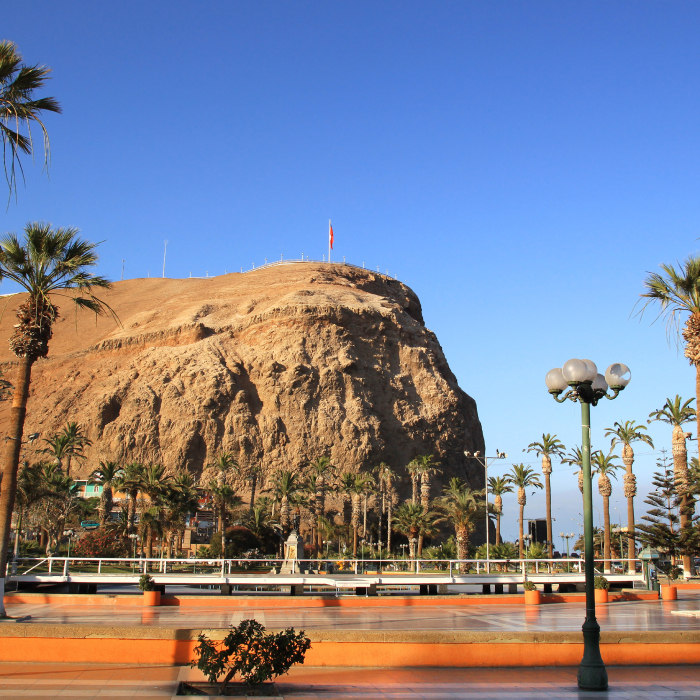
Arica, the “city of eternal spring” and gateway to Lauca National Park, is the capital of the north country and famous for long, lazy beaches and a rich cultural history.

San Pedro de Atacama
The driest desert in the world, the Atacama Desert is also one of the most beautiful with exciting destinations like the Valley of the Moon, the salt lakes and Tatio Geysers.
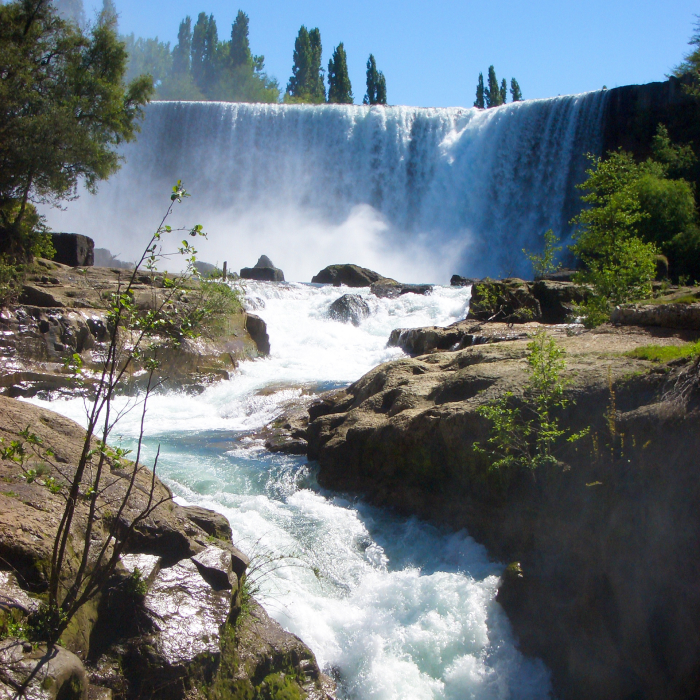
Hit the slopes in Chillan, one of Chile's top ski and snowboard resorts and home to the longest run in South America at eight miles. At night, soak in the natural thermal baths.
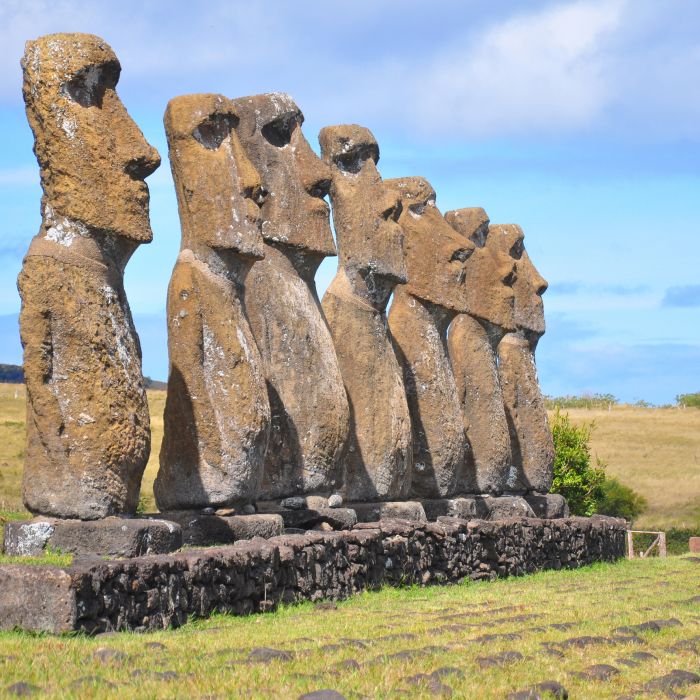
Easter Island
One of the most isolated islands in the world, Easter Island is a majestic getaway destination combining the natural beauty of a volcanic island with the captivating history of the famous Easter Island statues.
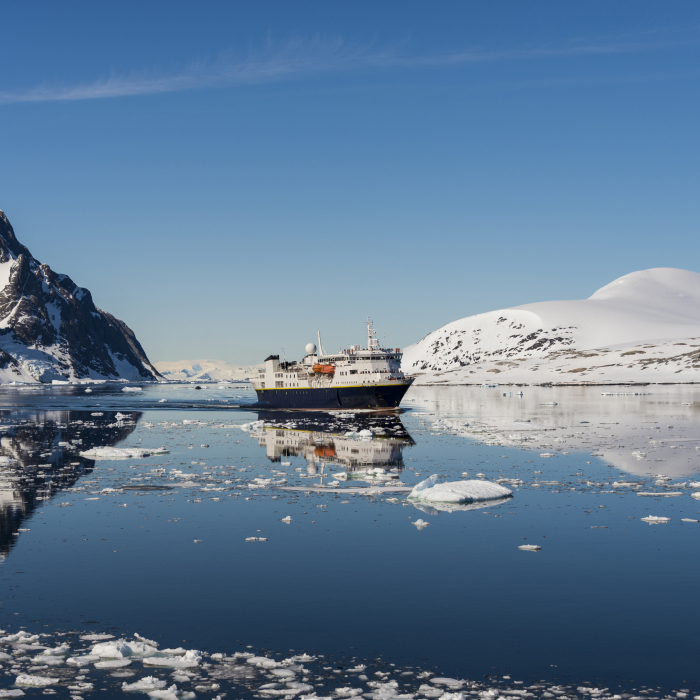
Punta Arenas
The southernmost city on mainland South America, Punta Arenas overlooks the historic Strait of Magellan and the beautiful jagged peaks and white landscapes of Patagonia.
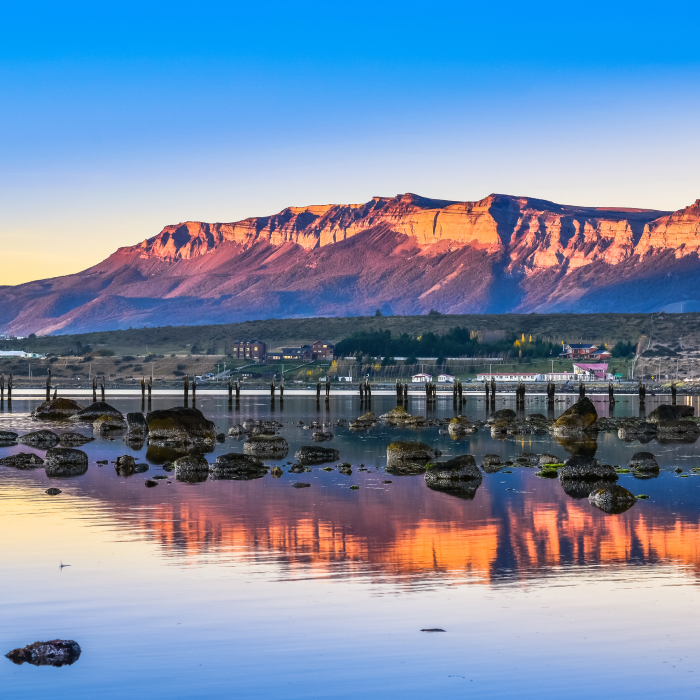
Puerto Montt
With its absolutely stunning location on the Gulf of Ancud, Puerto Montt will lead you directly to the Lake District and the arresting landscapes of verdant valleys, striking mountains and beautiful lakes.
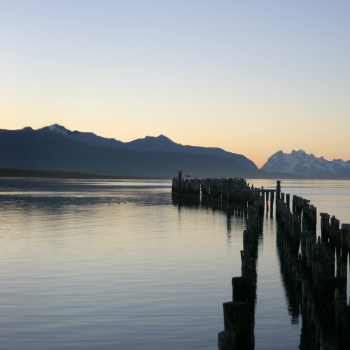
Puerto Natales
Puerto Natales is the gateway to Torres del Paine National Park, and arguably Patagonia’s most spectacular place to visit with immense sweeping landscapes that leave long-lasting impressions.
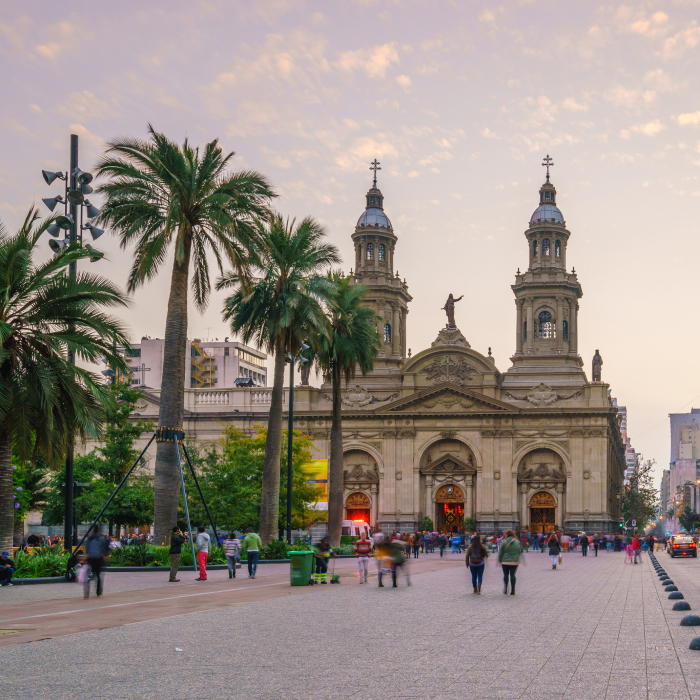
The metropolitan Chilean capital, Santiago is a vibrant cultural hub with fascinating history and lively nightlife, surrounded by world-class skiing and wine valleys.
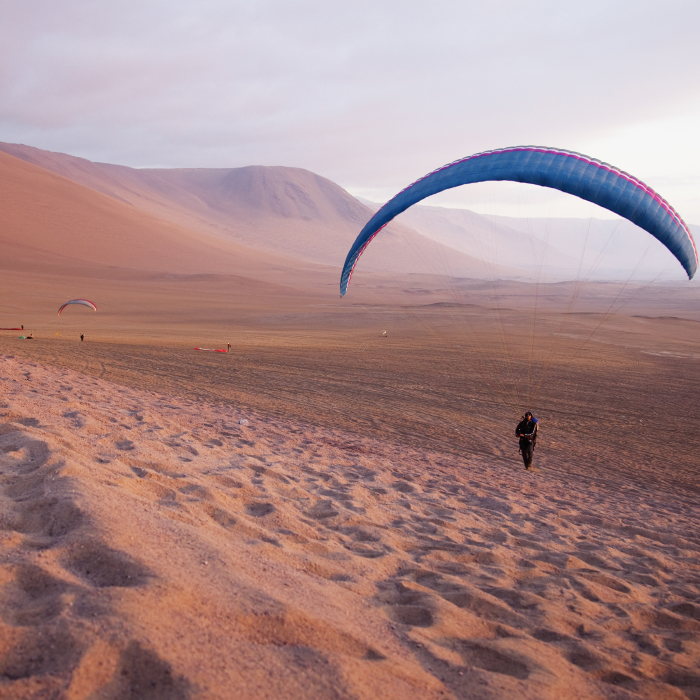
The bustling port city of Iquique is the ideal base to explore the massive geoglyphs, nitrate ghost towns, and thermal baths of the Chilean desert.
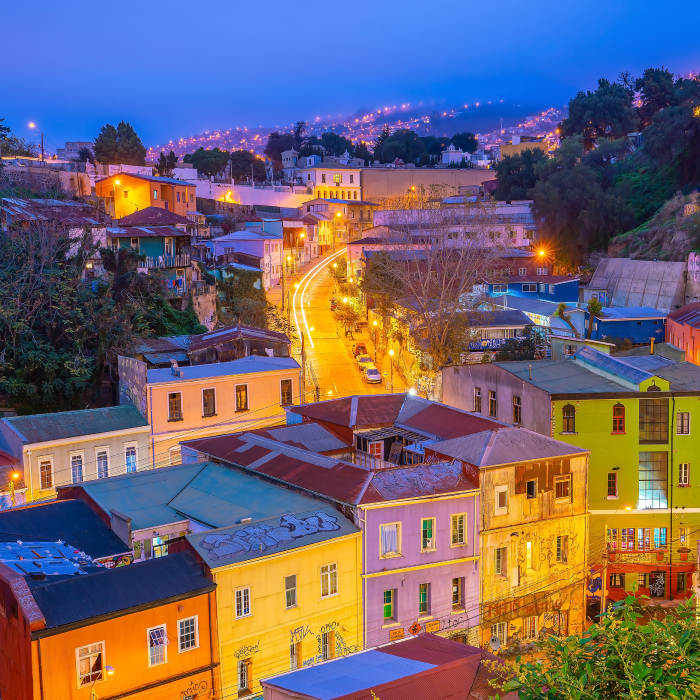
Valparaiso is a UNESCO World Heritage Site and coastal, bohemian city with a peculiar charm that has made it a favorite of writers, artists, and poets for centuries.
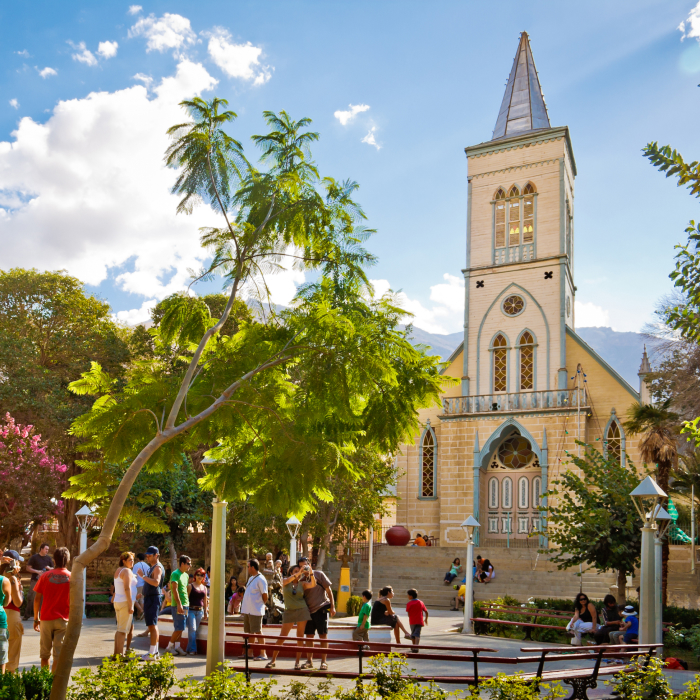
La Serena is located in the Elqui Valley and one of the most beautiful cities in Chile with picturesque churches, sandy beaches, and some of the clearest skies in the world.
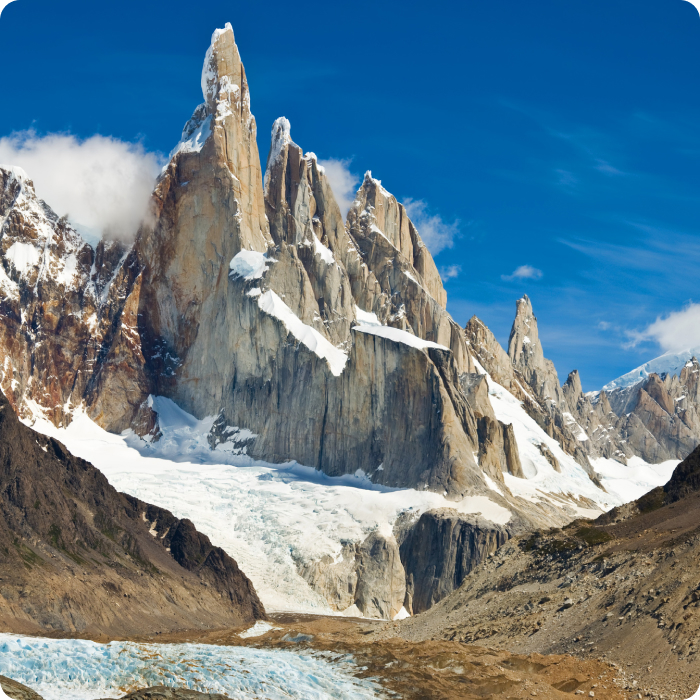
Shared by Chile and Argentina, Patagonia is a wild land of cleaving glaciers, deep forests, and piercingly blue waters that offers countless opportunities for sightseeing, nature watching, trekking and more.
Connect with a Travel Advisor and have an unforgettable journey.
With our team, we'll help you find the best hotels, activities, and flights that fit your budget and preferences. You'll also receive valuable insights into the local culture, customs, and attractions, ensuring that you get the most out of your trip.
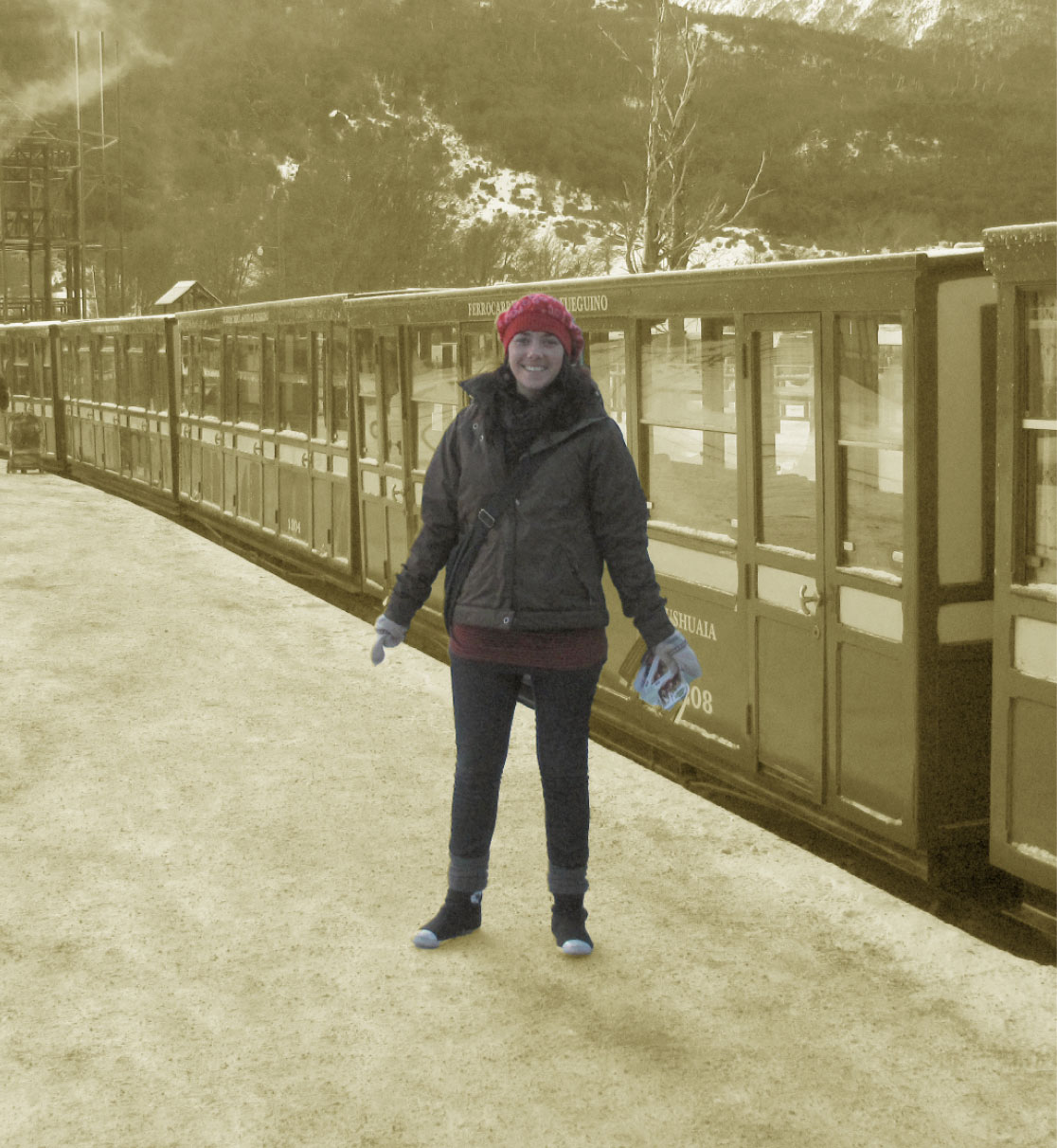
Rylee McGowan San Francisco, USA
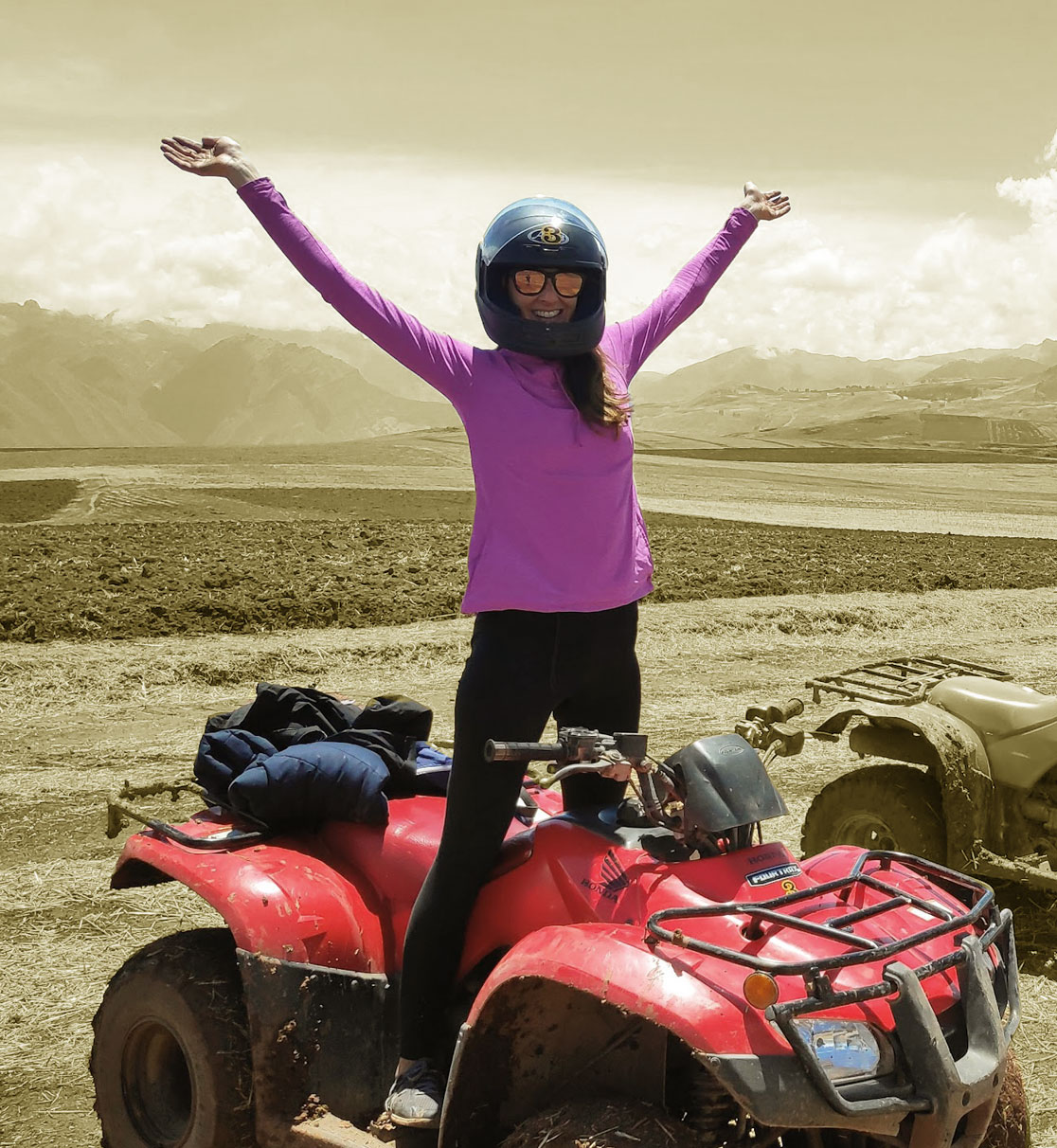
Adrienne Moss South Carolina, USA
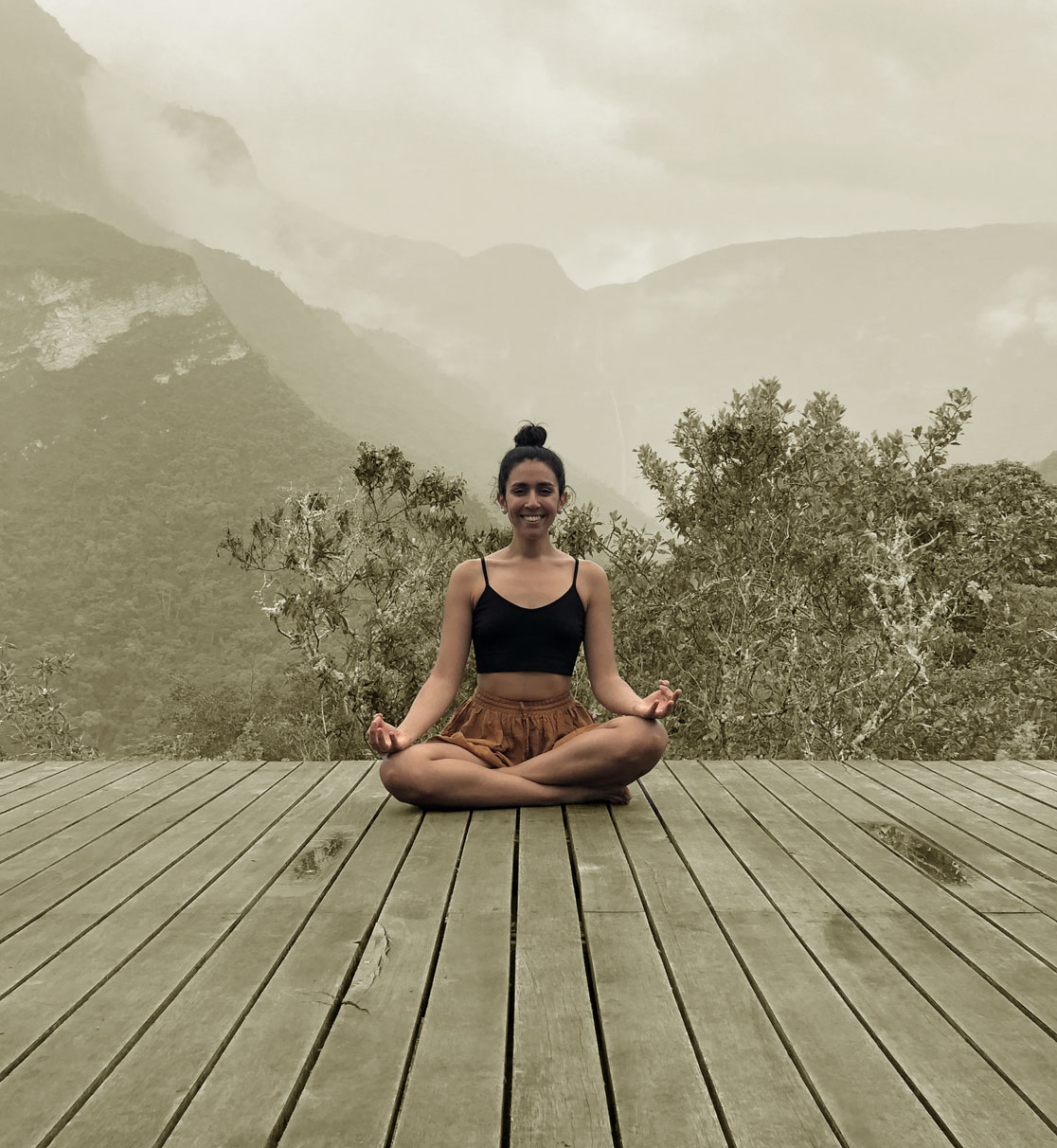
Jana Rodriguez Lima, Peru
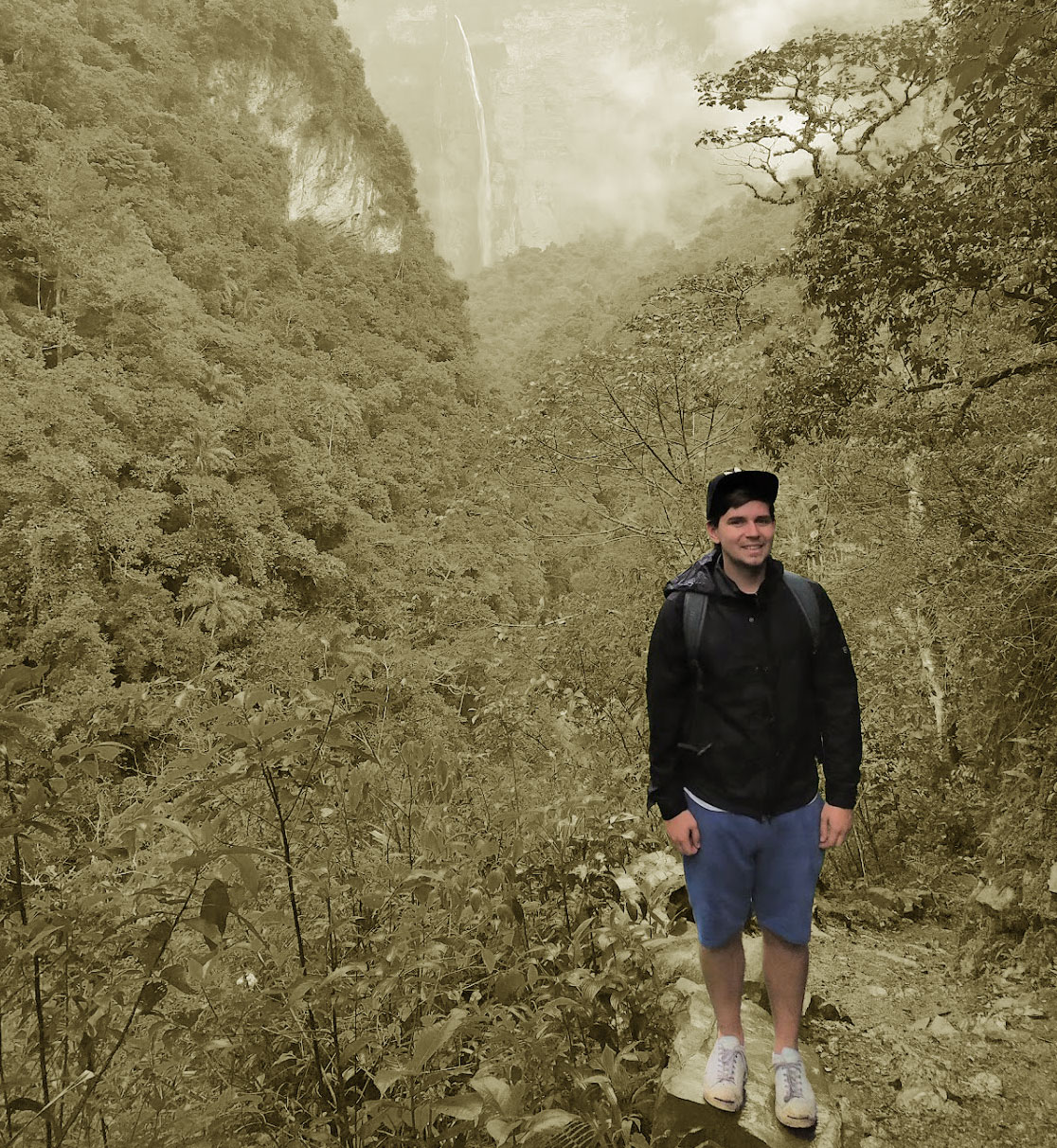
Mikey Blount Prague, Czech Republic
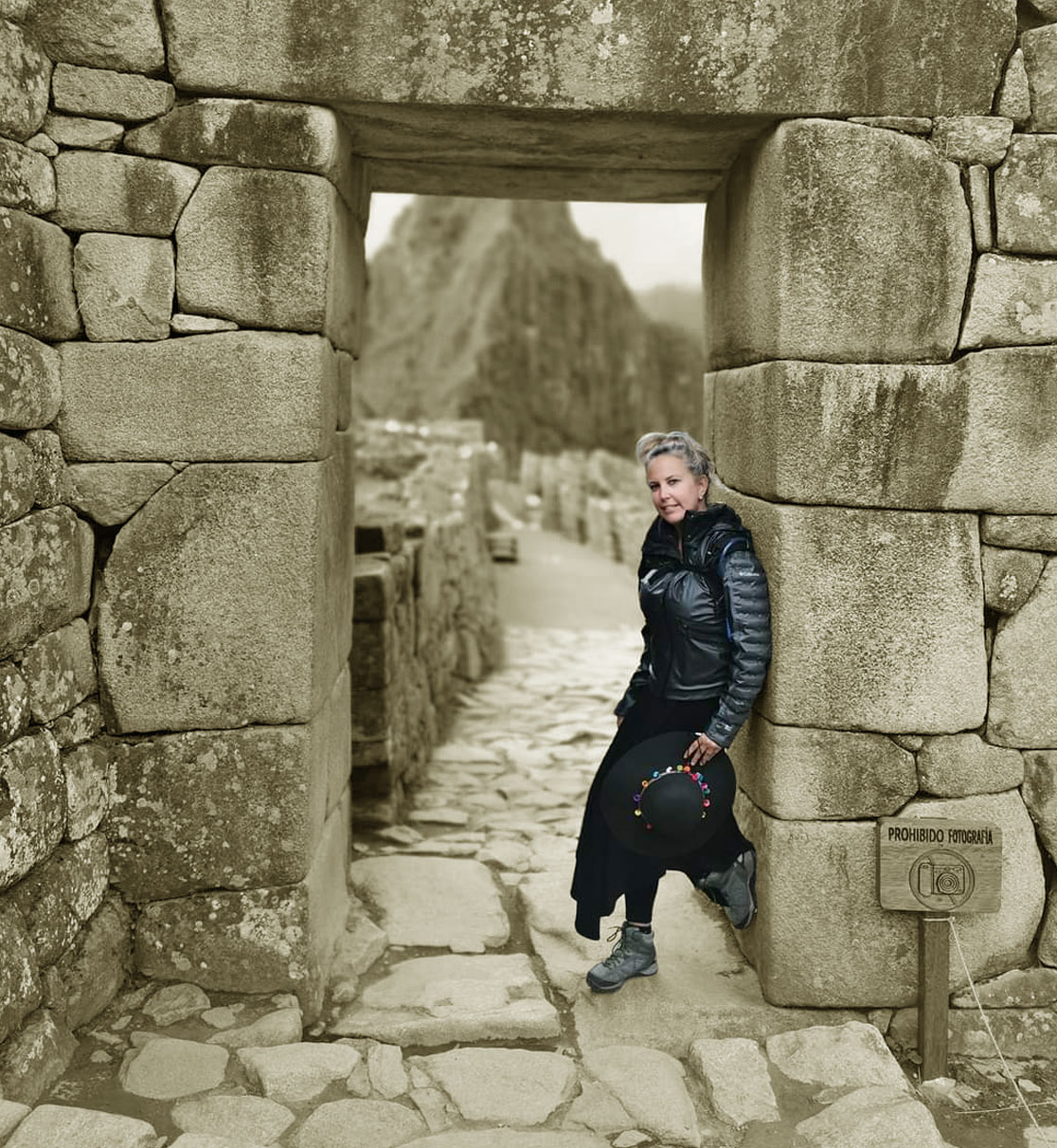
Debbie Sutcliffe Lima, Peru
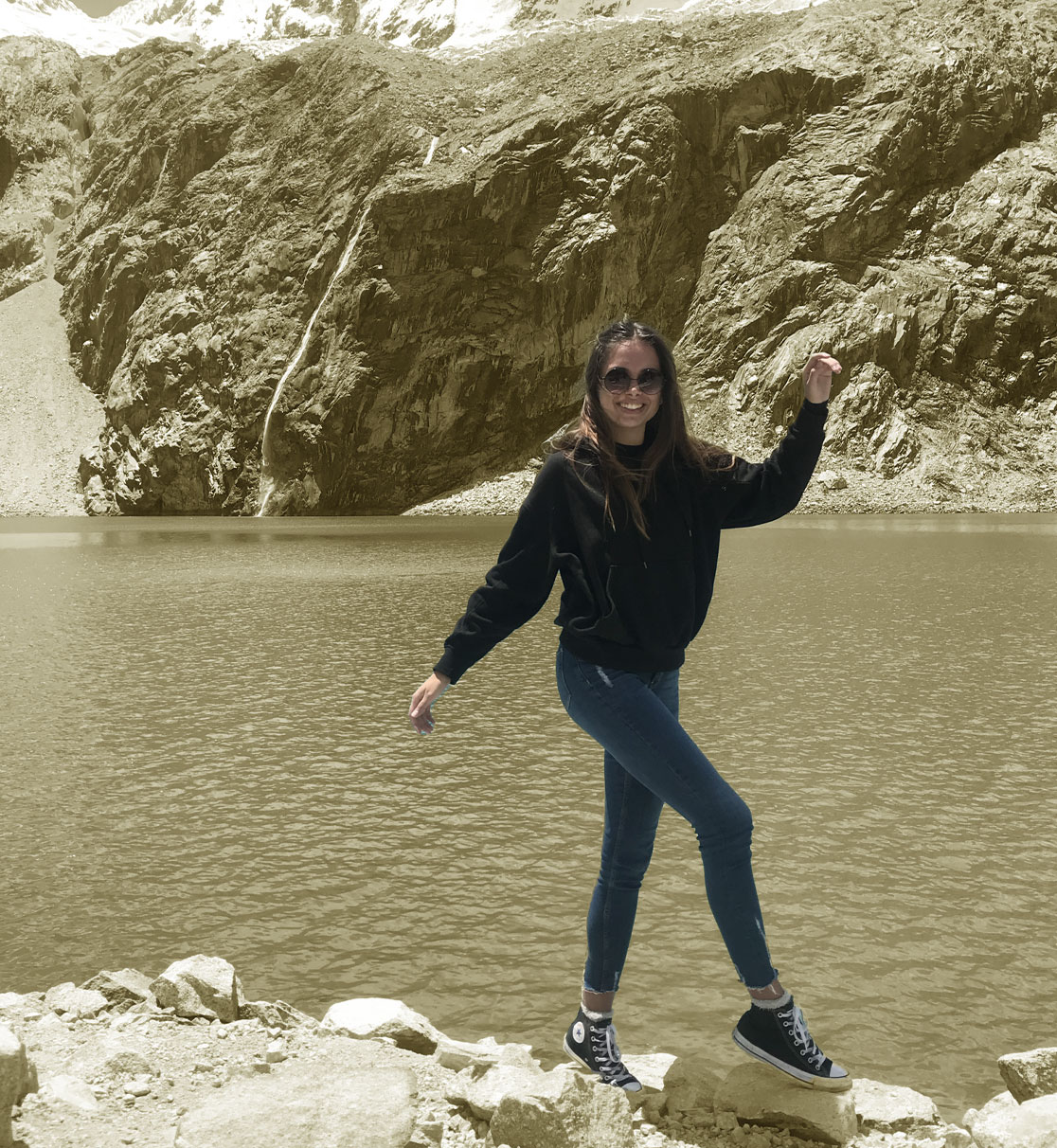
Melissa Schenk Sttutgart, Germany
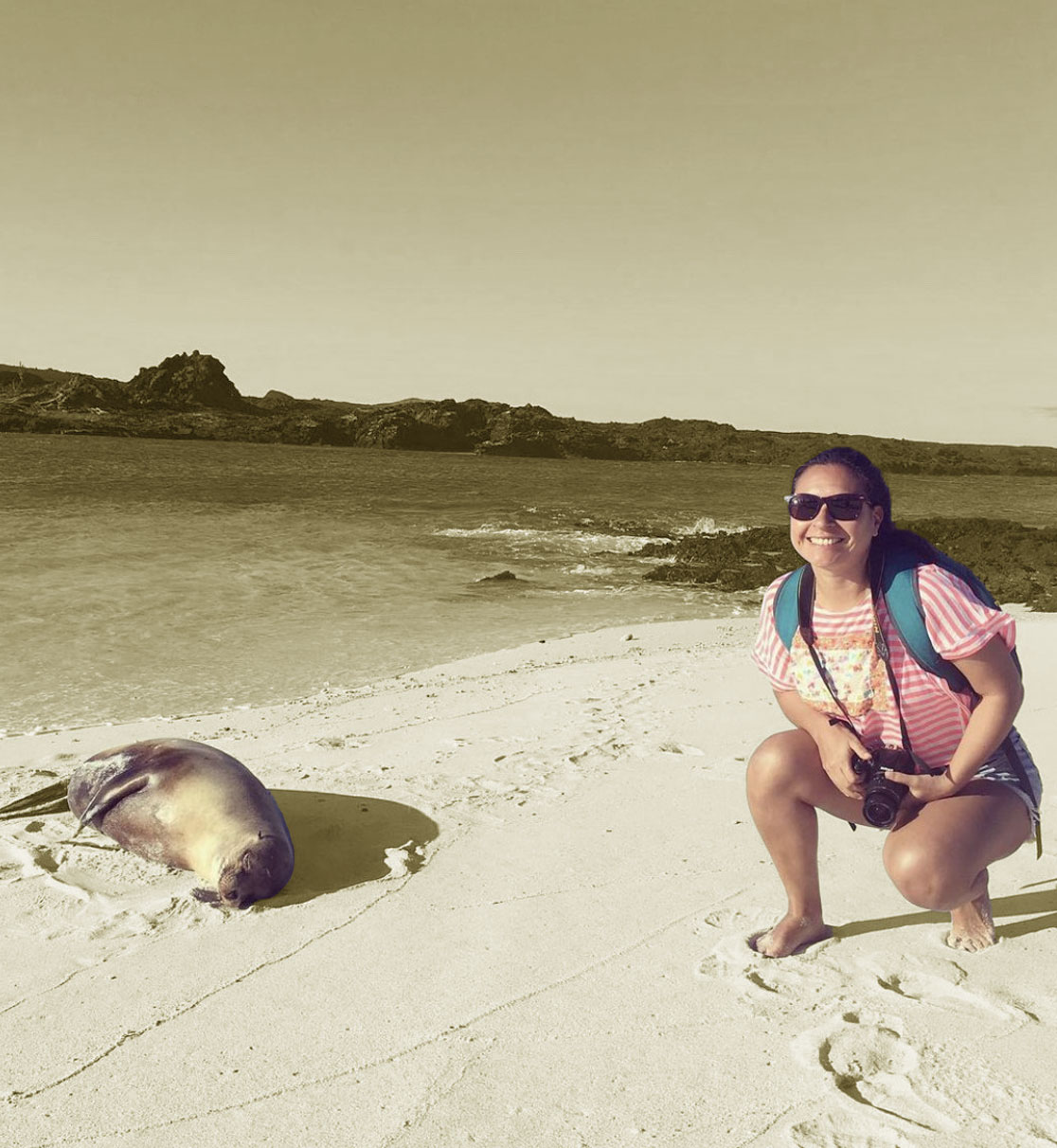
Elizabeth Cabrera Lima, Peru
We are experts in planning personalized travel experiences in Latin America, so talk to one of our advisors today to start planning your adventure.
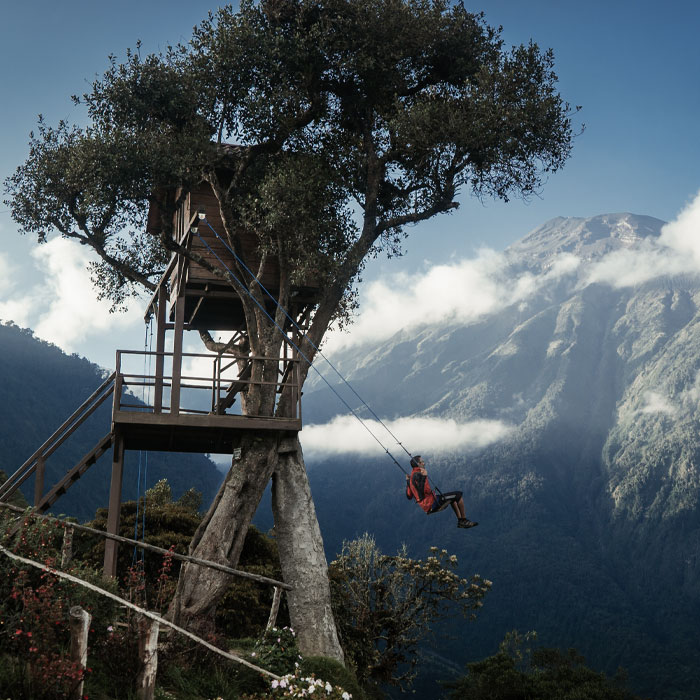
Adventure Tours
Get your adrenaline pumping with hikes and multi-day treks, jungle expeditions, white water rafting trips, mountain biking tours and more.
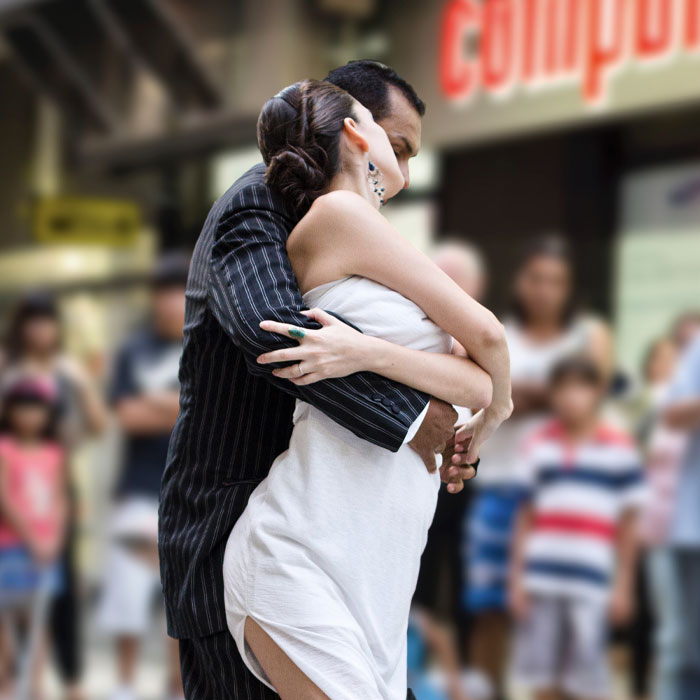
Cultural Tours
Discover the rich cultures of Latin America and learn about the unique customs and traditions maintained by its people.
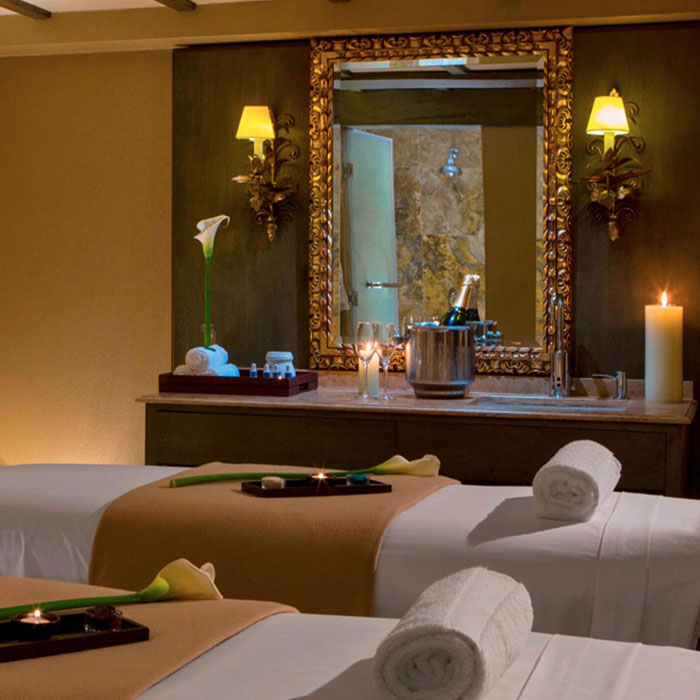
Spa & Wellness Tours
Take advantage of a free day to enjoy some rest and relaxation at a resort, or visit a spa to unwind after a long day of exploring.
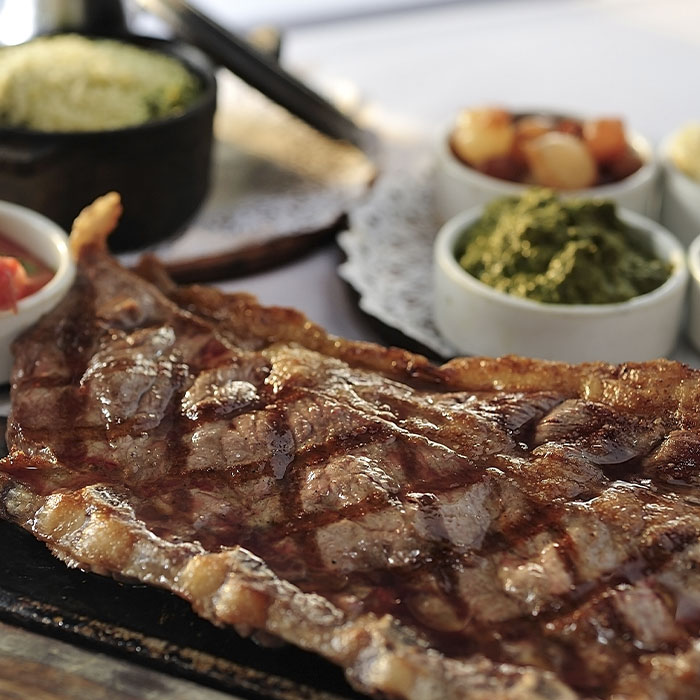
Discover the unique cuisines of Latin America and enjoy exclusive visits to some of the world’s top restaurants.
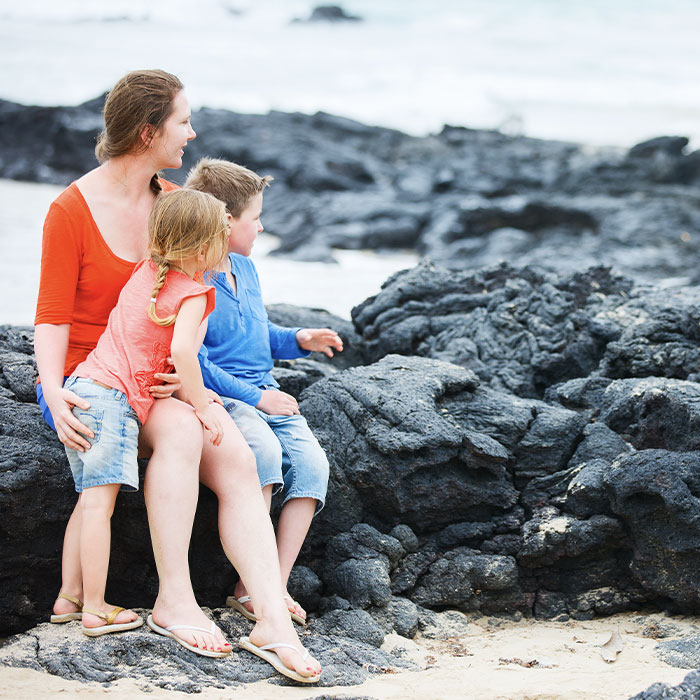
Family & Friend Tours
Our team can help you build the perfect trip for your family, whether your group has small children, teenagers, senior citizens, or all of the above.
Fully Customizable South America Tours
Vibrant capitals, breathtaking nature, and fascinating culture await you in Latin America
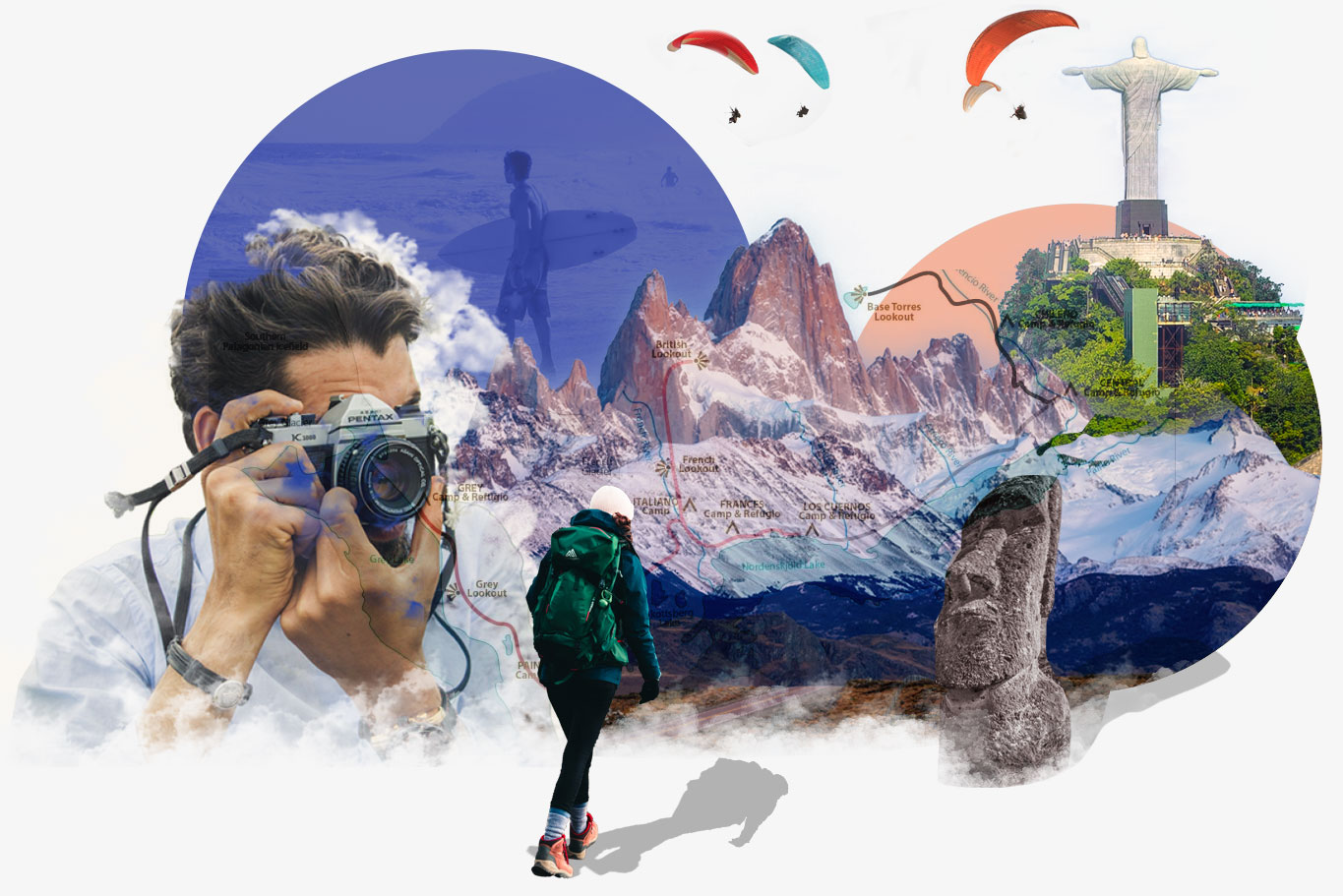
Since 1998, the Latin America for Less team has been composed of a diverse group of expert travelers and professionals hailing from cities across Peru and from countries around the world. Despite our different backgrounds, we share two things in common: a passion for exploring and a belief that responsive and caring customer service is the surest path to creating an excellent and comfortable vacation experience.
Book with confidence
We're flexible! Postpone your tour with zero cost up to 10 days prior to departure
(Optional. You may choose more than one)
TIP: Tell us the destinations you have in mind.
By submitting this form, you agree to receive recurring customer care text messages from Peru for Less at the number used when signing up. Msg frequency varies. Msg and data rates may apply. View Terms & Privacy .
We sell virtually all services available in Peru, Galapagos, Brazil, Argentina, Chile and Bolivia
- Travel Advisories |
- Contact Us |
- MyTravelGov |
Find U.S. Embassies & Consulates
Travel.state.gov, congressional liaison, special issuance agency, u.s. passports, international travel, intercountry adoption, international parental child abduction, records and authentications, popular links, travel advisories, mytravelgov, stay connected, legal resources, legal information, info for u.s. law enforcement, replace or certify documents.
Share this page:
Chile Travel Advisory
Travel advisory july 17, 2023, chile - level 2: exercise increased caution.
Reissued with obsolete COVID-19 page links removed.
Exercise increased caution in Chile due to crime and civil unrest.
Country Summary : Street crime (e.g., muggings, pick-pocketing, theft) is common in Chile. Rates of violent crime, such as assaults, homicide, carjackings, and residential break-ins, are increasing.
Large-scale demonstrations periodically occur in Santiago and other cities in Chile. Demonstrations can take place with little or no notice, and often result in disruptions to transportation, including public bus and Santiago metro services.
Read the country information page for additional information on travel to Chile.
If you decide to travel to Chile:
- Do not leave luggage unattended, even in locked vehicles.
- Always carry a copy of your U.S. passport and visa (if applicable). Keep original documents in a secure location.
- Avoid demonstrations.
- Follow the instructions of local authorities including movement restrictions and obey all curfews.
- Find a safe location and shelter in place if in the vicinity of large gatherings or protests.
- Review the Country Security Report for Chile.
- Enroll in the Smart Traveler Enrollment Program (STEP) to receive Alerts and make it easier to locate you in an emergency.
- Follow the U.S. Embassy and Department of State on Facebook , Instagram, and Twitter .
- Prepare a contingency plan for emergency situations. Review the Traveler’s Checklist .
- Visit the CDC page for the latest Travel Health Information related to your travel.
Travel Advisory Levels
Assistance for u.s. citizens, search for travel advisories, external link.
You are about to leave travel.state.gov for an external website that is not maintained by the U.S. Department of State.
Links to external websites are provided as a convenience and should not be construed as an endorsement by the U.S. Department of State of the views or products contained therein. If you wish to remain on travel.state.gov, click the "cancel" message.
You are about to visit:

Free USA & Canada
+1 800 6498776, +56 61 2691391.
More results...
- Puerto Natales
- Torres del Paine
- Tierra del Fuego
- Navarino Island
- Punta Arenas
- El Calafate
- Puerto Varas
- Backpacking
- Nature Trips
- Winter Trips
- Overland Trips
- Puma Tracking
- Discovering Torres del Paine
- Multisport Torres del Paine
- Calafate & Chaltén self guided
- Family Trips
- Riverside camp
Chile Travel Plans – Entry Requirements for International Travelers
Updated October 26th, 2022
On September 1st, the requirements to enter Chile were updated, eliminating the Traveler’s Affidavit (C19) and vaccine standardization. The requirements for entering Chile are now very simple. You either have to bring a proof of vaccination of your country of origin OR if you don’t have that, you need to show a negative PCR done within 48hours before your flight.
Now, at the time of embarking to Chile, the person must comply with the following:
REQUIREMENTS FOR NON-RESIDENT FOREIGNERS ENTERING CHILE:
– Certificate of vaccination issued in the country where he/she was vaccinated.
– If the traveler does not have the vaccination schedule for their country, they must show a negative result in a PCR test within a maximum of 48 hours from departure. This result allows travel but does not give access to the Mobility Pass.
– Diagnostic tests will be carried out randomly at the entry point to Chile. Confirmed cases shall be isolated according to the general health regulations.
– Meanwhile, those who are under 18 years of age do not have any requirements to enter Chile.
As of October 1st, mask use has been eliminated with the exception of health establishments. Use of a mask is still recommended in public and private transport, crowds and in people with symptoms of COVID.
Mandatory requirements to enter Rapa Nui:
– Negative PCR test result taken 24 hours before boarding. An antigen test from a health center will be allowed in minors under 6 years old. – Mobility Pass (complete vaccination scheme and vaccine standardization) – Single Entry Form – Round-trip ticket – Reservation at a tourist service registered in SERNATUR or invitation letter from the Provincial Delegation. – 7 day health follow-up
* Along with these requirements, passengers flying from abroad shall be tested with a mandatory antigen test upon their arrival on Rapa Nui
Vaccine approval is voluntary. We recommend processing it, since it gives access to the Mobility Pass, which allows entry to restaurants, theaters, buses, among others. Get it here . Once the request has been submitted, it will be approved or rejected within a maximum period of 48 business hours. If no response is received within that period, a Temporary Mobility Pass will be issued for 96 hours.
Chile is ranked amongst the Top 3 countries for its effectiveness of its vaccination campaign #YoMeVacuno and to date more than 92% of the population has completed full vaccination!
Throughout the country it is still mandatory to wear a mask in almost all public indoor settings. Additionally, it’s encouraged to practice physical distancing of at least 1 meter and regular washing or sanitization of hands. Airlines and many tourism operators require guests to use a disposable 3 layer or KN95 mask.
Many travelers are already planning their next trip to the eighth wonder of the world for the upcoming season . Travelers are searching for iconic experiences that provide safety, privacy, and comfort. Some of the best experiences include the famous Paine Big Circuit , W Trek Plus, Discovering Torres del Paine , Overland Tierra Del Fuego , Trekking the Spirit of Aysén , Patagonia Estancias Horseback Ride , & the 3 Day Fast Track W .
We advise each guest to please visit https://chile.travel/en/planviajarachile for additional information or contact one of our trip specialists who can help with details, questions or concerns about traveling to Chile.
Five of Torres del Paine’s Most Undiscovered Experiences
We declare a climate emergency, chile nativo’s climate action plan.
- Why travel with us?
- Guest Review
- Travel Insurance
- Our Safety Mission
- Press Release
- Terms & Conditions
- Code of Conduct Responsible Tourist
- Sustainability Policy
- Travel Professionals
HEADQUARTERS
Eberhard #230 Puerto Natales, 6160000
OPERATION OFFICE
Monday – Friday 9 am to 1 pm / 3 pm to 7 pm Saturday: 9 am to 1 pm
+56 61 2411835
SALES OFFICE
Monday to Friday 9 am to 2 pm / 3 pm to 7 pm
🇺🇸 +1 800 6498776 🇨🇱 +56 61 2691391

Improve your experience
Privacy overview, regarding the current situation in chile, & our operations in patagonia.

IMAGES
VIDEO
COMMENTS
1. Chile is amongst the safest countries on Earth. Chile is a very safe destination for travelers in South America. According to the Global Peace Index (updated every year), Chile currently ranks as the 27 th safest country on the planet. It is usually considered the safest country in South America, together with Uruguay.
14 things you need to know before you come to Chile
Travel to Chile Plan
Family Travel. 8 of the best things to do in Chile with kids. Sep 23, 2023 • 7 min read. With some patience - and a bit of basic Spanish - the thin South American nation of Chile can be the perfect setting for a family adventure.
Chile Travel Guide. Last Updated: September 3, 2024. Chile is one of the most slender and longest countries in the world — it's just 150 miles across at its widest point! From the snow-capped volcanoes of Patagonia and blistering heights of the Andes to world-class wineries and Maoi sculptures of Easter Island, there are a lot of wonderful ...
Read the country information page for additional information on travel to Chile. If you decide to travel to Chile: Do not leave luggage unattended, even in locked vehicles. ... There are no legal restrictions on adult same-sex sexual relations or the organization of LGBTQIA+ events in Chile. Since 2022, under Law 21400, same-sex marriage is ...
South America's skinniest country spans a volcano-fringed desert, fertile wine valleys, pristine fjords, and glacier stippled mountain ranges making it the ultimate destination for adventure travelers. This guide to Chile is a one-stop-shop for planning, covering everything from must-see places, tantalizing local cuisine, and money-saving ...
Updated October 4th, 2022 Dear Traveler, We are very happy to announce that there are currently no travel restrictions in Chile. Together with the above mentioned, it is mandatory to comply with the following requirements: You only have to present the vaccination certificate issued in your country when boarding to Chile.
Starting at 5am on Wednesday, March 31, new measures go into effect for travelers entering Chile from anywhere in the world. All travelers entering into Chile, regardless of the country they are coming from or the region they are going to (and regardless whether they have been completely vaccinated against COVID-19 with which ever vaccine), must complete 10 days of mandatory quarantine or ...
Update: As of September 1, 2022, Chile's travel requirements were amended to make it easier for foreign travelers. While we strongly recommend presenting proof of vaccination (as it is equivalent to a Mobility Pass), you may also present a negative PCR test dated within 48 hours of departure to enter Chile.
Requirements for entering Chile Sworn Statement: travelers must complete the "Traveler's Sworn Statement" online form 48 hours before boarding. On this form the traveler will provide contact information, health and travel information and will accept the conditions for entry into Chile.
These are the most epic places in Chile (from north to south), so you can put them on your 2022 Bucket List. ¡Hasta luego! 1. San Pedro de Atacama. 1700 kilometers north of Santiago de Chile, you'll find the most fascinating destination in the Atacama desert. San Pedro de Atacama has been growing over centuries around an oasis in the Puna de ...
Although you can reach Chile through connecting flights from pretty much any location in North America. Expect to pay between USD$1,000 - $1,200 for a roundtrip flight during peak seasons. But also keep an eye out for last minute flight deals. Or, alternatively, book your ticket well in advance to avoid higher fees.
Chile has changed its entry requirements, ... Last updated: 10:27 AM ET, Thu March 17, 2022. Chile has updated its entry requirements on March 8, ... Additionally, foreigners arriving in Chile must also present proof of travel insurance coverage with a minimum of $30,000; plans must include COVID-19-related illness and expenses. ...
LATEST CHILE COVID-19 NEWS: 21st May 2022 - Rapa Nui (Easter Island) is set to reopen to tourism on 1st August 2022. Source. 1st May 2022 - Chile's land borders reopen. Source. 17th April 2022 - Chile will fully reopen land borders with Argentina, Bolivia and Peru from 1st May. Source.
Bus from La Serena to Valparaiso: 9,000 CLP / $12 per person. Return local (micro) bus from Valparaiso to Viña del Mar: 1,500 CLP / $2 per person. Bus from Valparaiso to Santiago: 2,250 CLP / $3 per person. OUR TOTAL COST OF TRANSPORTATION IN CHILE CAME TO $107.34. THAT'S AN AVERAGE OF $8.26 PER DAY, OR $4.15 EACH.
Entering Chile as a Tourist in 2022. Rooftop view in Santiago, Chile. First things first: check your home country's government website to see what the typical entry requirements are and if you can visit visa-free, like you would during any time. From there, your home country's government website should list the specific health/COVID ...
The Best of Chile in 2 Weeks: Travel Itinerary
6-8 Days. 9-11 Days. 12-15 Days. 16+ Days. Undecided. Next 1/2. [email protected]. Discover the unique cities and incredible natural beauty of Chile with these fully-customizable Chile tours and vacation packages.
By Newsdesk Mar 17, 2022 11:28am. South America Chile Tourism Federal Travel Regulations Travel News. ... For more information, visit www.chile.travel. Related Stories
Chile Travel Advisory
Chile Covid-19 Entry Requirements: Travelers must have a negative PCR test taken within 72 of boarding their flight. Complete the "Traveler's Affidavit" form online up to 48 hours before boarding. This will generate a QR code that proves this step has been completed. Travelers must have health insurance with a minimum coverage of USD 30,000.
Updated October 26th, 2022. On September 1st, the requirements to enter Chile were updated, eliminating the Traveler's Affidavit (C19) and vaccine standardization. The requirements for entering Chile are now very simple. You either have to bring a proof of vaccination of your country of origin OR if you don't have that, you need to show a ...